Introduction
Generative AI and Predictive AI are two subsets of artificial intelligence that serve different purposes and utilize distinct methodologies. Generative AI focuses on producing new and original content by learning from data patterns, making it ideal for creative industries like art, design, and music. On the other hand, Predictive AI uses statistical models and algorithms to recognize patterns within historical data, enabling it to anticipate future events or outcomes.
This technology is widely used in fields such as sales forecasting, stock market analysis, and weather prediction. While Generative AI emphasizes creativity and originality, Predictive AI prioritizes accuracy and reliability. Both technologies have significant applications and are reshaping various industries.
Generative AI is revolutionizing creative fields, automating complex document creation, and enhancing virtual reality experiences, while Predictive AI is driving sales and marketing strategies, optimizing investment decisions, and improving healthcare diagnostics. The integration of these technologies holds great potential for the future of AI, expanding the horizons of what can be achieved in terms of creativity and predictive capabilities. However, as these technologies continue to advance, it is important to address ethical considerations and ensure responsible use.
What is Generative AI?
Generative AI is at the forefront of artificial intelligence, enabling machines to produce new and original content by learning from data patterns. This innovation, which encompasses cutting-edge Large Language Models (LLMs), has made significant progress in emulating human creativity, generating outputs in various forms such as text, images, and music. These models, which leverage deep learning and neural networks, are evaluated through the lenses of creativity theories, focusing on the dimensions of value, novelty, and surprise. Margaret Boden’s research on creativity, which examines the product, process, press, and person, provides a foundation for understanding the creative capabilities of LLMs. However, while these advanced AI models can generate surprisingly high-quality creative work, they are not without limitations. They highlight the ongoing discussion about machine creativity and its societal influence, as these innovations continue to advance and impact various industries. Despite the challenges, 46 percent of company chiefs in a PwC survey anticipate that generative AI will boost profitability in the upcoming year, reflecting the potential of this field in reshaping the innovation landscape across diverse sectors.
What is Predictive AI?
Predictive AI utilizes a blend of statistical models and algorithms to recognize patterns within historical data, enabling it to anticipate future events or outcomes. This tool is a key component in fields such as sales forecasting, stock market analysis, and weather prediction. For instance, in B2B sales, predictive AI has started to show significant business outcomes, with companies reporting impactful results from their initial implementations of generative AI. The technology is not only improving productivity but is also becoming an essential tool for driving sales strategies.
The effectiveness of predictive AI in sales is echoed in the food and beverage sector, where demand forecasting takes into account cyclical patterns dependent on dates, weather conditions, holidays, and economic trends. For example, a model initially developed for Auchan Ukraine for predicting daily demand for food products was later successfully adapted for use in Romania and France, underscoring the adaptability of AI in various markets.
In the field of stock market predictions, researchers are utilizing social media, macroeconomic information, and search engine information to forecast stock price movements and volatility. Despite the intricacy of financial markets, predictive AI is improving both technical analysis, which concentrates on historical stock prices, and fundamental analysis, which incorporates external information.
At the foundation of predictive AI are the disciplines of mathematics and statistics, which have been used in various business functions such as inventory management, customer service chatbots, and workflow management. These conventional approaches, such as regression analysis and time series analysis, remain significant and are enhanced by machine learning methods that examine patterns for more precise forecasting.
As companies incorporate AI into their operations, there is an increasing recognition of the significance of information quality and computational costs linked with predictive analytics. Businesses are advised to assess their data and available resources critically before selecting the appropriate predictive techniques, ensuring that the developed tools align with their strategic goals and provide explainable, robust decision-making capabilities based on data, not assumptions.
Key Differences Between Generative AI and Predictive AI
AI that creates and AI that forecasts are both parts of artificial intelligence, yet they serve different goals and follow different approaches. AI is skilled at synthesizing new forms of content, drawing from extensive datasets to inspire fresh ideas and creative solutions. It has become a driving force in industries that value originality, like art and design, by producing novel concepts that were previously inconceivable without human ingenuity. On the other hand, AI that predicts is the analytical opposite, specializing in forecasting by analyzing historical information to identify patterns and guide future decisions, thus playing a vital role in sectors like finance and healthcare where predicting results can be crucial.
While AI that creates by utilizing patterns from extensive data collections to invent, Predictive AI aims to make sense of existing information to project what might happen next. This distinction is critical: one generates the previously nonexistent, while the other interprets the existing to predict the forthcoming. The implications of these capabilities are profound. AI can be instrumental in automating the creation of complex documents, such as technical manuals for consumer goods and vehicles, enhancing accuracy and efficiency in communication. It is also being explored in newsrooms, where it can assist in reporting by providing new angles and insights, though its employment in journalism must be approached with caution to maintain ethical standards.
The potential applications of these technologies are vast. AI can, for instance, revolutionize the way loan applications are processed, providing more efficient and streamlined interactions. However, the challenges each AI faces are unique to their functions. AI that generates may occasionally falter in producing consistent quality, while Predictive Ai’s effectiveness is contingent upon the quality of the historical data it analyses. Acknowledging these limitations is essential in harnessing AI’s full potential responsibly.
Statistics show that AI is significantly influencing business innovation, particularly in marketing and product development. It is essential for companies to incorporate AI into their operations to stay competitive in an increasingly AI-centric world. These advancements not only offer new possibilities for growth and customer engagement but also raise ethical and technical dilemmas that need to be addressed. As AI reshapes our lives and industries, it is imperative to understand and navigate both the opportunities and the challenges it presents.
Generative AI Applications
Generative AI is revolutionizing creative industries by enabling the generation of unique and innovative outputs with a level of speed and volume previously unattainable. In the realm of art and design, AI is not just a tool but a collaborator, offering artists the ability to produce new patterns and artworks that push the boundaries of traditional methods. For example, an AI-generated piece was recently recognized in the creative photo category at the Sony World Photography Awards, highlighting the growing acceptance and potential of this field.
Music composition is another area where generative AI shines, composing original pieces that resonate with human emotions and styles, a testament to its advanced understanding of complex artistic expressions. This capability is not just a novelty; it’s a practical tool for musicians and composers to explore new musical landscapes and inspire creativity.
In the written world, generative Ai’s proficiency in text generation is creating waves, from crafting human-like chatbot dialogues to automated content creation. This technology is particularly valuable for its ability to produce high-quality documentation, such as user manuals and process guides, quickly and accurately, which can otherwise be a painstaking task prone to error.
The immersive experience of virtual reality is also being enhanced by generative AI’s aptitude for creating realistic environments that are indistinguishable from the real world. This advancement is not only pivotal for entertainment but also for fields like training and simulation, where life-like environments contribute to the effectiveness of the learning experience.
These applications are just the tip of the iceberg when it comes to the versatility of generative AI. As organizations adopt these tools, early adopters are reporting significant time savings in content-related tasks, and creatives are leveraging AI to rapidly prototype and refine ideas. While concerns about quality and authenticity remain, the evidence suggests that when used responsibly, generative AI can be a powerful ally in the creative process.
Predictive AI Applications
AI that uses advanced algorithms to analyze extensive information and detect patterns is transforming different industries. In sales and marketing, for instance, it propels businesses into the future by enabling them to predict sales, pinpoint potential clients, and tailor marketing efforts. This is no small feat, given that sales, one of our oldest professions, has always hinged on building trust and delivering value—now, gen AI is the new tool making these goals more achievable.
In the financial realm, where even the likes of Warren Buffett have expressed awe and caution over AI’s potential, predictive AI is adept at navigating stock market complexities, optimizing investment strategies, and rooting out fraud. Healthcare also reaps the benefits; with predictive AI, medical professionals can diagnose with greater precision, anticipate patient outcomes, and identify preventive measures.
Meanwhile, supply chain management has predictive AI to thank for streamlined inventory management, accurate demand forecasting, and logistics enhancement. With the widespread use of AI in operations, companies are observing substantial business outcomes and are keen to expand their AI capabilities, indicating that the integration of gen AI is not just likely but certain.
Leveraging predictive AI is akin to wielding a crystal ball, but one rooted in data and machine learning algorithms, such as regression analysis and neural networks. It’s a transformative force, driving innovation and customer engagement to unprecedented levels. Ai’s reach extends across business functions, with marketing and product development at the forefront of its adoption.
The statistics are telling: AI is poised to enhance worker productivity by 40% and could amplify labor productivity growth by 1.5% annually over the coming decade. In this AI-driven world, businesses are racing to keep pace, recognizing that AI is not merely a futuristic concept but a present-day imperative. It’s clear that predictive AI is not just a tool but a business revolutionizer, driving efficiency and innovation across industries.
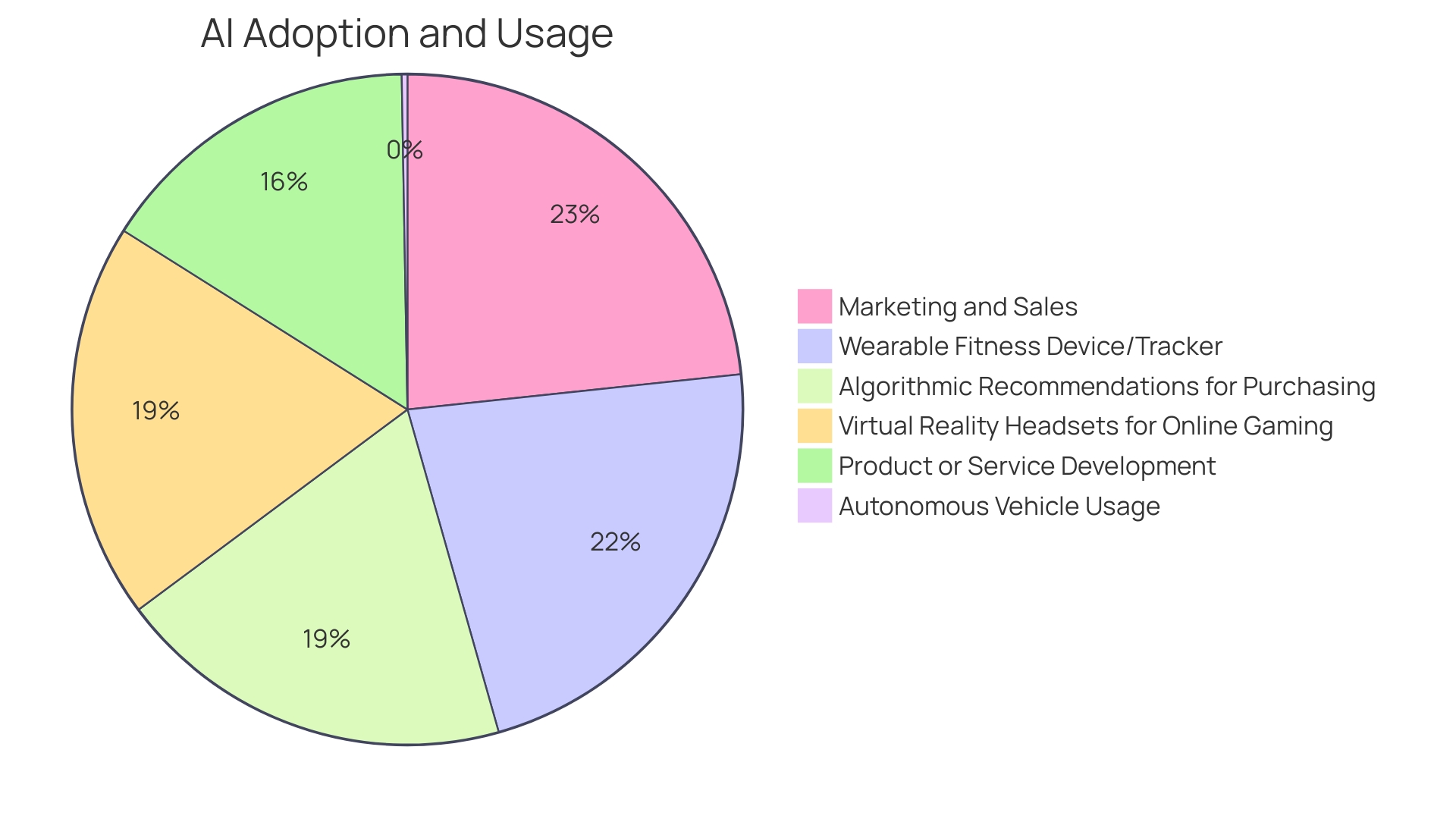
Training Complexity and Algorithmic Differences
Comprehending the distinctions between Predictive AI and Artificial Intelligence is essential in the field of AI. AI, well-known for its capacity to create unique content, relies on sophisticated training methods and algorithms. Its complexity is rooted in the goal to emulate aspects of human creativity, prompting the need for sophisticated learning mechanisms. For example, evolutionary algorithms, a precursor to modern AI that generates, employed principles of natural selection to evolve solutions progressively. On the contrary, AI based on statistical analysis is anchored, often utilizing algorithms like regression and classification to make informed predictions. This approach is based on established models that simplify reality—such as the application in computer chess, where the AI uses a well-defined strategy based on rules. While AI that generates aims for creativity and originality, Predictive AI concentrates on accuracy and reliability, typically needing less complexity in training but highlighting the significance of detail and precision for achieving a low error rate.
Real-World Examples and Industry Impact
AI is sparking a revolution across multiple sectors, especially in the pharmaceutical industry. According to the McKinsey Global Institute, this advanced technology may unlock an economic windfall, potentially adding $60 to $110 billion annually to the industry. By leveraging AI, pharmaceutical firms are not only expediting drug development and approval processes but also revolutionizing drug marketing strategies. This is a leap forward from traditional AI applications like AlphaFold2, ESMFold, and MoLeR’s protein structure predictions, which have already transformed our understanding of diseases.
In the realm of real estate, the effect of AI is equally transformative. With its capability to analyze extensive data sets, this innovation empowers investors to identify lucrative opportunities with unprecedented speed. Moreover, it’s reshaping building design, creating innovative marketing materials, and enhancing customer experiences, thus carving new avenues for revenue.
The economic forecast for AI that creates is impressive, with projections indicating a surge of up to $180 billion in market growth over the next eight years. It’s predicted that a staggering 90% of online content could be generated by AI as early as next year. This rapid advancement raises important discussions about the evolution of work, the creative process, and the ethical dimensions of AI-generated content.
Leading voices in the industry emphasize the significance of C-suite endorsement and the cultural shifts required for successful technology integration. Oliver Parker, Vice President of Global AI Go-To-Market at Google Cloud, underscores the necessity of defining business cases that bolster use case implementations. It’s evident that for organizations to leverage AI that fosters creativity, a strategic approach to adoption and a focus on measurable ROI are crucial.
As we stand at the cusp of these advancements, the real estate and pharmaceutical sectors are just two examples among many that illustrate the transformative potential and diverse applications of AI. The path of this advanced form of artificial intelligence indicates significant consequences for different industries, establishing it as a fundamental part of innovation and economic progress.
Future Prospects and Integration of Both Technologies
Gazing at the horizon, the fusion of AI that creates and AI that forecasts holds the potential to pioneer unexplored territories in artificial intelligence. These combined technologies can potentially generate more sophisticated and adaptable AI systems. The cross-fertilization of concepts and methodologies from both domains can lead to enhancements in Predictive AI using the creative capabilities of AI, and vice versa, thus expanding the horizons of what AI can achieve.
Highlighting the importance of this integration, Gartner’s 2023 Hype Cycle for Artificial Intelligence identifies the innovations likely to drive AI forward, including the areas of AI trust, risk, and security management. As AI continues to flourish, producing everything from artwork to innovative drugs and customized content, it also amplifies the importance of ethical deliberations, a viewpoint echoed by influential figures in the field who emphasize the imminent widespread acceptance of these advancements, despite obstacles like expenses and governance.
Moreover, real-world applications underscore the ethical imperative. For example, D-ID’s collaboration with Shiran Mlamdovsky Somech to animate images of domestic violence victims in Israel serves as a poignant case in point, illustrating both the power and the sensitivity required when handling AI-generated content.
This intersection of technology and ethics is not just theoretical. The use of AI in software development, as emphasized by SAP’s Michael Ameling, is transforming the field by enabling efficient code generation and promoting better collaboration among professionals. Meanwhile, the generative AI market is experiencing a surge, with significant growth during the COVID-19 pandemic as businesses sought innovative AI tools to streamline operations and enhance digital transitions.
As AI continues to evolve, these advancements will be instrumental in shaping a future where Generative and Predictive AI not only coexist but also complement and amplify each other’s capabilities, all while navigating the complex ethical landscape that accompanies such profound technological developments.
Conclusion
In conclusion, the integration of Generative AI and Predictive AI is reshaping industries and driving innovation. Generative AI revolutionizes creative fields, automates complex document creation, and enhances virtual reality experiences. Predictive AI drives sales and marketing strategies, optimizes investments, and improves healthcare diagnostics.
The potential for these technologies is vast, but ethical considerations must be addressed. AI-generated content should be approached with caution, and data quality and computational costs must be carefully considered.
Organizations should embrace these technologies strategically, with C-suite endorsement and a focus on measurable ROI. By doing so, they can harness the strengths of Generative AI and Predictive AI to enhance productivity and make informed decisions.
The integration of Generative AI and Predictive AI holds great promise for the future of AI. By combining creativity and predictive capabilities, we can push the boundaries of what AI can achieve. However, responsible use and ethical considerations are essential.
In conclusion, the integration of Generative AI and Predictive AI offers immense potential for innovation and productivity. By navigating the ethical landscape and embracing these technologies responsibly, we can drive positive change in various industries.
Introduction
Hyperautomation, the integration of artificial intelligence (AI), machine learning (ML), and Robotic Process Automation (RPA), is revolutionizing business processes by elevating operational efficiency. Unlike traditional automation methods, hyperautomation can tackle complex tasks that were once difficult to automate. With the synergy of AI and RPA, companies like Holiday Extras and Summer Health have streamlined operations and improved productivity.
Hyperautomation also leverages advanced technologies such as natural language processing and process mining, enabling businesses to extract critical data and gain insights for enhanced efficiency. By embracing hyperautomation, organizations can experience increased efficiency, enhanced productivity, improved accuracy, cost savings, scalability, and gain a competitive advantage. As hyperautomation reshapes the way businesses operate, it is crucial for organizations to understand its benefits and consider its implementation as part of a broader digital transformation strategy.
What is Hyperautomation?
Hyperautomation represents the pinnacle of business process innovation, integrating cutting-edge artificial intelligence (AI), machine learning (ML), and Robotic Process Automation (RPA) to elevate operational efficiency. Unlike its previous iterations, hyperautomation is skilled at addressing intricate tasks that once defied efforts to automate. It achieves this through the application of sophisticated AI and ML algorithms, enabling data analysis, decision-making, and proactive action-taking, all of which contribute to heightened productivity.
- Robotic Process Automation (RPA) is revolutionizing the way we handle repetitive tasks. It empowers software robots to mimic human actions in data entry, workflow execution, and customer service. The integration of systems through RPA can free employees from repetitive tasks, unleashing the full potential of the automated processes.
Using the synergy of AI and RPA, companies like Holiday Extras streamline tasks across multiple markets and enhance data fluency among non-technical staff, overcoming linguistic and data analysis barriers. Similarly, healthcare providers like Summer Health utilize automation to reduce the administrative burden on pediatricians, thereby improving patient care and reducing professional burnout.
- The introduction of Webtap.ai marks a significant milestone in web data extraction. By utilizing natural language processing, professionals can now collect essential data effortlessly, strengthening the role of automated processes in big data analysis and its invaluable contribution to operational efficiency.
- “The idea is based upon workflows and actions,” as experts note, hyperautomation simplifies software development by reducing complexity. It allows for the creation of powerful, actionable sequences in a fraction of the time it would take with traditional coding.
Reports emphasize an increasing contentment among professionals involved in mechanization projects. Hyperautomation is not only streamlining operations but also providing learning opportunities and career growth for those involved in the field, as evidenced by the State of the Automation Professional Report.
Hyperautomation, through its AI and RPA components, is not just a trend; it’s a transformative force reshaping the way businesses operate, enabling them to address challenges that seemed insurmountable before.

How is Hyperautomation Different from Traditional Automation?
Hyperautomation represents a revolutionary leap beyond traditional mechanization, incorporating artificial intelligence (AI) and machine learning (ML) to enhance its capabilities. Unlike conventional automation, which is hard-coded to perform specific functions, AI algorithms empower it to adapt and evolve in response to new scenarios without human intervention. This sophisticated approach not only automates simple tasks but also orchestrates complex workflows across an array of systems, departments, and technologies. For example, in the healthcare industry, the use of advanced automation can optimize the acquisition and implementation of digital technologies, guaranteeing secure, suitable, and compliant solutions.
In medical documentation, for example, pediatricians no longer need to manually transcribe notes; instead, AI-driven tools can assist in generating comprehensive summaries, freeing up valuable time for patient care. This is indicative of the broader trend of hyperautomation enabling professionals to focus on more strategic tasks by reducing the administrative burden.
A study conducted by TechRepublic emphasizes the different understandings of mechanization throughout businesses, underscoring that the primary objective is to mechanize the most beneficial operations to enhance customer interactions, increase sales, and enhance efficiency. Nevertheless, obstacles like competency deficiencies, technological restrictions, and cybersecurity anxieties may impede the implementation of enterprise-wide IT automation. Despite these obstacles, the integration of AI with automated technologies like SS&C Blue Prism’s document process automation, described as a ‘game-changer’, exemplifies the potential of hyperautomation to revolutionize traditional processes.
Grasping the intricacies of AI and machine-driven processes is crucial for organizations seeking to navigate the changing work environment. While automation has historically been used for repetitive tasks, the advent of AI has dramatically broadened the scope of potential applications, promising a future where the synergy between these technologies catalyzes innovation and efficiency.
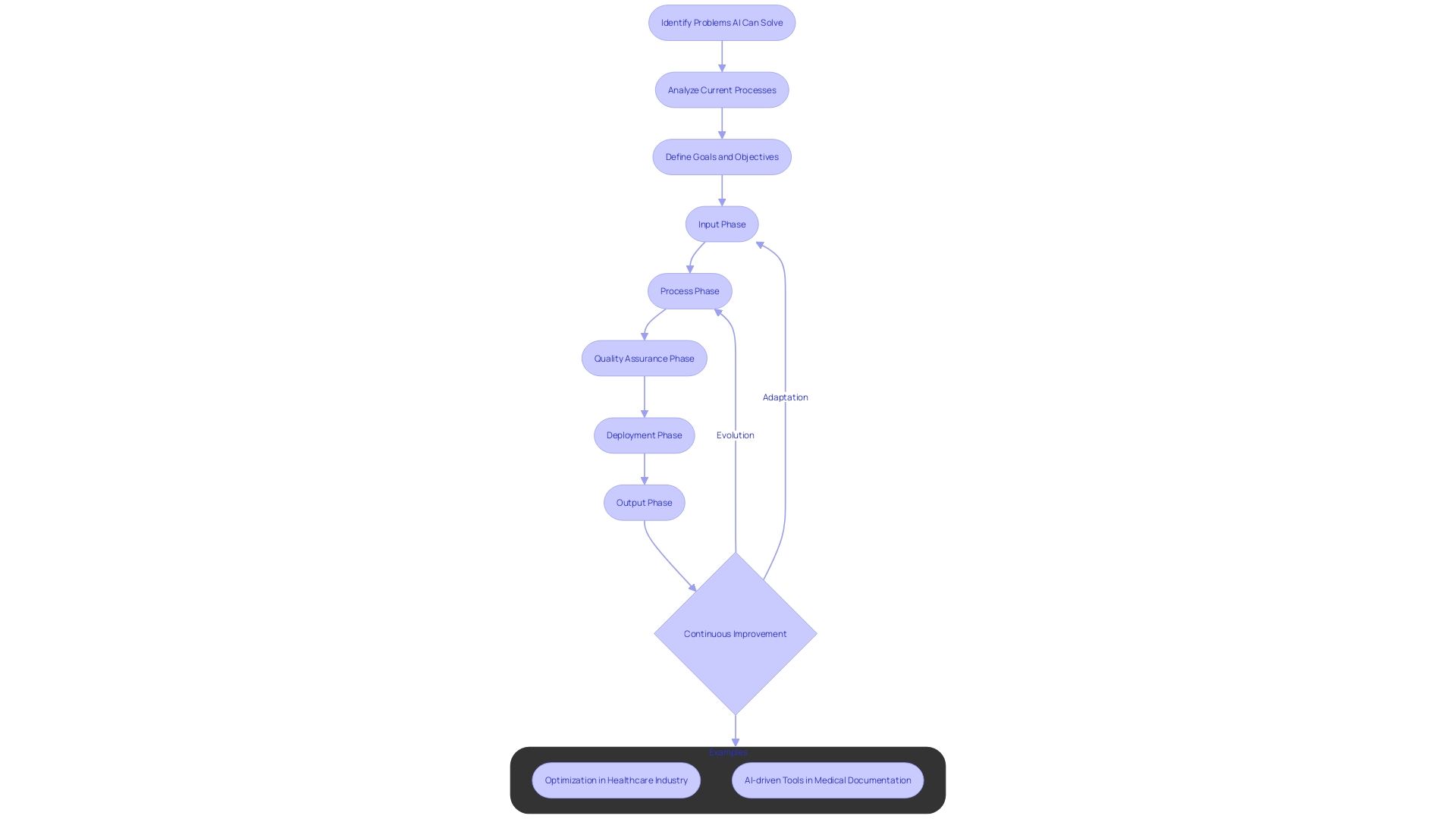
Technologies Involved in Hyperautomation
Hyperautomation stands at the forefront of operational advancement, blending an array of technologies to streamline and enhance processes. One of its foundational technologies, Robotic Process Automation (RPA), empowers organizations to liberate personnel from monotonous, rule-bound tasks by replicating how humans interact with digital systems. This not only boosts productivity but also allows employees to focus on more strategic activities.
Artificial Intelligence (AI) brings further sophistication to hyperautomation by integrating machine learning (ML) and natural language processing. These AI components enable systems to discern patterns, execute decision-making, and undertake complex cognitive tasks that were traditionally the domain of human intellect.
Machine Learning algorithms take this a step further, learning from vast datasets to anticipate outcomes and refine operational performance continually. Companies like Holiday Extras, which operates across multiple European markets, harness AI to manage diverse tasks like translating marketing copy into various languages, showcasing AI’s versatility in handling scale and complexity.
Process Mining emerges as another pivotal technology, offering deep insights into workflows. By analyzing and depicting business procedures, it reveals inefficiencies and clears the path for optimizing operations. For example, Louvre Hotels Group witnessed a significant decrease in the time spent on rate code maintenance by integrating mining techniques, saving hundreds of hours per month and highlighting the tangible benefits of hyperautomation.
Moreover, the rise of Low-Code App Development platforms is a game-changer, enabling rapid, custom software creation with minimal coding effort. This speeds up the process of streamlining, enabling organizations to quickly adjust to market demands. Kabannas, an up-and-coming UK hotel group, leveraged this technology to empower guests, offering them control over their digital interactions with the hotel, which is especially crucial outside conventional business hours.
The deployment of these technologies is not limited to specific sectors; it’s a global phenomenon. In the UK, AI trials in public transportation have demonstrated potential in improving safety and operational efficiency. At the same time, the service industry experiences a surge in the use of chatbots and virtual assistants, showcasing the widespread acceptance of these technologies.
It’s important to note that while automation can occasionally displace jobs, it more often creates new opportunities and enhances existing roles, as indicated by the International Federation of Robotics’ report on the surge of industrial robots. The ultimate objective of the process of full automation is not to substitute the human labor force but to enhance it, guaranteeing that enterprises stay competitive and innovative.
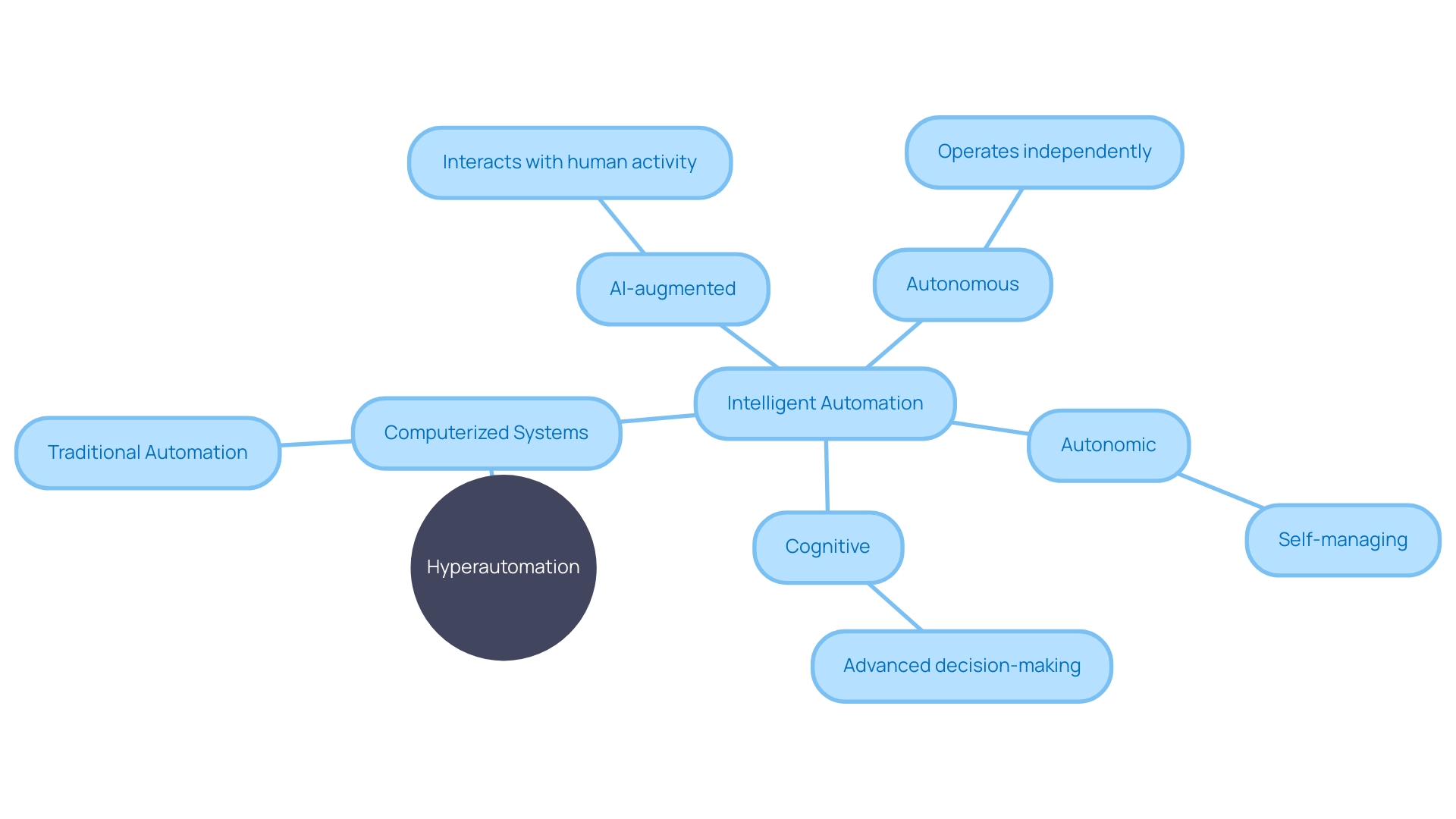
Benefits of Hyperautomation
Embracing hyperautomation is a strategic move for businesses aiming to enhance their operational capabilities. It is not only about the mechanization of tasks but the coordination of methodologies and technologies, resulting in a transformative effect on efficiency and productivity.
- Increased Efficiency: Hyperautomation goes beyond simple task automation by integrating AI and ML algorithms, streamlining processes that once required extensive human intervention. This integration leads to a reallocation of resources, allowing employees to engage in strategic activities that add greater value to the company.
- Improved Efficiency: With the capability to automate intricate workflows and data-based tasks, the enhanced productivity drastically diminishes manual errors and processing durations. This leads to a more productive and agile organization, capable of responding swiftly to market changes and internal demands.
Enhanced Precision: The accuracy of AI and ML in advanced automation systems ensures tasks are performed consistently and correctly, minimizing the risk of errors that can arise from manual processing and offering a reliable level of quality control.
- Cost Savings: By reducing the dependence on manual labor and improving operational efficiencies, the use of advanced automation can drive down costs. This allows businesses to reallocate financial resources towards innovation and growth initiatives.
As operational demands grow, the scalable nature of this approach provides the ability to handle increased workloads without compromising on performance or quality, ensuring the organization can expand its capabilities as necessary.
Companies that implement advanced automation can deliver services more efficiently and effectively, gaining a competitive edge in the market. This advantage is evident in the ability to meet customer expectations with speed and precision.
Case studies, like the one of Holiday Extras, showcase the practical benefits of advanced automation. With a diverse customer base and a need for multi-language marketing copy, automation has enabled them to streamline operations and overcome the challenges of scale. Similarly, Summer Health’s use of hyperautomation in generating medical visit notes has freed pediatricians from administrative burdens, allowing them to dedicate more time to patient care.
Recent developments in RPA and AI technologies, as highlighted by experts such as Segura from SS&C Blue Prism, are transforming the manner in which organizations tackle mechanization. These technologies are now capable of extracting and structuring data, driving activities that were once too complex for traditional automation tools.
In the context of public transport, trials of AI technology in UK train stations have demonstrated the potential for enhanced safety and operational efficiency, while the TSA’s facial recognition program in the US aims to streamline security processes. These examples highlight the transformative nature of automation across various industries.
To remain competitive in a rapidly changing market, it is crucial for companies to grasp the entire range of advantages offered by advanced automation and to contemplate its integration as a component of a more comprehensive digital transformation plan.
Workflow Automation and Low-Code App Development
Embracing workflow mechanization is similar to setting the gears of hyperautomatization into motion. It’s where the orchestration of intricate processes comes to life, bridging gaps between disparate tasks, data silos, and system functionalities across varying departments and technological frameworks. The essence of low-code development platforms is found in their ability to democratize app creation. By offering a visual interface, these platforms empower those without extensive technical expertise to craft custom applications with only a minimum reliance on coding. This not only accelerates the digitization of workflows but also empowers business users to drive innovation, fostering a culture of proactive engagement in their efforts.
TotalEnergies Digital Factory (TDF), a wholly-owned subsidiary of TotalEnergies, stands as a testament to the transformative power of such technologies. With a mission to support the company’s strategic shift and digital metamorphosis, TDF has rolled out over 80 tailored digital solutions across 25 countries, revolutionizing legacy systems through the strategic use of APIs. Meanwhile, educational institutions like the Department of Electronic & Electrical Engineering are leveraging these tools to streamline administrative tasks such as managing personal tutorials and tracking student attendance, as highlighted by Emma Davies, the Department Coordinator.
The rise of low-code automation has been a game-changer in application development. It slashes the timeline for software deployment, as traditional coding practices, which are often intricate and lengthy, give way to rapid and responsive development cycles. This paradigm shift is not only about speed but also about sustainability, as Peter Tubak from Messe Munchen GmbH suggests, urging the integration of conventional software development wisdom to ensure that low-code solutions are robust and maintainable in the long haul.
Business management software (BPM) further complements this landscape by offering analytical insights into operational workflows, allowing organizations to identify areas ripe for improvement. As the demand for such tools escalates, solutions like Jira Work Management are rising to prominence, catering to both fledgling startups and established enterprises eager to refine their processes.
The advantages of workflow mechanization and low-code platforms are supported by convincing figures. A study deploying Forrester’s Total Economic Impact methodology reveals that investments in intelligent automation can lead to a stunning 73% net present value (NPV) revenue increase and a 5.4% compound annual growth rate (CAGR) over a span of three years. Such statistics not only quantify the value of these technological advancements but also serve as a clarion call for enterprises to adopt and adapt to the digital era.
AI-Powered Decisioning and Robotics
Hyperautomation combines the cognitive capabilities of AI with robotics to revolutionize how organizations make decisions and perform tasks. By integrating AI algorithms, systems become adept at analyzing data, leading to more accurate and rapid decision-making that parallels human intellect. This innovation is pivotal in refining complex decision-making processes that are essential to the strategic, operational, and tactical facets of a business. Robotics within hyperautomation predominantly employs software robots, or bots, to streamline repetitive and rule-guided tasks. These bots seamlessly interact with diverse systems and data sources, thereby facilitating automation across entire workflows. The advancement of AI in the domain is remarkable, with the quantity of scientific publications on AI and ML growing at an unparalleled pace, effectively doubling every two years. This fast expansion emphasizes the need for tools like Science4Cast, which forecast future AI research trends, ensuring that organizations stay at the forefront of technological advancements. Moreover, comprehending the impact of AI and automation on decision-making procedures is crucial. As highlighted by recent studies, global trust in AI varies significantly, which can affect the adoption rate of AI in decision-making and consequently influence a nation’s competitive edge in technology. With AI-driven insights, companies can innovate and maintain a strategic advantage, ensuring their operations remain competitive and aligned with the latest technological breakthroughs.
Process Mining and Insights
Hyperautomation leverages process mining to delve into the intricacies of operational activities. By collecting information from diverse sources such as transaction logs, this method applies sophisticated algorithms to uncover, monitor, and enhance business operations. The insights obtained from mining shed light on the effectiveness of the operation, bottlenecks, and opportunities for improvement, guiding organizations towards data-driven decisions to enhance their operations and improve overall performance. For instance, companies like ICL, which faces challenges in monitoring machinery under extreme conditions, can greatly benefit from this technology. They can obtain almost real-time visibility into their workflows, which is essential for enhancing operations and making well-informed decisions. Furthermore, mining can tackle particular problems like credit blocks in the order-to-cash operation, decreasing delays in order fulfillment for trustworthy clients and shortening the time to resolve such blockages.
Moreover, combining IoT and advanced analytics with mining allows enterprises to enhance their workflows seamlessly. As shown in the case of UK train stations using AI to boost safety and operational efficiency, the potential of these technologies to revolutionize business processes is vast. Meanwhile, companies like OnProcess are demonstrating how supply chain operations can serve as a strategic advantage, emphasizing the importance of efficiency and resilience in today’s competitive market.
Workflow digitization, a crucial element of hyperautomation, is quickly being embraced across different industries to automate repetitive tasks, improve communication, and streamline workflow. This not only reduces manual errors but also frees up valuable time for teams to focus on strategic initiatives. The variety of mechanization solutions accessible, from no-code to DevOps-centric platforms, speaks to the broad array of use cases and user needs in the mechanization space. As a result, organizations are able to streamline operations and achieve more with less effort.

The Role of Hyperautomation in Digital Transformation
Hyperautomation goes beyond mere task automation; it represents a foundational change in how businesses operate. It utilizes a combination of cutting-edge technologies, including artificial intelligence (AI), machine learning, and robotics, and utilizes them to revolutionize data-intensive and intricate procedures. An impressive instance is the order-to-cash workflow, where advanced automation systems like Palantir HyperAuto can analyze customer payment histories and intelligently handle credit blocks, reducing delays and enhancing efficiency.
Indeed, automation provides a dual advantage: It offers near real-time visibility into business processes, and it facilitates rapid, data-informed decisions. For instance, when faced with inventory shortages, companies can substitute products without compromising on customer satisfaction or operational flow. This arises from a profound integration of advanced automation with technologies like cloud computing, big data analytics, and the Internet of Things (IoT), creating a seamless digital ecosystem.
The advantages of implementing advanced automation are apparent in the wider operational context. It not only empowers organizations to enhance customer experiences but also drives substantial growth. As technology quickly advances, Ai’s role in digital enterprises continues to grow, encompassing everything from pattern recognition to predictive analytics. Robotics, a subset of AI, is automating tasks that are repetitive or hazardous, thereby improving operational efficiency and reducing costs.
However, the journey towards hyperautomation isn’t without its challenges. Reports indicate that while enterprises acknowledge the benefits, including improved customer service, increased sales, and higher productivity, many have yet to develop a comprehensive automation strategy. Skill gaps, technological limitations, and cybersecurity concerns are among the noted barriers. However, as we progress deeper into the digital era, the demand for companies to embrace such revolutionary technologies becomes increasingly crucial for sustaining competitiveness and encouraging innovation.
Phases of Implementing a Hyperautomation Strategy
The journey of hyperautomation unfolds through meticulously structured stages, each pivotal in transforming the operational landscape of an organization. In the initial phase, the focus is on discovering and prioritizing prospects for mechanization. Just as clinicians submit forms to assess new digital technology within NHS trusts, organizations must conduct rigorous evaluations to ensure the technologies they seek to adopt are secure, compatible, and meet compliance standards. This stage demands a keen eye to identify existing solutions that may already be in place but under-utilized or unknown to the broader organization.
The subsequent step is to forge a robust integration network. Similar to Specsavers’ approach to navigating the intricate web of global supply chains and in-house technologies, businesses must strive to connect disparate systems and applications. This integration is essential to facilitate a seamless data exchange, enabling comprehensive automation.
As we venture further, orchestration takes center stage. It’s about crafting and executing end-to-end automated workflows, drawing parallels with the structure and precision of assembling a case for work processes. This not only streamlines operations but also ensures that the most critical tasks are addressed first, paving the way for continuous optimization.
Governance and compliance form the bedrock of the fourth stage. In a world where classic tools like RPA and OCR are being revolutionized by AI, as noted by SS&C Blue Prism, it’s imperative to establish frameworks that uphold security and privacy while ensuring adherence to regulatory standards.
The last stage is the widespread implementation of advanced automation solutions. Here, the focus shifts to monitoring performance and instituting iterative enhancements. The impact of such deployment can be likened to the transformative use of AI in UK train stations, showcasing the potential for improved safety, reduced fare evasion, and enhanced efficiency while navigating ethical considerations.
Throughout each phase, collaboration is key. Parties with interests spanning across different sectors and comprising of both technology professionals and subject matter experts must come together, embodying the principle that each necessity must be thoroughly examined and assigned to a specific person, as highlighted by the Musk production algorithm. This collective effort is crucial to unlocking the transformative potential of advanced automation, ensuring that processes are not only automated but also aligned with the organization’s strategic vision and operational goals.
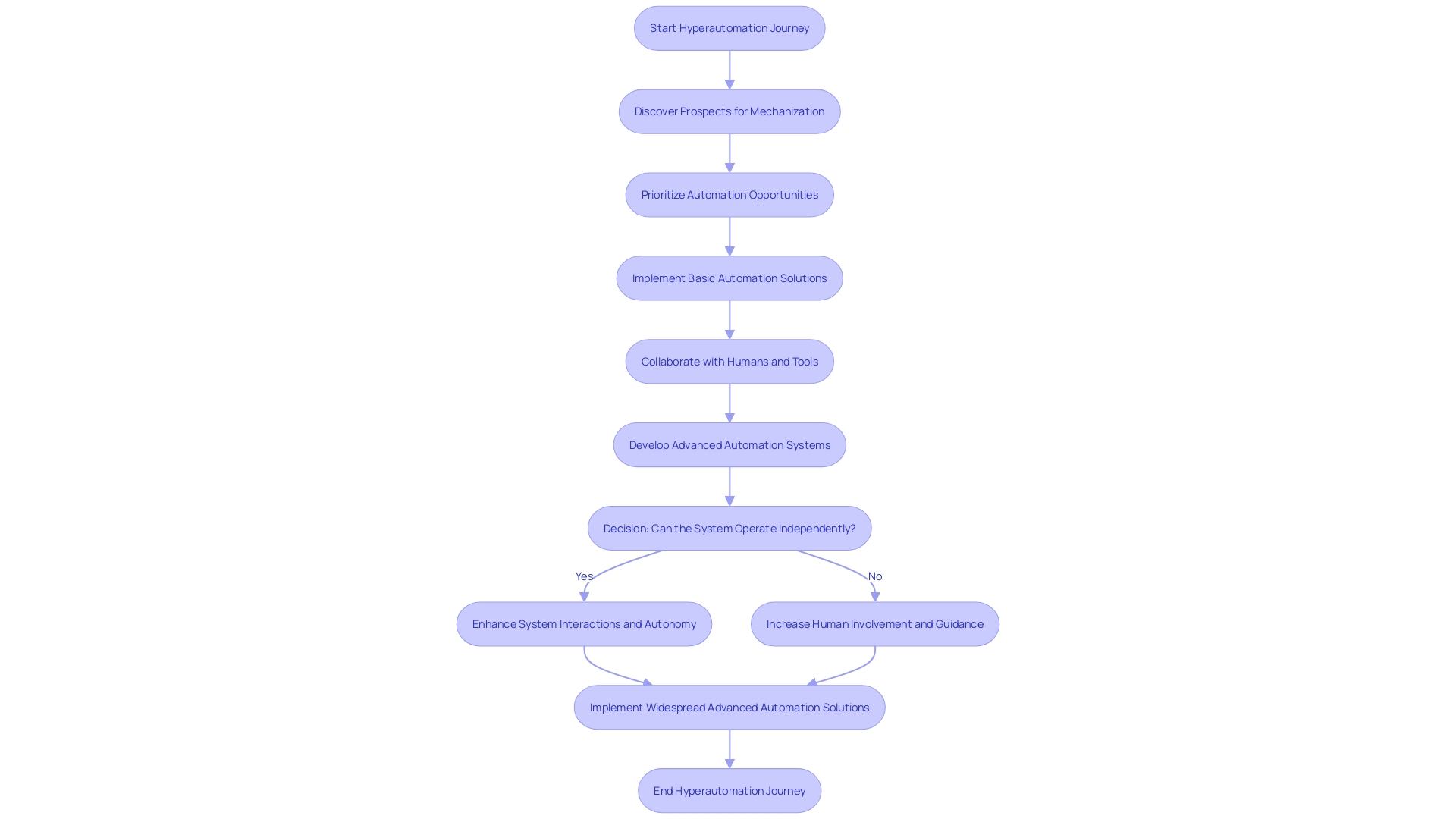
Real-World Examples of Hyperautomation
Hyperautomation is revolutionizing the way businesses operate by integrating advanced technologies like AI and machine learning with traditional automation methods. In customer service, automation powers chatbots that can handle a multitude of inquiries, delivering swift and personalized assistance. For example, a system named “Support answer” is engineered to provide immediate responses to customer queries directly within the support interface, enhancing the user experience significantly.
In the field of supply chain management, advanced automation is a game-changer. It orchestrates complex processes from order fulfillment to inventory control, and logistics coordination. By doing so, it not only streamlines operations but also drives down costs significantly, fostering a more efficient supply chain ecosystem.
Financial operations are not excluded from the wave of advanced automation. Here, it’s deployed to automate intricate financial tasks such as managing accounts payable and receivable, streamlining invoice processing, and ensuring the precision and regulatory compliance of financial reporting. This implementation of advanced automation in finance leads to increased accuracy and a stronger commitment to compliance standards.
These examples reflect just a snapshot of the potential of highly automated processes. In the travel sector, companies such as Holiday Extras, dealing with the intricacy of offering services across various languages and markets, utilize advanced automation to handle growth and improve data fluency throughout their teams. And in the healthcare sector, services like OnCall Health by Qualifacts are revolutionizing telemedicine by automating the creation of various patient forms, thereby saving precious hours.
As hyperautomation continues to evolve, it’s evident that its impact is broad and profound, making it a cornerstone of digital transformation strategies across diverse industries.
Deploying Hyperautomation at Scale
Hyperautomation—a term that encapsulates the use of advanced technologies including AI and machine learning to automate tasks and augment human capabilities—is revolutionizing business processes. To harness its full potential and achieve scalable results, it’s essential to navigate the deployment with a structured and strategic plan. Initiatives must start with well-defined objectives, identifying areas where mechanization can have a significant effect. For instance, Specsavers, with its intricate supply chain and specialized equipment, tailored its own technology solutions to streamline operations. Similarly, Summer Health leveraged automation to alleviate the administrative burden on pediatricians, allowing more focus on patient care. Moreover, Delivery Hero dramatically reduced downtime caused by account lockouts by automating the recovery process.
Governance is another foundation of successful automating processes. Properly managing compliance, security, and privacy is crucial, as exemplified by the evolving public discourse on privacy rights and the ethical use of AI, like the debates surrounding facial recognition in UK train stations and the TSA’s programs in the US. Moreover, the concerns raised in San Jose regarding Ai’s potential to infringe on personal liberties underscore the importance of establishing robust governance frameworks.
To ensure the successful adoption of these technologies, employee training and support are indispensable. The workforce should be equipped not only with the tools but also with the understanding of how to best utilize these technologies—transforming potential resistance into cooperation. Continuous monitoring of performance is imperative to identify and act on areas for improvement, echoing the practices of DevOps that emphasize ongoing development, operations, and quality assurance.
In the end, cultivating a culture that prizes innovation and continuous improvement is fundamental. By instilling this mindset, as seen in the transformative effects of the internet and mobile technology, organizations can position themselves at the forefront of their industries. By employing a methodical strategy, organizations can successfully navigate the intricacies of automated deployment, unlocking fresh efficiencies and capabilities that drive them towards their company goals.
Best Practices for Successful Implementation
To maximize the benefits of advanced automation, it’s essential to adopt a series of best practices tailored to enhance operational efficiency. This starts with a thorough understanding of business goals to ensure automation efforts are in sync with the company’s objectives. Taking inspiration from Holiday Extras’ approach, where different departments work together towards a common objective, strategies for advanced automation should involve collaboration, including stakeholders at different levels within the organization to promote acceptance.
Giving priority to tasks for mechanization necessitates thoughtful deliberation of their effect, intricacy, and appropriateness. For instance, automating the creation of medical visit notes, as seen with Summer Health, can significantly reduce administrative burdens and redirect focus to patient care. Choosing the right technology stack is another pivotal step. This decision should reflect the unique needs of the organization, just as UK public transport systems have adopted AI to boost safety and efficiency.
Empowering employees through training is another cornerstone of a successful hyperautomation initiative. By enhancing their skills in automated tasks, employees can effectively contribute to and adjust to new mechanized procedures. Monitoring and measuring the performance of these processes is essential for ongoing improvement, as evidenced by the case studies in the ‘Total Economic Impact’ report, which highlights a 73% NPV benefit from intelligent automation.
Finally, keeping stakeholders informed about the advantages and achievements of automation initiatives is crucial. Regular communication, akin to the transparency seen in the EU’s discussions on AI regulation, reinforces the positive impact of hyperautomation and encourages continued support and investment in these technologies.
Conclusion
In conclusion, hyperautomation is revolutionizing business processes by integrating AI, ML, and RPA to elevate operational efficiency. It streamlines operations and tackles complex tasks, providing increased efficiency, enhanced productivity, improved accuracy, cost savings, scalability, and a competitive advantage. Real-world examples demonstrate the practical advantages of hyperautomation in companies like Holiday Extras and Summer Health.
To successfully implement hyperautomation, organizations should set clear goals, involve stakeholders, prioritize tasks, choose the right technology stack, empower employees through training, and monitor performance. Communication with stakeholders is crucial to reinforce the positive impact of hyperautomation.
By embracing hyperautomation, organizations can experience increased efficiency, enhanced productivity, improved accuracy, cost savings, scalability, and gain a competitive advantage. It is essential for businesses to understand the full spectrum of hyperautomation benefits and consider its implementation as part of a broader digital transformation strategy. Hyperautomation reshapes the way businesses operate, and organizations must embrace its potential and leverage its transformative power.
Introduction
MS Edge WebView is a powerful tool that allows developers to seamlessly integrate web content into their applications, bridging the gap between desktop software and web interfaces. By embedding web content within an app, MS Edge WebView provides a smooth browsing experience and enables the use of web functionalities without leaving the application environment. This technology is particularly beneficial for developers modernizing legacy desktop systems, as it allows for incremental enhancements with web features instead of undertaking a complete overhaul.
Embracing MS Edge WebView aligns with current industry trends, such as the integration of AI tools and the rise of Progressive Web Apps. This article explores various aspects of MS Edge WebView, from setting up the development environment to troubleshooting common issues, empowering developers to leverage the full potential of this transformative tool.
Understanding MS Edge WebView
MS WebView is a crucial tool for developers seeking to seamlessly integrate web content into their software. It’s a link between the strong world of desktop software, with their abundant features and functionalities, and the dynamic realm of web-based interfaces. By incorporating web content directly within an app, MS WebView ensures a seamless browsing experience and enables the utilization of web functionalities without ever exiting the environment. This technology is particularly advantageous for developers navigating the complexities of modernizing monolithic desktop systems. Instead of taking on the enormous undertaking of completely revamping these systems for the webâan endeavor that can last for yearsâdevelopers can now utilize MS WebView to gradually improve software with web features.
The incorporation of web content into desktop software through MS WebView is a strategic maneuver that corresponds with the most recent industry patterns identified by experts like Kevin Okemwa. This approach not only maintains the integrity of tried-and-true software but also propels it forward by leveraging cutting-edge web technologies. The transformative impact of this tool is echoed in the significant advancements in edge computing, which similarly aims to bring data processing closer to the source, thereby reducing latencyâa benefit that MS WebView extends to application users by providing immediate access to web content.
Furthermore, adopting MS WebView aligns with the current trend in the tech industry, where developers are seeking to incorporate more AI into their workflows. With statistics indicating a significant adoption of AI tools such as ChatGPT and GitHub Copilot among developers, MS WebView serves as a supplementary technology that enables AI-driven functionalities within software. Progressive Web Apps (PWAs) are another important trend in this field, and MS WebView empowers these web apps to unleash their complete potential within desktop software, providing offline capabilities and notifications, as mentioned by industry reports.
In this environment of fast technological advancement and changing developer ecosystems, MS WebView emerges as a valuable resource, allowing developers to create new ideas based on current programs while embracing the internet’s adaptable, interconnected essence.
Setting Up Your Development Environment
Embarking on the journey of JavaScript development means setting up a robust development environment that can support your coding endeavors. You’ll need to install the MS WebView runtime, which serves as a cornerstone for creating modern programs that combine the strengths of desktop software with the versatility of web experiences.
Visual Studio Code (VS Code) is a popular choice among developers for its lightweight design and extensive extension marketplace, where you can find tools to tailor the environment to your needs. Additionally, embracing Node Package Manager (npm) will streamline your workflow by managing the modules—these are the building blocks that can be leveraged to enhance your project’s functionality without starting from scratch.
The concept of Progressive Web Apps (PWA) is reshaping the development landscape, offering a native-like experience, consistent across varied devices and capable of offline operation. This method is particularly advantageous when dealing with the intricacy of transitioning legacy desktop programs to the web.
Statistics from the State of Developer Ecosystem 2023 report, derived from over 26,000 developers’ responses, highlight a surge in the adoption of AI tools like ChatGPT and GitHub Copilot. These tools are becoming integral to developers’ toolkits, aiding in routine coding tasks and fostering a more efficient development process.
As you prepare to develop with MS WebView, keep in mind that you’re building on a rich history of technological innovation and community knowledge. It’s an exciting time to be a developer, with the wealth of resources available to support your journey.
Creating a Project and Adding MS Edge WebView Control
Starting the integration of MS WebView control into your software is a progressive move, utilizing the powerful capabilities of web technologies within the well-known structure of desktop programs. As you initiate a new project, the process involves harmonizing the modern capabilities of MS Edge WebView with both WPF and WinForms platforms. The guidance provided here is meticulously crafted to elucidate the procedure for embedding this control, ensuring developers can confidently enhance their software with the rich functionalities and seamless web integrations that individuals expect in today’s interconnected digital landscape. By utilizing this advanced control, developers can bypass the challenging process of breaking down legacy desktop applications into web-based components, which is particularly intimidating for expansive enterprise systems. Instead, this strategy allows for the utilization of long-established development investments, facilitating a smooth transition into modernized interfaces that resonate with contemporary user experiences.
Configuring and Customizing MS Edge WebView Control
Incorporating the MS Edge WebView control into your program provides a wide range of customization choices that can greatly enhance your program’s web functionality. Beyond just establishing the starting URL, developers can optimize the control by handling navigation events and enabling JavaScript, which are essential for a smooth experience.
For example, think about the situation where your software needs a strong web view. Using the MS Edge WebView, you can incorporate functionalities similar to a web browser within your desktop program, offering a familiar and immersive experience for individuals. This is especially beneficial for situations that have evolved over time and now seek to integrate modern web technologies without complete redevelopment.
Moreover, recent developments in the Microsoft ecosystem highlight the importance of security and privacy. By incorporating the most recent enhancements, such as password-free verification alternatives, programmers are able to create software that not only adheres to existing internet protocols but also tackles individuals’ privacy worries by reducing dependence on passwords.
By adopting these advanced setups and staying updated with the latest industry trends, as mentioned by tech experts like Kevin Okemwa, guarantees that your software stays relevant and competitive. By utilizing these capabilities, you can develop a more customized and smart solution while harnessing the power of AI with tools like Copilot in Microsoft Shopping to enhance the shopper experience within your program.
Handling User Interactions and Events
Gaining expertise in interactions within the MS WebView is essential for developing a dynamic experience. To ensure smooth interaction, you’ll want to capture input from individuals and respond to events such as button clicks within your application. For instance, consider integrating functionalities similar to those found in Microsoft Edge, like price history and comparison tools. These characteristics have empowered individuals to save over $4 billion in the past year alone, demonstrating the substantial impact of well-designed interaction capabilities.
By utilizing APIs for speech synthesis and recognition, you can further enhance the interactivity of your software. Picture allowing individuals to engage with your application utilizing their voice, similar to engaging with a personal AI shopper in Microsoft Shopping. This level of complexity in user interaction not only enhances the individual experience but also streamlines their journey within your system.
Comprehending the Chromium Multi-Process Architecture is also essential, as it forms the foundation of the security and stability of interactions in Chromium-based browsers like MS Edge. Recognizing how to work within this framework ensures that your application remains robust and secure, especially when dealing with untrusted JavaScript code.
As you implement these features, be aware of the balance between innovation and individual autonomy. It’s crucial to guarantee that your UI design respects the individual’s preferences and choices, avoiding any practices that might unintentionally lead to individual inconvenience or competition concerns, as highlighted in recent critiques of browser integration within operating systems.
Integrating these insights into the interaction design of your application will not only make it more intuitive and engaging but also position it as a benchmark for effective UI in the digital landscape.
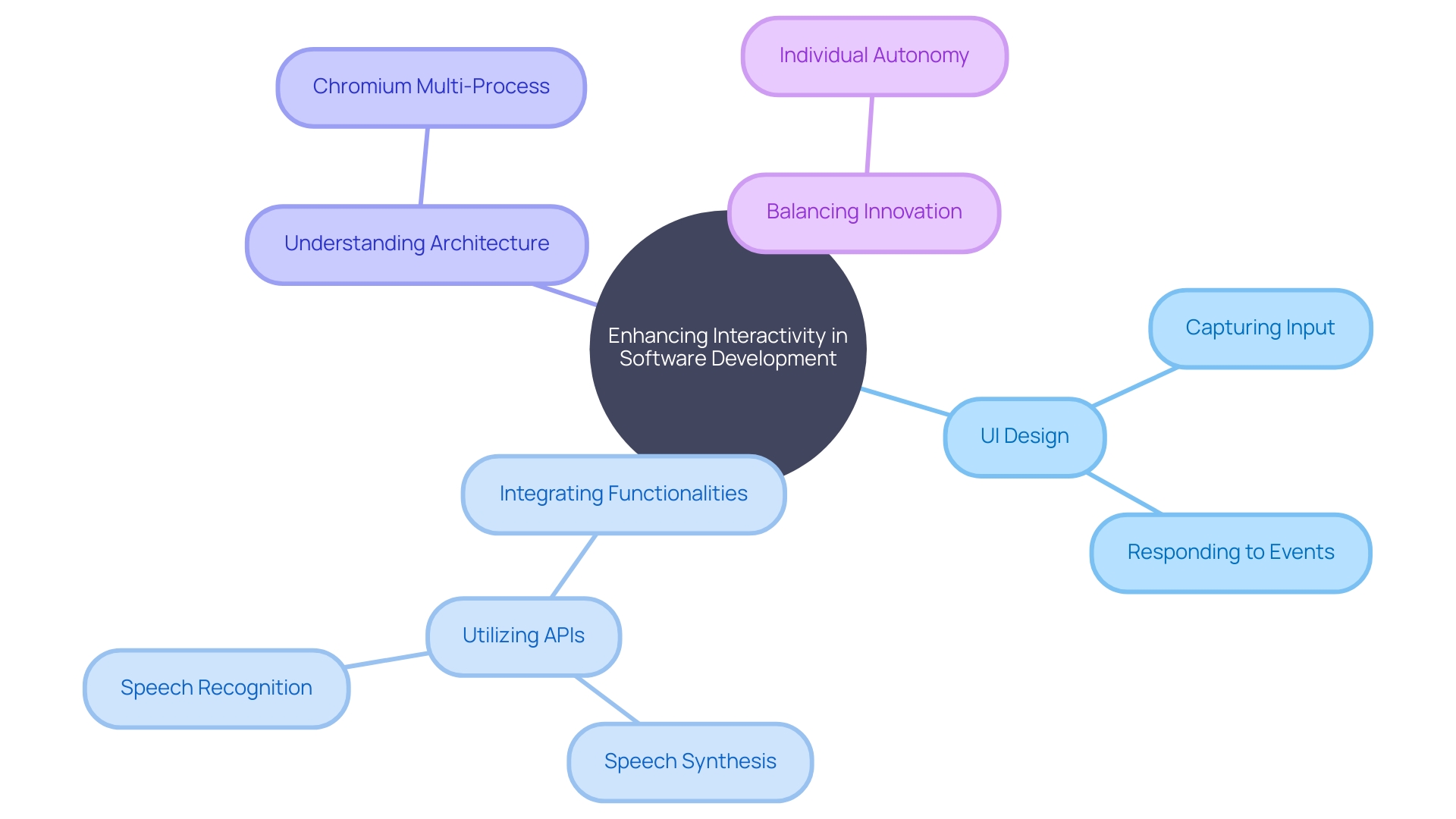
Managing User Data and Browser Settings
Mastering the management of data and browser settings within MS WebView is crucial for providing a superior experience while safeguarding data privacy. We delve into the specifics of how to efficiently store and retrieve data, oversee cookies, and fine-tune browser configurations. Moreover, we emphasize the significance of security measures and adherence to proven practices to ensure information remains protected.
In the digital space, the effective management of content systems is vital, as demonstrated by the Ford Foundation’s transition from a cumbersome CMS to a more streamlined content workflow. Likewise, in the context of MS WebView, preserving a streamlined and effective operation is crucial for both performance and security. Security is not just a feature but the foundation of trust, and as NetMarketShare’s evolution shows, focusing on verifiable data is increasingly important in our data-driven world.
Highlighting the control that users have over their browsing experience, recent updates to Microsoft’s web browser have brought in functionalities such as price history, price comparison, and AI-powered shopping guidance, enriching the journey of individuals with convenience and cost-effectiveness. These advancements demonstrate the browser’s commitment to staying ahead of current trends, echoing insights from tech journalist Kevin Okemwa on the Microsoft ecosystem’s dynamic nature.
As we navigate through the intricacies of WebView control, we’re reminded by Kristina, a UK-based Computing Writer, of the constant evolution in computing and technology, and the importance of staying informed about the latest developments in AI and software. By implementing Progressive Web App technology, users can enjoy a seamless app-like experience with their websites, further enriching the MS WebView environment.
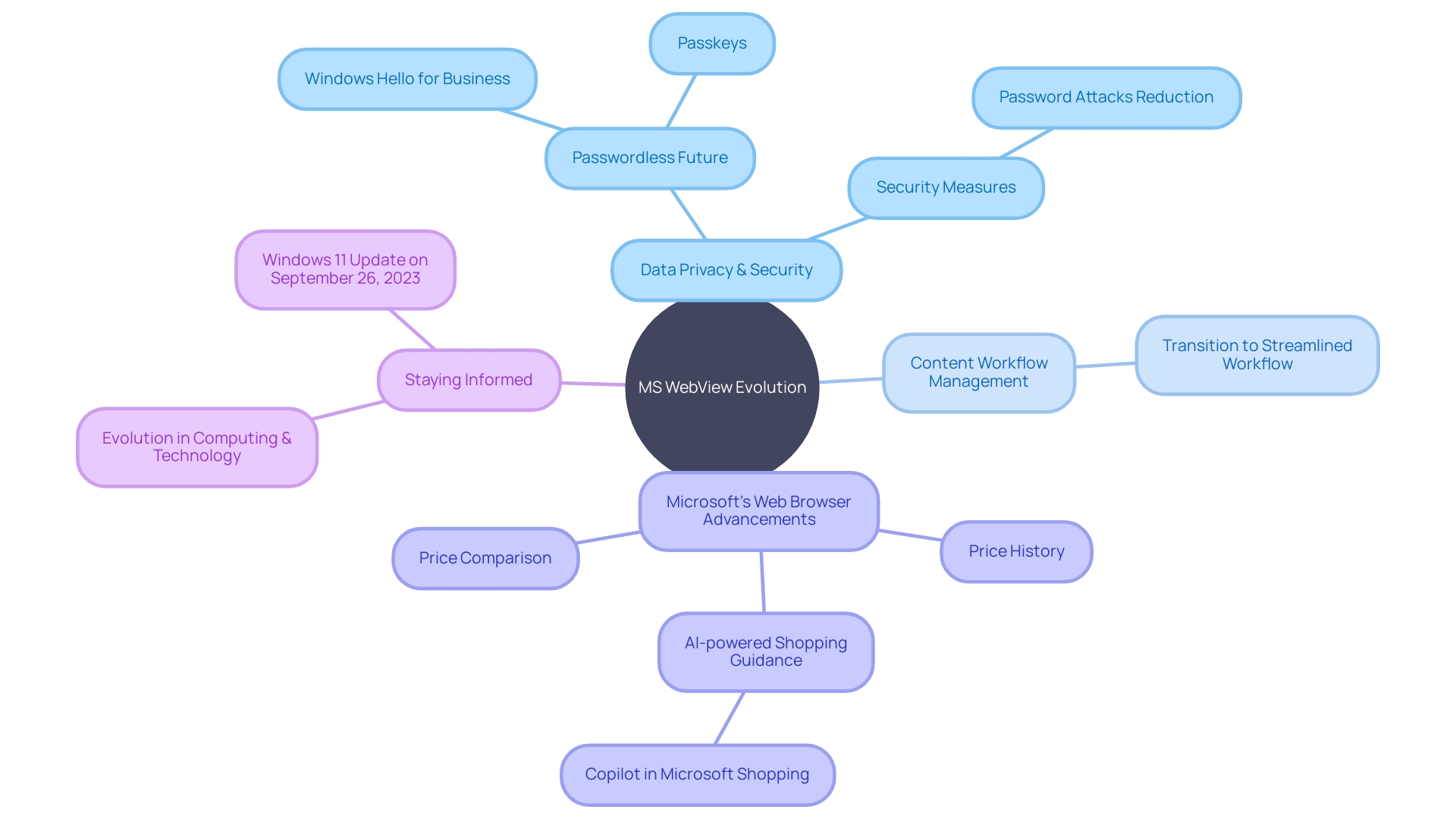
Best Practices for Developing MS Edge WebView Applications
The most effective methods in web development are constantly changing, particularly with the incorporation of intricate desktop capabilities into web programs. For those looking to leverage MS Edge WebView in their development, it’s imperative to prioritize performance optimization, error management, responsive design, and cross-platform compatibility. The shift from conventional desktop apps to online-based platforms is a intricate undertaking, frequently necessitating the dissection of monolithic systems into smaller, manageable components. Nevertheless, a more strategic method proposes enhancing the current, firmly established elements to accelerate this transition and uphold the strong characteristics depend upon.
For instance, JavaScript remains a cornerstone in web development, supporting a range of projects. As the size and complexity of these projects grow, developers encounter challenges related to scalability and performance. Following recommended guidelines for scalable web solutions guarantees that your MS Edge WebView apps can manage higher traffic and sustain performance in the long run. Scalability is essential for a seamless user experience, regardless of user volume.
Furthermore, ensuring cross-browser compatibility is crucial in web development, guaranteeing consistent performance across different browsers. This means rigorous testing and fine-tuning to align with the nuances of different browsers’ rendering engines. It’s not just about function; compatibility testing also involves diverse operating systems, devices, screen sizes, and network conditions, aiming to eliminate visual discrepancies and functional issues.
Recent advancements, such as Microsoft Edge’s introduction of Copilot in Microsoft Shopping, demonstrate the importance of continuous innovation in web features. These AI-powered tools improve the user experience by offering personalized shopping support, demonstrating the potential of integrating advanced technologies into web platforms.
In the end, the objective is to provide web-based programs that are not only strong and user-friendly but also adaptable, capable of enduring the challenges of time and advancements in technology. By adhering to these industry insights and best practices, developers can create MS WebView programs that meet the demands of contemporary web development.
Troubleshooting Common Issues with MS Edge WebView
When navigating the intricacies of MS Edge WebView, developers sometimes encounter obstacles that can disrupt performance. Addressing compatibility issues directly, efficiently fixing WebView errors, and navigating around common obstacles are crucial skills for ensuring your software runs seamlessly. Frequent obstacles include unresponsive apps, which can be force-quit in several ways, including using the Task Manager. Moreover, the diversity of browsers, versions, and devices adds layers of complexity to cross-browser testing, an essential part of ensuring web application functionality across different environments. Armed with insights from industry experts, developers can address these challenges by clearly defining problems, hypothesizing root causes, and leveraging proven troubleshooting methods to refine their process and enhance the end-user experience. These strategies are not only about quick fixes but also about fostering an understanding of underlying issues to preempt future complications.
Conclusion
In conclusion, MS Edge WebView is a powerful tool that seamlessly integrates web content into applications, bridging the gap between desktop software and web interfaces. It aligns with industry trends like AI integration and Progressive Web Apps.
Setting up the development environment involves installing the runtime and using tools like Visual Studio Code and Node Package Manager. These streamline the workflow and provide resources for developers.
Creating a project and adding MS Edge WebView control enhances applications with rich functionalities and seamless web integrations. It allows for an efficient transition to modernized interfaces without complete overhauls.
Configuring and customizing MS Edge WebView control offers options to enhance web functionality, including managing navigation events, enabling JavaScript, and leveraging security features.
Mastering user interactions and events within MS Edge WebView is crucial for a dynamic user experience. Capturing user input, responding to events, and leveraging speech synthesis and recognition APIs elevate interactivity.
Managing user data and browser settings ensures a superior user experience and data privacy. Efficiently storing and retrieving data, overseeing cookies, and fine-tuning browser configurations are essential.
Following best practices for MS Edge WebView development ensures optimal performance, error management, responsive design, and cross-platform compatibility. Building upon existing components and prioritizing scalability create robust applications.
Troubleshooting common issues involves addressing compatibility, debugging WebView errors, and sidestepping roadblocks. Proven troubleshooting methods enhance the end-user experience.
In summary, MS Edge WebView empowers developers to seamlessly integrate web content, modernize systems, and stay aligned with industry trends. Leveraging its full potential enables the creation of innovative, user-friendly applications in the interconnected digital landscape.
Introduction
As the insurance industry continues to embrace the digital era, automation has become an essential strategy for enhancing operational efficiency. The integration of AI and machine learning algorithms in claims processing not only accelerates settlement times but also ensures precision and uniformity in claims adjudication. This article explores the benefits of automated insurance claims processing, the key technologies involved, the steps in automating claims processing, and the future of claims processing with AI and ML.
The insurance sector’s journey towards full automation signifies a broader transformation, aligning with customers’ growing expectations for accessible, digitally-driven interactions. These technological shifts not only satisfy customer demands but also herald a new era of efficiency and transparency in insurance services. As we delve into the details, we will uncover practical solutions to the Director of Operations Efficiency’s challenges in this empowering and solution-oriented article.
Benefits of Automated Insurance Claims Processing
As the coverage industry embraces the digital era, the shift towards automation has become a strategic imperative. The utilization of AI and machine learning (ML) algorithms in processing claims not only speeds up settlement times but also ensures accuracy and uniformity in claims adjudication. Such technological advancements play a pivotal role in diminishing errors and combatting fraudulent activities.
For example, Hiscox, a specialist insurance company, recognized the need to improve satisfaction among both clients and employees amid increasing service demands. They successfully automated their email handling, slashing the repetitive workload by 28% and significantly reducing response times. The domino effect of mechanization stretches beyond mere operational effectiveness; it enables insurers to expand their handling capacity for requests without corresponding augmentations in resource allocation.
Additionally, a study carried out by Sollers Consulting and Ipsos emphasizes the need for insurers to enhance their automation endeavors, as 52% to 63% of clients give priority to speedy claims handling. The highest focus on speed is seen in the UK market, where 63% of individuals prioritize fast handling above everything else, even the compensation amount.
This customer-centric approach is supported by substantial investments in technology across the industry, with global companies in the insurance sector spending over $11 billion on data analytics in 2022 alone. As artificial intelligence continues to evolve, companies like property/casualty insurers that have pioneered its adoption are starting to realize its potential.
The sector’s path towards complete automation represents a wider change, in line with the increasing demands of clients for convenient, digitally-powered engagements. These technological shifts not only satisfy customer demands but also herald a new era of efficiency and transparency in services related to insurance.
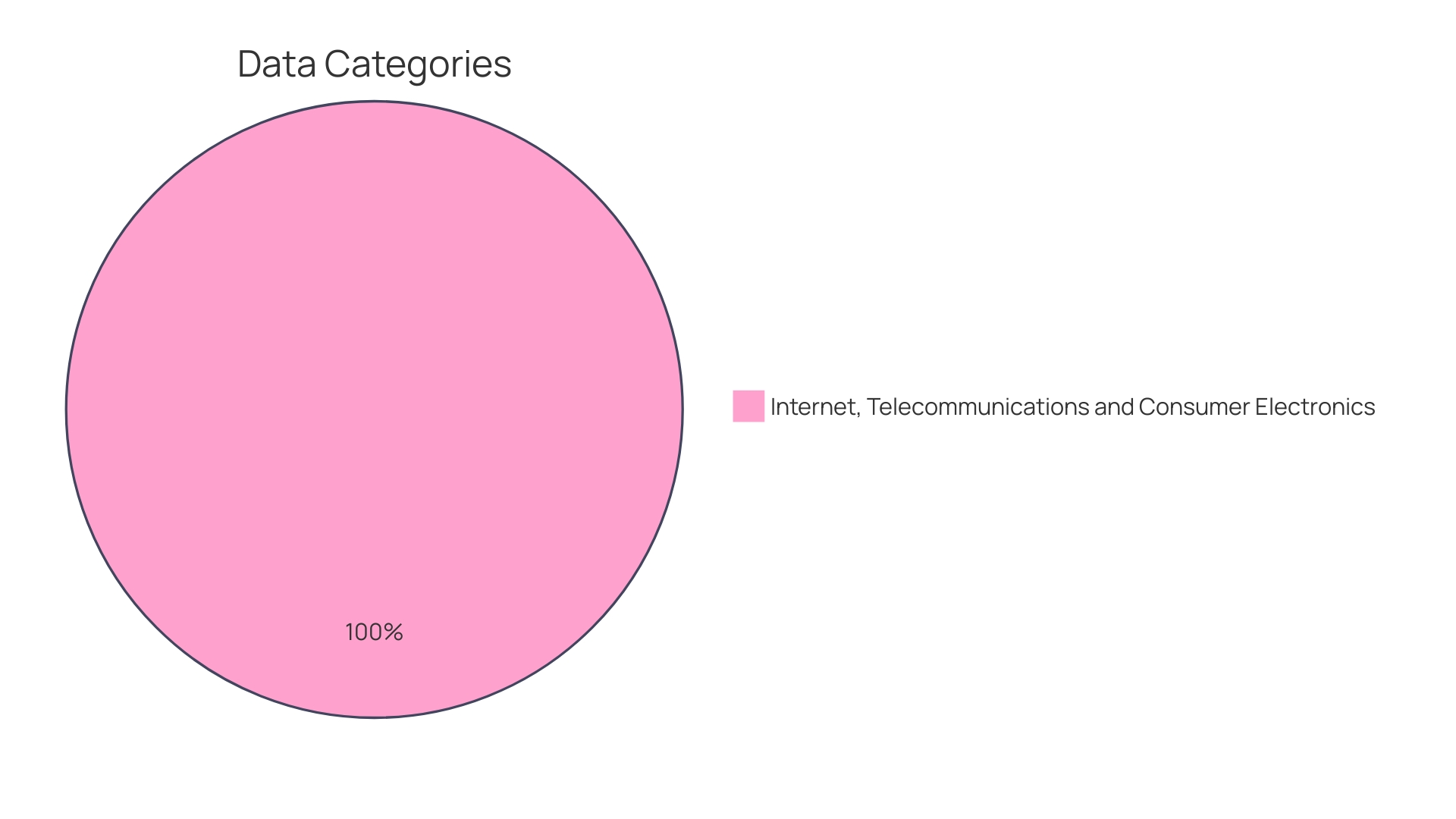
Key Technologies in Automated Claims Processing
The insurance industry is being transformed by a suite of sophisticated technologies that streamline the process of filing and settling insurance cases, from the initial submission to the final resolution. Optical Character Recognition (OCR) and Computer Vision are leading the way in transforming the approach that companies take to handle forms and additional documents. By converting different types of documents into machine-readable data, these technologies significantly expedite the information extraction process.
Communicating with claimants has also become more efficient through Natural Language Processing (NLP) and Chatbots. These tools allow prompt replies to customer inquiries and offer detailed instructions throughout the process, improving the overall customer experience.
Moreover, Sophisticated Data Analytics and Fraud Detection algorithms are crucial in preserving the integrity of the process for submitting requests. By analyzing extensive amounts of data, these algorithms can detect irregular patterns and anomalies that may indicate fraudulent activities.
In addition to these, the Internet of Things (IoT) offers real-time data collection through connected devices, such as telematics in vehicles. This not only enables more precise evaluations but also speeds up the overall processing of requests.
Case studies have demonstrated the impact of these technologies. For instance, Fujitsu and Aioi Nissay Dowa Insurance implemented an advanced claims processing system using AI, video, and telematics data, which cut the time required to settle property damage liability claims by half.
Despite the potential, a recent report revealed that only 36% of financial services and leaders in the insurance industry are utilizing AI across business functions extensively. Nonetheless, the sector continues to make strides in adopting these technologies, aiming to reduce acquisition costs, lower loss ratios, and minimize operating expenses. As the industry continues to navigate through the digital transformation, these intelligent solutions are proving to be invaluable in enhancing efficiency and customer satisfaction.
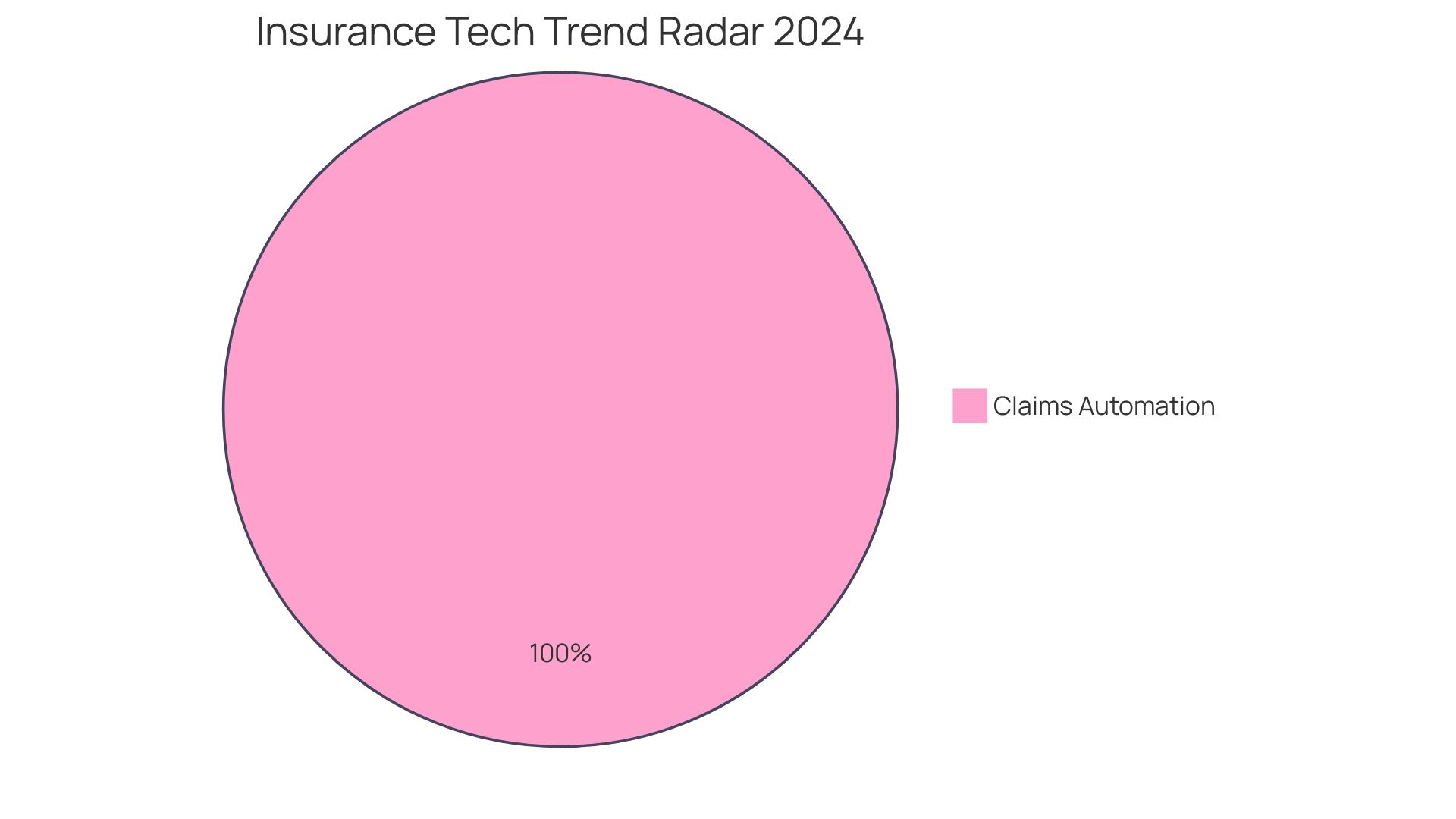
Steps in Automating Claims Processing
In the swiftly changing insurance industry, the mechanization of processing insurance requests is transforming how insurers manage requests, providing faster resolutions for clients and optimizing operations. The first stage of this automated process, Intake and Data Extraction, utilizes OCR and computer vision to carefully extract data from forms and supporting documents. This procedure not only speeds up the processing of requests but also enhances precision in data collection, reducing the possibility of human mistake.
Following data extraction, the Claim Investigation and Validation stage leverages AI algorithms to scrutinize the data against both internal and external databases. These words assert. For example, in fire-related insurance cases, adjusters use visual evidence from images to assess damage and validate requests, ensuring a fair and accurate evaluation.
The following step, Evaluation and Decision-Making, involves ML algorithms evaluating the data to ascertain coverage and calculate the appropriate settlement amount. This evaluation is critical, as it balances the need for fair client compensation with the insurer’s financial sustainability.
Upon approval, the final step, Settlement and Payment Processing, ensures that claimants receive timely and precise payments. This step represents the culmination of the automated process, delivering on the promise of efficiency and client satisfaction. Significantly, organizations such as Hiscox have witnessed a decrease in response times and a notable decline in repetitive workload by adopting such mechanization, highlighting the operational and service advantages.
With the increasing adoption of automation and intelligent solutions in the insurance industry, insurers are positioned to enhance operational efficiency and meet the high expectations of modern customers, who prioritize rapid processing of claims. This emphasis on speed and efficiency is underscored by a recent survey indicating that swift handling of requests is a top priority for customers across multiple countries, with a considerable percentage placing it above the compensation amount itself.
The integration of these automated steps with the insurer’s current systems is crucial, ensuring a seamless transition and adherence to industry standards. This strategic implementation of technological advancements indicates a revolutionary change in the industry, connecting the divide between conventional approaches and the digital era.
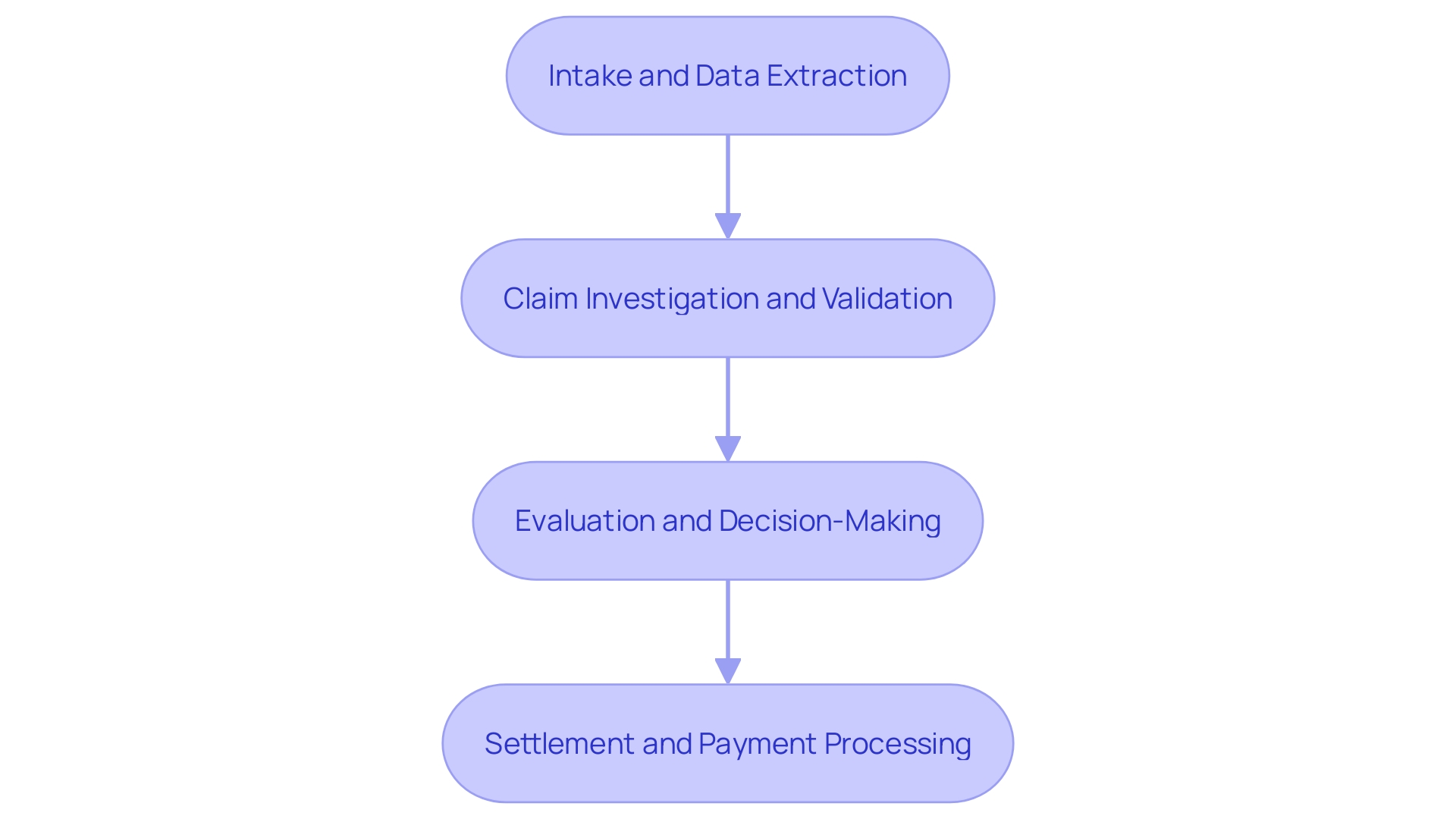
Implementing Automation in Your Organization
The emergence of mechanization within the sector has been a game-changer, particularly in the realms of claims processing and underwriting. By identifying the particular obstacles and inefficiencies in existing processes, companies can strategically introduce technological solutions to improve productivity and client contentment. A pivotal aspect of this transformation involves the careful selection of technological partners and tools that align with the company’s objectives, such as those provided by the Red Hat Ansible Automation Platform.
Sathish Balakrishnan, vice president and general manager at Red Hat, underscores the growing importance of mechanization in the insurance field, stating, ‘By utilizing Red Hat Ansible Automation Platform, organizations like Mutua Madrilena can eliminate time-consuming manual steps, reduce operating costs, and enhance efficiency to deliver the expected level of service to customers.’ Similarly, Marta Ceciliano from Mutua Madrileña notes the platform’s role in accelerating velocity and execution times, while fostering cross-team collaboration.
For a tangible example, look no further than the success story of Mutua Madrilena. With a sprawling IT environment that grew from 28 to over 60 platforms, the organization faced significant challenges in managing its complex systems. The implementation of Red Hat’s solution not only streamlined their operations but also led to reduced incident resolution times, from hours to mere minutes.
In practice, claims digitization can significantly influence a company’s financial performance by impacting acquisition costs, loss ratios, and operating expenses. Companies like Fujitsu and Aioi Nissay Dowa have seen their property damage liability payout times slashed by half thanks to AI-enhanced systems utilizing video and telematics data.
The implementation of mechanization into the insurance sector is not without its limitations, as highlighted by Jason Ralph, a partner at McKinsey & Co. While generative AI has shown promise in compressing the modernization of legacy systems from five years to under two, constraints in technology, talent, and data management need to be addressed for its full potential to be realized.
As these technological advancements unfold, it is imperative for organizations in the field of risk coverage to keep abreast of the latest innovations and their practical applications. By utilizing automation and intelligent solutions, insurance companies are ready to redefine the efficiency of their operations and the quality of their engagements.
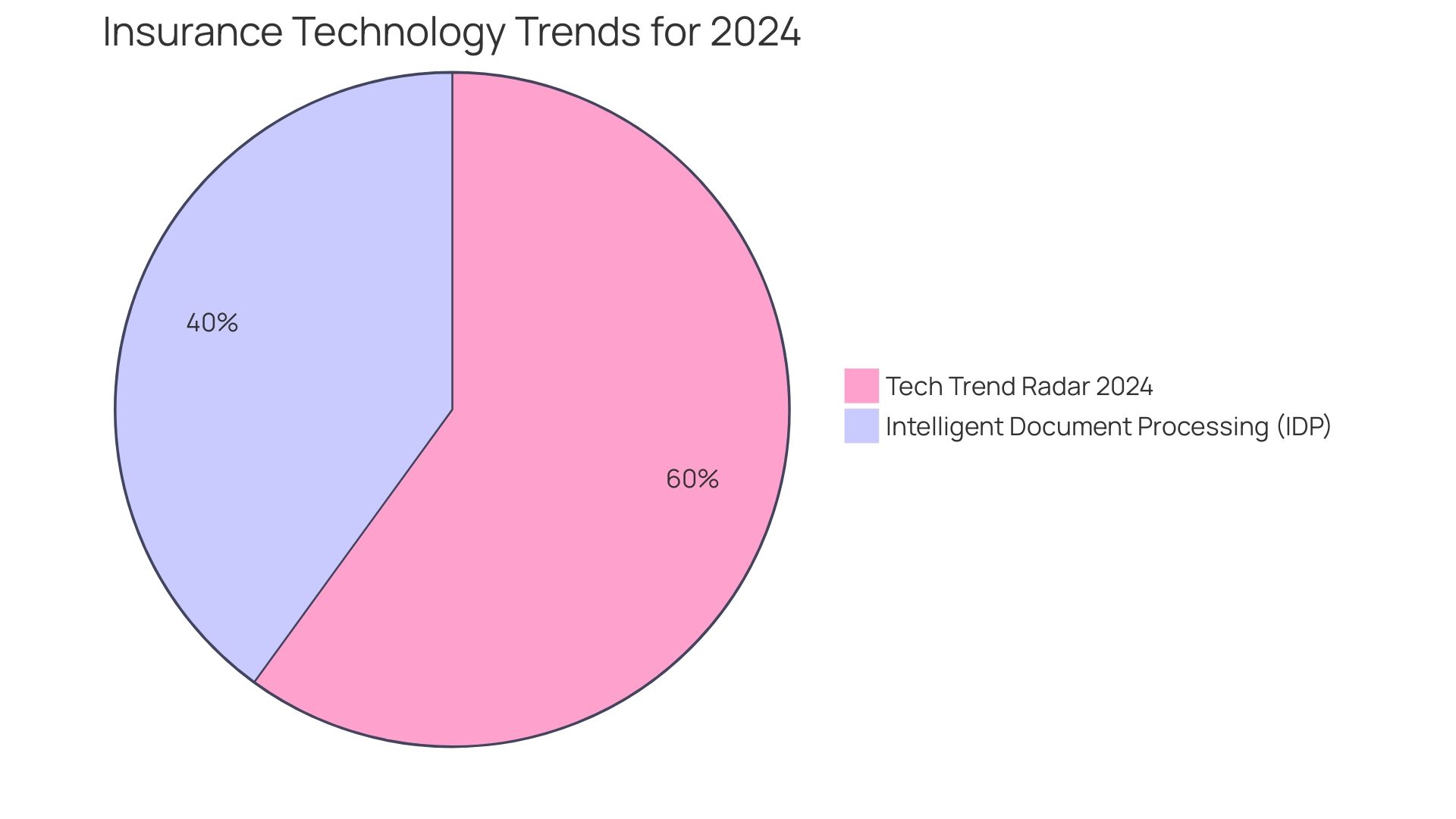
Future of Insurance Claims Processing with AI and ML
Insurance companies are at a transformative juncture where artificial intelligence (AI) and machine learning (ML) are reshaping insurance policy processing. As AI becomes more deeply embedded in the industry, it provides a path to automate complex tasks, significantly boosting efficiency and enhancing the customer experience. Insurance adjusters, who play a crucial role in the process of claims, benefit from Ai’s capacity to analyze and process vast amounts of data, which can range from predictive analytics to image analysis for damage assessment.
AI-powered solutions, such as chatbots, have evolved to offer instantaneous, tailored interaction with claimants, marking a shift towards a more responsive and customer-centric approach. As GenAI transforms the sector, we are observing a rise in applications that can explore, produce, categorize, group, and condense information, simplifying the process of managing insurance requests.
The integration of AI extends to the use of generative AI, which assists in rapidly identifying relevant information, clarifying ambiguities during the First Notice of Loss intake, and ensuring policyholders are adequately covered. With the assistance of AI, adjusters can now efficiently navigate the deluge of information, promoting a more effective resolution process.
Furthermore, the incorporation of IoT devices has ushered in an era of proactive risk assessment. Real-time data collection from IoT devices empowers insurers to mitigate risks before they lead to claims, embodying a proactive versus reactive approach to risk management.
However, the adoption of AI is not without its challenges. While 91% of financial services and leaders in the industry have initiated AI proofs of concept, only 36% have adopted these widely across their operations. It’s clear that the industry is still grappling with how to fully harness Ai’s potential, as 70% of companies continue to explore the technology’s benefits.
The industry’s dedication to AI and ML innovation is evident in the Tech Trend Radar 2024, which emphasizes the significance of these technologies. This forward-looking initiative stresses the need for early adoption in business areas most affected by AI and ML trends.
In summary, the future of insurance claims processing with AI and ML technologies is poised to deliver unprecedented levels of efficiency, accuracy, and customer satisfaction. As insurers continue to adapt and integrate these technologies, the benefits will only become more pronounced, signaling a significant leap forward for the industry.
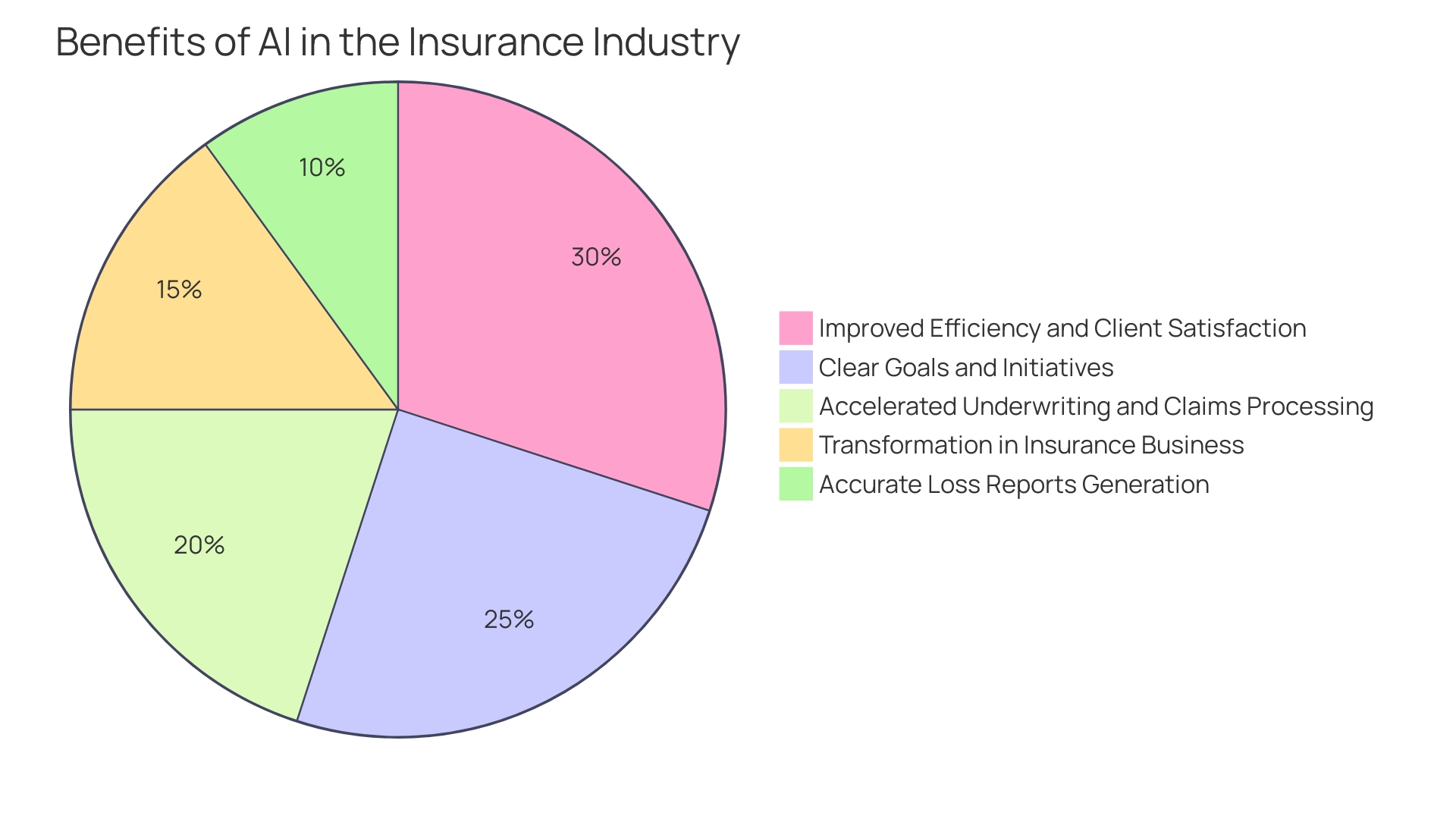
Conclusion
In conclusion, the integration of AI and machine learning in insurance claims processing has revolutionized the industry. Automation enhances efficiency, accelerates settlement times, and ensures precision in claims adjudication. It meets customer expectations for accessible interactions and combats fraudulent activities.
Automated claims processing offers benefits such as reduced response times and workloads. Customer surveys emphasize the importance of rapid claims processing, particularly in the UK market.
Key technologies like OCR, Computer Vision, NLP, Chatbots, Advanced Data Analytics, Fraud Detection, and IoT streamline the entire claims process.
The steps in automating claims processing involve data extraction, investigation and validation, evaluation and decision-making, and settlement and payment processing. These steps expedite claims handling, ensure accuracy, fair compensation, and timely payments.
Effective implementation of automation requires strategic selection of technological partners and tools, such as the Red Hat Ansible Automation Platform.
While challenges remain in fully harnessing AI’s capabilities, the insurance industry is committed to AI and ML innovation. The future of insurance claims processing holds promise, with AI-powered solutions enhancing customer interaction and claims resolution.
As insurers continue to adapt and integrate AI and ML technologies, the industry will experience unprecedented efficiency, accuracy, and customer satisfaction. Full automation signifies a transformative shift towards a digital future in insurance.
Experience the benefits of AI-powered claims processing today!
Introduction
Robotic Process Automation (RPA) and Artificial Intelligence (AI) are revolutionizing business intelligence, enabling organizations to enhance operational efficiency, improve customer engagement, and drive innovation. The integration of RPA and AI streamlines operations, automates routine tasks, and empowers employees to focus on strategic initiatives. This article explores the synergy between RPA and AI in various industries, highlighting real-world implementations and the benefits and challenges of adoption.
It emphasizes the importance of data analysis, customer service, content creation, and operational efficiency. Furthermore, it navigates integration challenges and discusses future prospects and innovations in RPA and AI. With practical solutions and insights, this article sets the stage for businesses to embrace the transformative power of RPA and AI in their pursuit of smarter, more informed strategies.
The Synergy of RPA and AI: Understanding the Technologies
Robotic Process Automation (RPA) and Artificial Intelligence (AI) are transformative forces in the realm of intelligence, streamlining operations and enhancing decision-making capabilities. RPA automates mundane, repetitive tasks, liberating human resources for more strategic work. AI, on the other hand, equips machines with the ability to mimic human intelligence, tackling complex, data-driven tasks with precision.
Comprehending the collaboration between RPA and AI is crucial for enterprises. For example, the Teal IQ platform integrates AI and Machine Learning (ML) for information validation and structuring, thereby enhancing the accuracy of business intelligence. Similarly, Zara’s integration of AI throughout its supply chain exemplifies the seamless union of AI with operational processes, resulting in real-time inventory optimization and improved customer engagement.
This synergy was also demonstrated in the efficient workflow adopted by Adobe Premiere Pro, where AI-powered tools rapidly converted lengthy session recordings into concise, actionable summaries. Such applications of RPA and AI not only save time but also provide valuable information that can be utilized for strategic decisions.
Furthermore, the significance of a strong information culture is emphasized by a Harvard Business Review study, which connects it to innovation and success. Graph-based frameworks like Relational AI Graphs (RAG) further empower this by elucidating intricate data relationships, offering a richer analysis than traditional data structures.
Businesses are also advised to create libraries of tools to support the expanding technology of IA (Intelligent Automation), suggesting a gradual approach—starting with automating simpler tasks and scaling up to more complex workflows. Continuous monitoring is vital, ensuring that strategic goals are achieved and paving the way for future enhancements based on documented outcomes.
In light of the ever-evolving landscape of AI, companies are cautioned to vet AI providers meticulously, considering their industry expertise, model reliability, and commitment to innovation. Whether choosing flexible general-purpose AI models or specialized ones for domain-specific tasks, enterprises must consider the practical and financial implications.
As AI continues to drive innovation across various functions, from marketing and sales to product development, its adoption becomes crucial for maintaining a competitive edge. However, alongside its potential for spurring innovation and customer engagement, there’s a need for cautious optimism, considering the societal and ethical implications of widespread AI deployment. Thus, the alliance of RPA and AI in intelligence heralds a future where technology not only enhances efficiency but also fosters smarter, more informed strategies.
Enhancing Operational Efficiency
The integration of Robotic Process Automation (RPA) and Artificial Intelligence (AI) in business intelligence is revolutionizing the way companies operate. RPA, with its capability to automate routine tasks such as information entry and document processing, allows employees to redirect their focus towards more complex and strategic initiatives. This reallocation of human effort not only enhances productivity but also fosters innovation as the workforce engages in higher-value work.
On the other side of the spectrum, AI shines in its ability to make intelligent decisions and automate intricate processes. This dual force of technology is exemplified by companies like Zara, which has seamlessly woven AI into its operations, from supply chain management to service, ensuring real-time optimization and responsiveness.
Further illustrating the power of automation, the example of TCS’s content creation workflow demonstrates the efficiency gains from utilizing AI tools like Adobe’s Speech to Text and AI Assistant. What once took hours can now be accomplished in minutes, with a single person able to distill valuable information from lengthy sessions effortlessly.
As indicated by Coding Crafts, leading in software innovation, the synergy between RPA and AI is crucial in navigating the dynamic tech landscape. This partnership is crucial for enterprises aiming for digital transformation, as it empowers them to operate more efficiently, enhance processes, and make informed decisions based on data.
In addition, Spordle’s integrated Sports Management Platform demonstrates how AI can enhance support for clients by ensuring high satisfaction rates through quick and accurate responses, a crucial factor for growing enterprises.
In the context of intelligent automation, it’s essential to create a robust library of tools and start with automating smaller tasks, as recommended by industry experts. Continuous monitoring and documentation of results are vital to learn and apply those lessons to future projects. By doing so, businesses can not only keep pace with technological advancements but also leverage them to stay competitive and meet their operational goals.
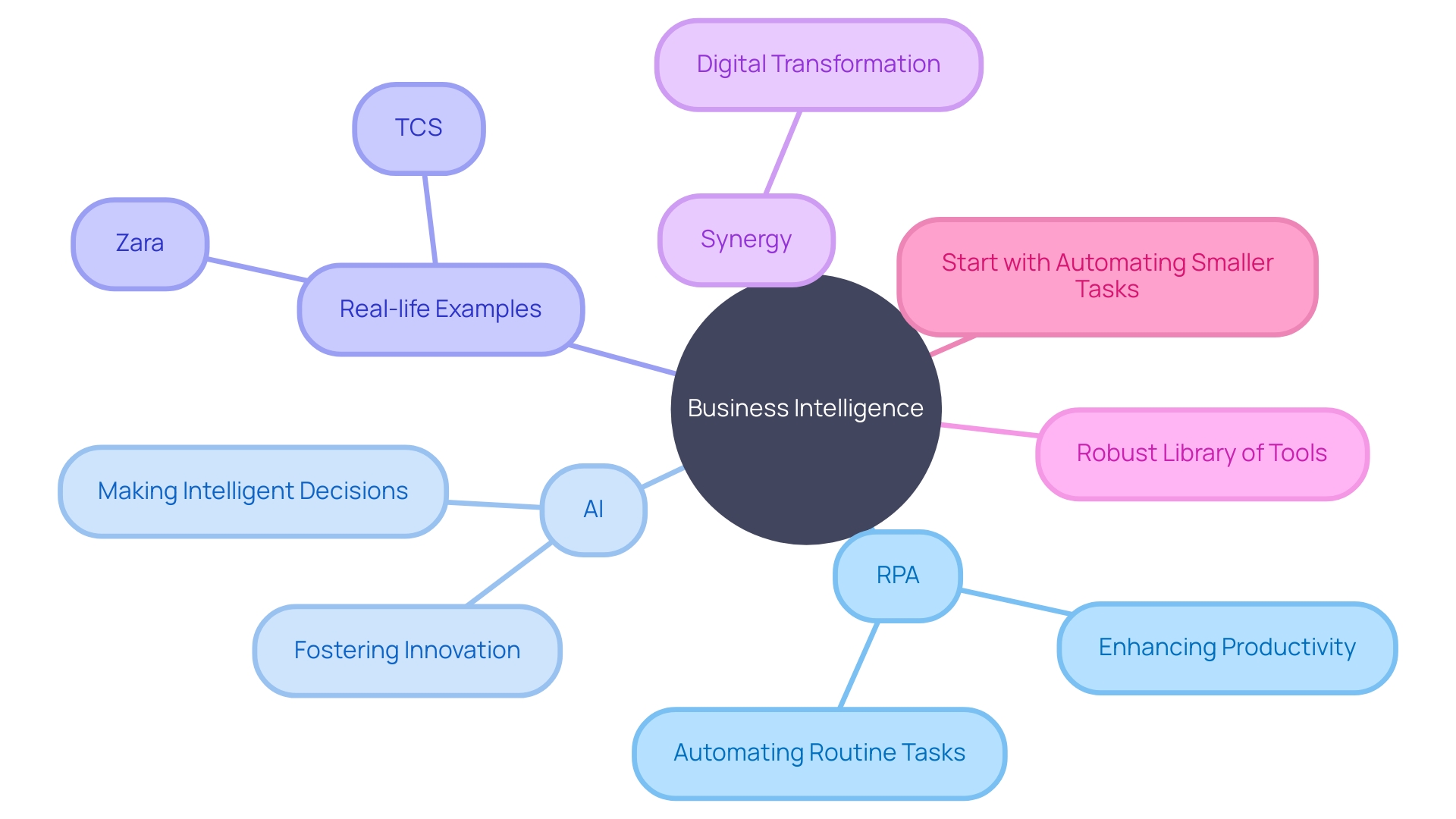
Revolutionizing Customer Service and Engagement
Business intelligence is undergoing a transformative change with the integration of Robotic Process Automation (RPA) and Artificial Intelligence (AI), particularly in service arenas. RPA streamlines operations by handling routine tasks such as ticketing workflows and query resolutions, which not only accelerates service delivery but also enhances client satisfaction through speedy responses. Ai’s role complements by delving into interactions, predicting service requirements, and tailoring recommendations with a personal touch. This synergy is epitomized in call centers, where predictive call routing and sentiment analysis post-interaction are becoming standard practice. Despite the complexities and the challenge of real-time analytics, innovative companies like Ally have harnessed Ai’s prowess. They promote a collaborative approach to AI development, integrating insights from technical, operational, and support teams, and ensuring a human touch remains central to AI interactions. Moreover, this technological leap is supported by statistics showing the extensive adoption of AI in customer service, with over 63% of retail companies employing AI to enhance customer experiences, and up to 70% of customer requests being automated through AI. This shows a distinct pattern towards AI-driven innovation across different functions, further emphasizing the significance for companies to adjust to this change to preserve a competitive advantage.
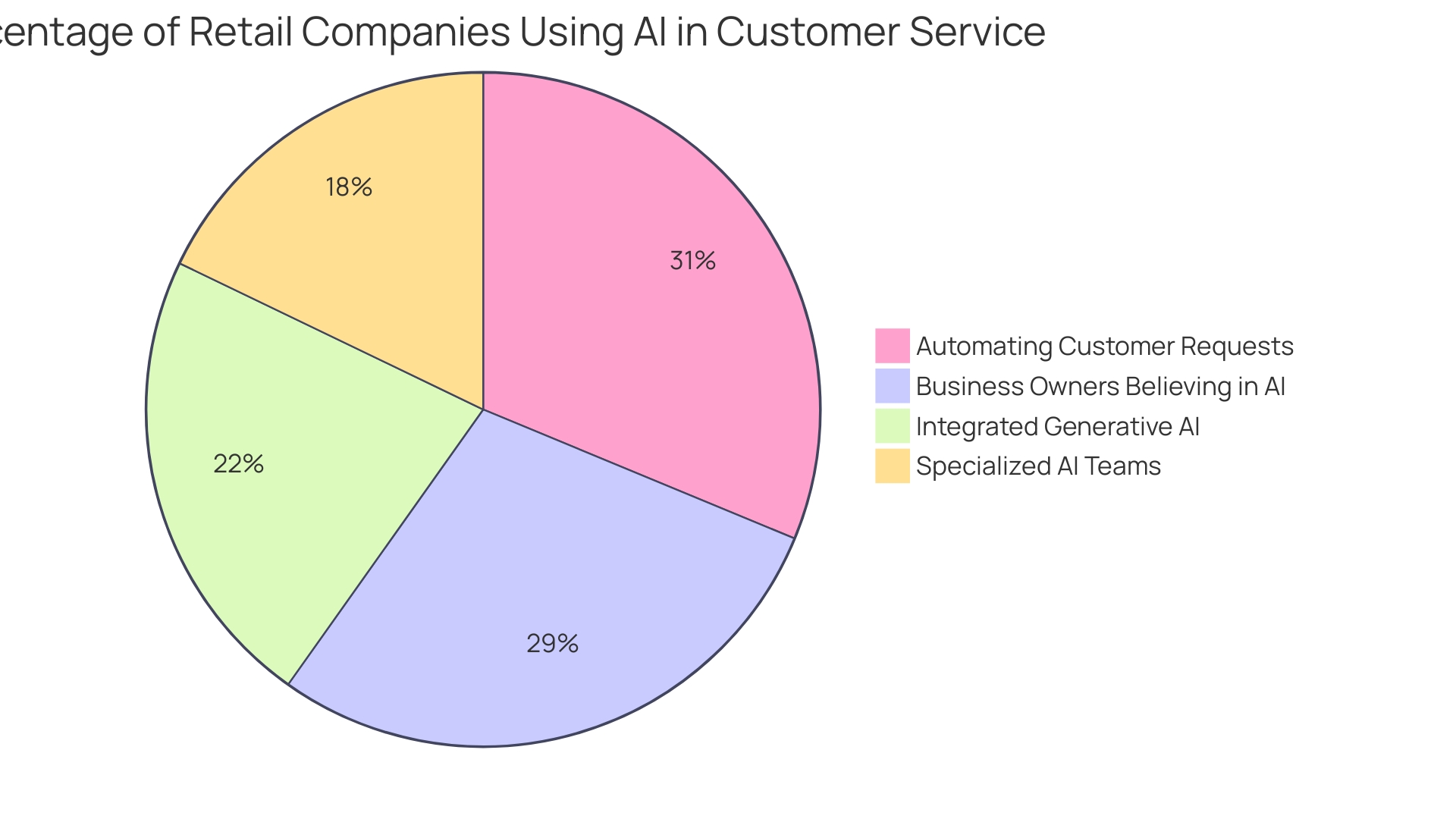
Streamlined Content Creation and Marketing
Leveraging the synergy between Robotic Process Automation (RPA) and Artificial Intelligence (AI), businesses can vastly improve the efficiency and effectiveness of their content creation and marketing efforts. By integrating RPA, routine tasks such as aggregating and formatting information can be automated, which accelerates the content generation process. This enables a consistent and streamlined distribution of content across various platforms.
AI takes this a step further by analyzing vast amounts of customer information to glean insights into behavior and preferences. Such analysis allows for highly targeted marketing strategies, ensuring that the content reaches the appropriate audience with precision. This intelligent blend of technology not only enhances decision-making related to revenue, sales, and marketing but also simplifies complex information into actionable insights, readily accessible to stakeholders at all levels.
Case studies highlight the transformational impact of these technologies. For example, the consolidation of information into a single platform has rendered it in a standard format, accessible to teams across sales, management, and other departments. This ease of access to information, without the need for complex interpretation, empowers organizations to quickly derive valuable insights.
In the realm of marketing, industry leaders have recognized the necessity of aligning with AI. This involves rethinking data collection, segment building, and campaign management. A commitment to adopting AI principles and fostering collaboration with AI experts is essential for modern marketing strategies.
Moreover, the creator economy has embraced AI, integrating it into daily workflows. This adoption has been motivated by the necessity to remain competitive in an AI-driven landscape, where innovation and client engagement are paramount. Ai’s role in driving innovation across functions, particularly in marketing and sales, is underscored by a 34% adoption rate, proving its significance in contemporary intelligence strategies.
In conclusion, by harnessing RPA and AI, businesses can not only create and market content more efficiently but also tailor their strategies to meet the nuanced needs of their customer base, leading to better engagement and potentially increased revenue.
Advanced Data Analysis and Reporting
The integration of Robotic Process Automation (RPA) with Artificial Intelligence (AI) is revolutionizing the realm of Business Intelligence (BI), propelling organizations to new heights of data-driven excellence. RPA streamlines the arduous task of collecting information from diverse sources, while AI works its magic by analyzing this information to identify trends and extract valuable insights. With this dynamic duo at work, companies are not just keeping up but setting the pace in their industries.
For example, a prominent international logistics company once struggled with the laborious process of extracting insights from dashboard information. Their breakthrough came with BA Copilot, a solution powered by Gen-AI technology, which leveraged natural language querying and AI to enhance analysts’ efficiency. The tool not only reduced manual efforts but opened up access to information, fostering a culture of collaboration and informed decision-making throughout the enterprise.
Similarly, a Fortune 200 company overhauled its analytics by harnessing AWS to construct a modern analytics platform. This strategic move allowed for more accurate and expedited analytics requests, freeing up time for decision-making and automated insight generation. It marked a departure from legacy processes, which were slow and costly, and promoted consistency in operational guidelines.
The necessity for meticulous AI provider vetting cannot be overstated, given the potential financial and brand risks associated with security mishaps. BI tools are essential in this landscape, as they facilitate the collection, processing, and analysis of extensive information arraysâwhether structured or unstructured. This capability is crucial, as a 2023 McKinsey & Company report notes that data-driven companies tend to outperform their peers by up to 5%.
As analytics continue to evolve, the fusion of RPA and AI holds the key to unlocking unprecedented efficiency and strategic foresight. It connects the divide between scientists and business leaders, fostering a shared language and objectives that culminate in actionable intelligence. This synergy is not just a trend but a cornerstone for organizations intent on thriving in the digital age.
Industry-Specific Applications
The integration of Robotic Process Automation (RPA) and Artificial Intelligence (AI) is revolutionizing industries far and wide. In finance, these technologies are streamlining operations by automating routine tasks like invoice processing and enhancing fraud detection efforts, thereby boosting accuracy and operational efficiency. The healthcare sector benefits from Ai’s diagnostic precision and improved patient care through continuous monitoring. Manufacturing and retail are not left behind; they’re also leveraging the transformative potential of RPA and AI to optimize processes and enhance experiences.
Take, for instance, the financial services realm, where institutions grapple with an overwhelming amount of data, ranging from market trends to regulatory changes. Here, an AI-powered chatbot on AWS serves as a knowledge assistant, providing immediate, accurate responses to complex queries around the clock. Such tools help employees navigate the vast sea of information, ensuring they have the knowledge to make timely, informed decisions.
The impact of AI is evident in the numbers, with significant adoption in marketing and sales (34%) and product or service development (23%). This innovation is not just about keeping pace with technology; it’s about leading the charge in a competitive, AI-driven marketplace. By leveraging AI and RPA, businesses are not just automating; they’re reimagining what’s possible, unlocking new levels of innovation, and enhancing client engagement in previously unimaginable ways.
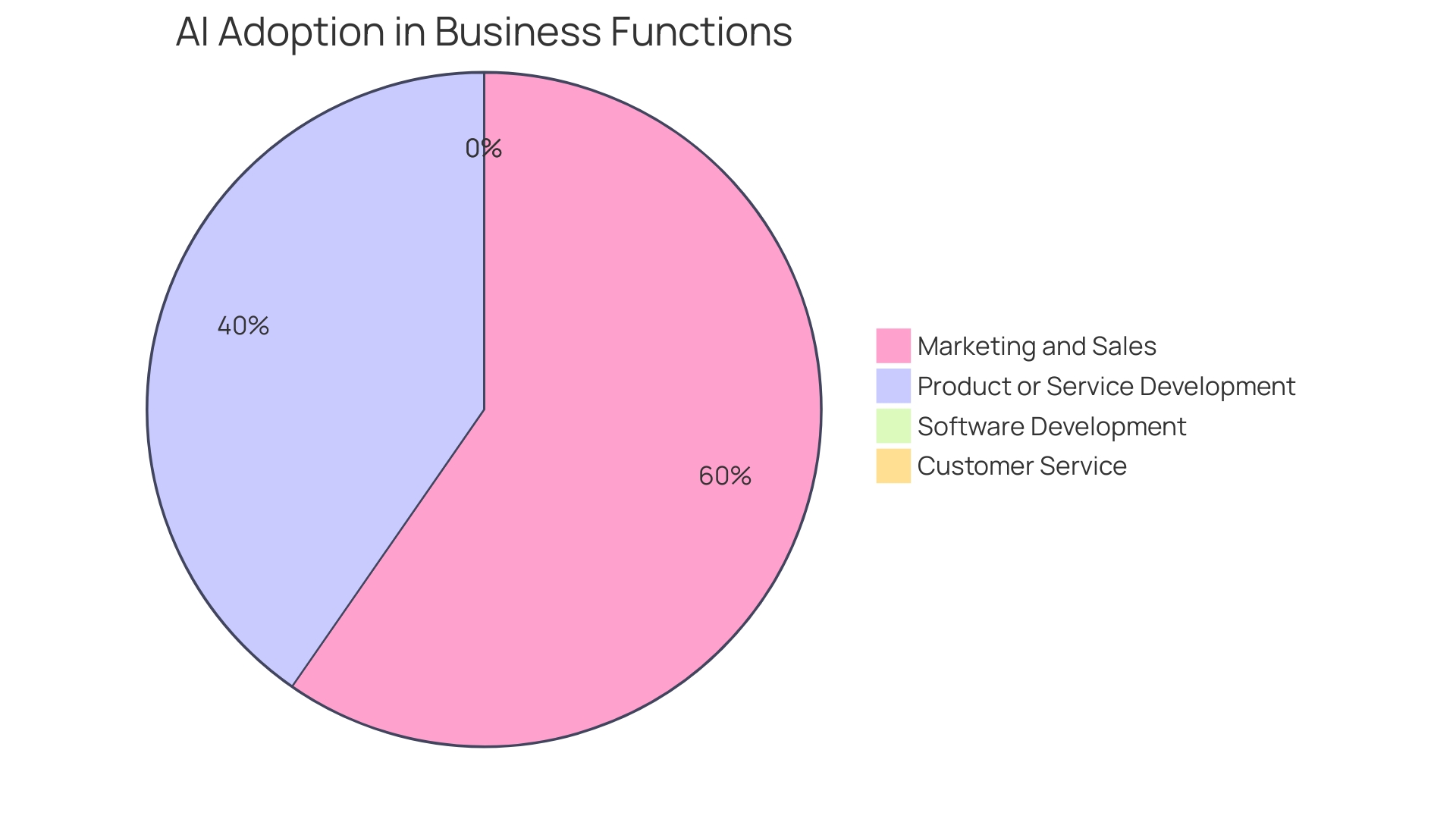
Case Study: Real-World Implementation of RPA and AI Synergy
Retailers are always looking for creative ways to improve operational efficiency and meet the needs of their clients. A compelling example is the application of Robotic Process Automation (RPA) and Artificial Intelligence (AI) in inventory management, as demonstrated by a leading retail organization. By automating routine inventory tasks, the company streamlined its processes and, with Ai’s predictive analytics, could anticipate consumer demand and maintain optimal stock levels. This strategic integration not only minimized the occurrence of stockouts but also led to notable cost savings and an uptick in client satisfaction.
Highlighting the usefulness of starting with low-complexity, high-return tasks, the strategy of this company reflects industry trends where retailers initiate their digital upgrade with straightforward enhancements like automated identity verifications and basic inquiries. The narrative aligns with insights from Anand Raghavendran’s appointment at KlearNow, where his expertise is set to enhance the firm’s AI-driven supply chain solutions.
Furthermore, the wider retail industry is experiencing a period of full automation that spans from client interactions to backend operations, highlighting a crucial transition towards a more efficient and empowered retail setting. Christopher Schyma, Director of Retail at Sutherland, supports this view, indicating that AI-driven automation will profoundly reshape the retail industry. As retailers navigate through operational challenges, the implementation of such technologies not only solves immediate pain points but also sets the stage for future growth and transformation.
Benefits and Challenges of Adoption
Embracing robotic process automation (RPA) and artificial intelligence (AI) in intelligence is a game-changer for organizations aiming to enhance operational efficiency and client engagement. This revolutionary jump allows businesses to automate repetitive tasks through bots capable of handling information input, transaction processing, and service interactions. Such integration of automation technology not only streamlines content creation but also enhances the quality of analysis, allowing for strategic, information-driven decision-making.
The impact of RPA and AI is evident in the case of Bosch, where their deployment of a solid oxide fuel cell (SOFC) system, complemented by a digital twin, showcases how automation and digitalization can drive sustainability. With an electrical efficiency of 60 percent, the SOFC system exemplifies the potential of these technologies to optimize performance and cost over a system’s lifetime. Similarly, Spordle’s Sports Management ERP demonstrates automation’s role in unifying operations across sports federations and clubs, enhancing the efficiency of customer support and knowledge base management.
However, the journey towards full AI and RPA integration is not devoid of hurdles. Challenges in integration complexities, security, and the scarcity of skilled professionals are significant. As evidenced by the need for rigorous vetting of AI providers, considering their industry expertise, track record, and financial stability is crucial to safeguard sensitive data and ensure long-term partnerships. This examination extends to the AI models’ performance and scalability, ensuring they align with the changing requirements of the organization.
Moreover, as executives contemplate the ROI of AI investments, it is clear that organizations are only beginning to tap into Ai’s potential. With 70-80% of enterprises still relying on spreadsheets for essential tasks, the chance to decrease inefficiencies and errors through automation is immense. Nevertheless, the transition to advanced tools must be managed with care to avoid disrupting existing operational flows.
Overall, the fusion of RPA and AI into intelligence holds the potential of driving efficiency, innovation, and growth. The keys to unlocking this promise are strategic planning, collaborative efforts among stakeholders, and a commitment to continuous improvement in the face of technical and organizational challenges.
Navigating Integration Challenges
The integration of Robotic Process Automation (RPA) and Artificial Intelligence (AI) into business intelligence initiatives is more than just a trend; it’s a strategic imperative. The essence of this integration lies in understanding the current operational processes and how they function in reality, a task often underestimated by organizations. For instance, while process documentation might suggest a straightforward workflow, the actual day-to-day operations could reveal a complex array of deviations and exceptions. Gaining near real-time visibility into these processes is crucial for any meaningful improvement and decision-making.
Consider the order-to-cash process. Here, credit blocks are designed to prevent orders from high-risk non-paying individuals. However, these blocks can inadvertently delay transactions for reliable customers due to a cumbersome removal process. The solution to streamlining this process may lie in using tools like Palantir HyperAuto to integrate relevant information from various systems and enhance process mining capabilities.
Furthermore, integration is crucial for effective decision-making. It involves extracting information from diverse systems, standardizing it to a common format, and consolidating it into a unified database, thus addressing the challenges posed by information silos. These silos, which arise from information being stored in isolated systems or departments, can lead to an incomplete comprehension of the organization and impede well-informed decision-making.
This process is not without its challenges. As indicated by specialists, transformation assignments concerning information have historically been challenging and require a lot of effort. However, once systems like Salesforce are in place, they tend to become deeply embedded within a business’s infrastructure. The push towards APIs signifies a shift from manual document exchanges to direct system-to-system communication. This evolution emphasizes the significance of choosing AI vendors with a strong history and a clear comprehension of the potential risks, such as breaches, associated with AI technologies.
In the context of Knowledge Management, the ‘last mile problem’ illustrates the difficulties of delivering services from a central system to the end-user. ChatGPT’s success has spurred Fortune 1000 IT departments to actively seek solutions to this problem, thereby improving productivity inefficiencies.
Statistics emphasize that not all information is good, underscoring the significance of data quality and integrity. Insufficient information can arise from organizational silos, making it difficult for AI/ML models to precisely depict intricate corporate behaviors that encompass multiple domains. To overcome these hurdles, companies are advised to create a library of tools to support IA use, start with automating smaller tasks, and continuously monitor and document results to guide future projects.
In conclusion, successful integration of RPA and AI in intelligence not only necessitates a well-defined implementation plan but also an in-depth understanding of the operational realities. Thorough testing and continuous monitoring are essential to tackle integration challenges, ensuring data privacy and security while harnessing the transformative powers of AI for intelligence.
Future Prospects and Innovations in RPA and AI
As the scenery of intelligence in the corporate world continues to change with technological advancement, the combination of Robotic Process Automation (RPA) and Artificial Intelligence (AI) stands at the forefront of this transformation. The integration of RPA with advanced AI capabilities, such as natural language processing, is not merely an addition to existing frameworks but a revolutionary approach that empowers systems with predictive analytics and intelligent decision-making. Tools like chatbots, infused with AI, are now capable of providing sophisticated customer support that goes beyond simple query resolution.
Organizations are increasingly recognizing the need to implement intelligent automation to navigate their digital transformation journey effectively. By embracing a gradual approach, beginning with the automation of basic tasks and progressively expanding to more intricate operations, organizations can ensure the smooth integration of these technologies. This approach is vital for gaining immediate value from AI-driven tools such as Raia’s Data Analyst, which can be integrated effortlessly into workspaces to assist in data analysis and liberate teams to focus on more strategic tasks.
To truly harness the potential of AI and RPA, continuous monitoring and documentation of outcomes is crucial. This not only confirms that objectives are being met but also provides a repository of insights and learnings for future endeavors. As we’ve seen with the transformative impact of SS&C Blue Prism’s document automation, these technologies are no longer confined to performing simple tasks; they are reshaping entire processes.
The AI market is experiencing exponential growth, projected to reach a market volume of US$738.80bn by 2030, indicating the tremendous potential for businesses to innovate and maintain a competitive edge. Forward-thinking organizations that leverage these advancements in AI and RPA are not just streamlining operations; they are setting new industry benchmarks for efficiency and strategic insight.
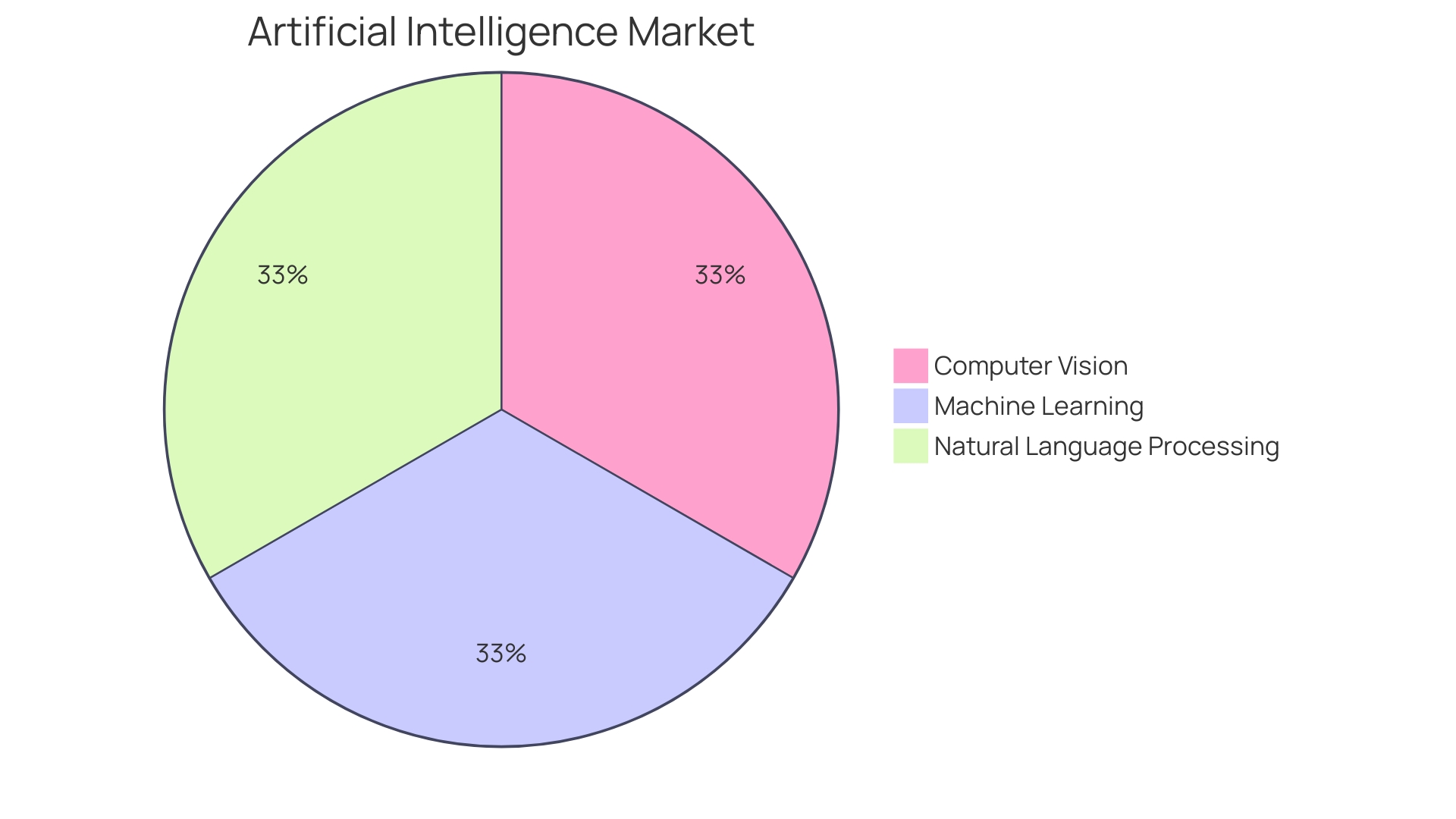
Conclusion
In conclusion, the integration of RPA and AI is revolutionizing business intelligence. This powerful synergy streamlines operations, enhances efficiency, and drives innovation across various industries. By automating routine tasks and leveraging AI’s data analysis capabilities, organizations can optimize processes, improve customer engagement, and make data-driven decisions.
The benefits of adopting RPA and AI are evident. From inventory management in retail to fraud detection in finance, these technologies transform operations, boost accuracy, and increase customer satisfaction. Automating content creation and marketing efforts enables efficient distribution, while AI’s insights lead to targeted strategies and actionable results.
However, there are challenges to navigate. Complex integration, data security, and the scarcity of skilled professionals pose hurdles. By vetting AI providers, ensuring data quality, and continuously monitoring outcomes, businesses can overcome these challenges and harness the transformative power of RPA and AI.
Looking ahead, the prospects for RPA and AI are promising. The integration of RPA with advanced AI capabilities empowers systems with predictive analytics and intelligent decision-making. By adopting a step-by-step approach and monitoring outcomes, organizations can navigate their digital transformation journey and stay ahead in a rapidly changing business landscape.
In summary, the synergy between RPA and AI revolutionizes business intelligence. By embracing RPA and AI, organizations can streamline operations, automate tasks, and make data-driven decisions. With practical solutions and continuous improvement, businesses can harness the transformative power of RPA and AI to thrive in the digital age and maintain a competitive edge.
Introduction
As the software industry continues to evolve, organizations are faced with the challenge of maintaining quality, speed, and efficiency in a rapidly changing digital landscape. To address these challenges, many companies are turning to Robotic Process Automation (RPA) as a solution. RPA offers the opportunity to automate repetitive and rule-bound tasks, streamlining operations and improving accuracy.
This article explores the various aspects of implementing RPA in the software industry, from identifying opportunities and assessing processes to calculating ROI and overcoming challenges. It also delves into the importance of stakeholder buy-in, tool compatibility, and preparing for RPA implementation. With an empowering and solution-oriented tone, this article provides practical insights and guidance for software organizations looking to enhance their operational efficiency and stay competitive in the digital ecosystem.
Identifying RPA Opportunities in the Software Industry
As the digital landscape accelerates, the technology industry is continually challenged to maintain quality, speed, and efficiency. For organizations considering the integration of Robotic Process Automation (RPA), it begins with a strategic analysis of existing workflows to pinpoint tasks that are repetitive and rule-bound—prime candidates for RPA’s capabilities. Using this perspective, companies can identify inefficiencies and focus on manual processes ready for streamlining, improving operations while also enhancing accuracy.
Case studies, such as M&T Bank’s initiative to establish Clean Code standards, demonstrate the importance of quality assurance in the face of rapid technological advancement. The banking sector’s shift towards digital customer experiences and the need for stringent security measures exemplify the broader industry’s push for modernization. Similarly, the role of AI in application development extends beyond testing to areas such as code development, where it offloads mundane tasks, increasing developers’ efficiency.
Backing this shift, data shows that smart mechanization can lead to substantial income increase, with a 73% total Net Present Value (NPV) advantage and a 5.4% compound annual growth rate (CAGR) over three years. Furthermore, 57% of professionals acknowledge Ai’s impact on improving code quality, showcasing its ability to navigate extensive codebases and recommend enhancements.
In the world of RPA, it’s essential to take into account the time and cost implications of integrating such technology, as well as the potential ROI. The integration should not be seen as a cost center but as an investment that promises substantial returns if modern methods are employed. As industry leaders have noted, the journey to deploy AI and RPA involves navigating challenges, but also reaping the benefits of shared experiences and best practices.
To summarize, software organizations interested in adopting RPA should thoroughly evaluate their current procedures, considering the advantages of automation in comparison to the possible difficulties and expenses. By doing so, they position themselves to enhance their operational efficiency and stay competitive in an ever-evolving digital ecosystem.
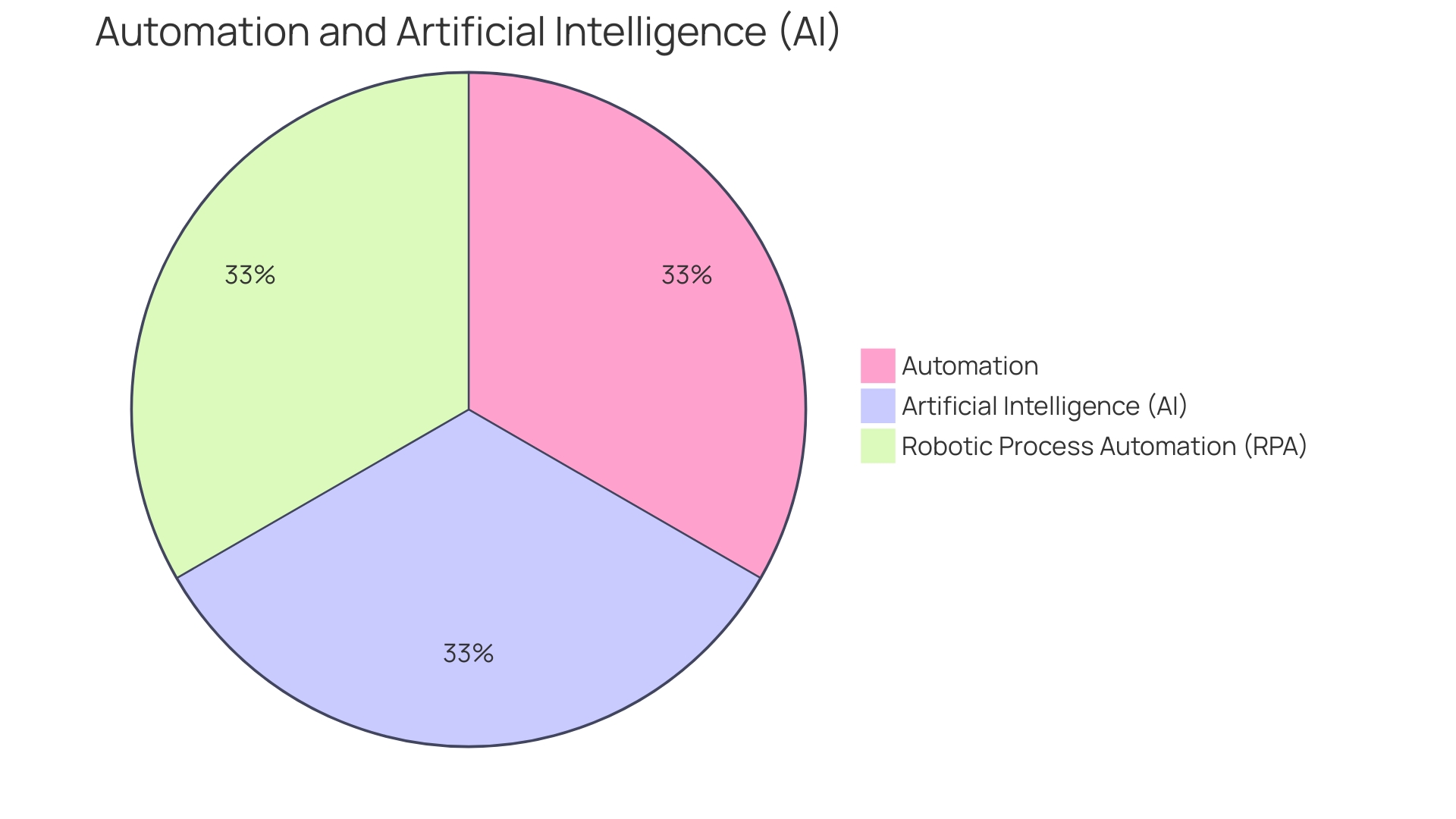
Process Assessment and Analysis
Identifying RPA opportunities is simply the initial stage; the actual work starts with a thorough evaluation and analysis of each procedure. This critical phase demands a deep dive into the intricacies of process flows, examining the inputs, outputs, and interdependencies at play. Through a detailed mapping of each step, organizations can uncover not only areas ripe for automation but also the nuances that make their operations unique.
Meta’s innovative approach to software infrastructure, including their adoption of a software monolith and open-source hardware platforms, exemplifies the significance of understanding and tackling the unique challenges that arise at scale. Through collective brainstorming, Meta addressed the ‘regionalization problem’ by sharing knowledge and establishing clear, attainable goals, demonstrating the effectiveness of collaborative problem-solving in improvement.
In the broader context, InfoQ’s Architecture and Design Trend Report highlights the shift toward more specific and targeted approaches to design, such as privacy engineering. The rise of socio-technical architecture as a trend highlights the significance of taking into account the human aspect within systems designâstressing that effective architecture is not only about the technology but also the individuals and procedures involved.
Taking this into account, leaders should address crucial inquiries before embracing robotic procedures: Which manual tasks are most amenable to RPA? What inefficiencies could RPA address? What are the investment requirements? This line of investigation is essential for differentiating between activities that are simply routine and those that could greatly gain from mechanization.
Reveille Software’s CTO and Co-Founder promotes a collaboration between technology and human oversight. This human-automation synergy is essential for stability, with monitoring and management remaining integral to the process. As companies strive for digital transformation, intelligent automation—combining RPA with AI—becomes a transformative factor, enhancing efficiency and enabling more strategic decision-making.
Building a robust library of tools to support automation technology and starting with less complex tasks are practical steps toward successful RPA implementation. Continuous monitoring and documentation of results are vital for measuring success and informing future strategies.
In the dynamic world of applications, where innovation is relentless, quality assurance teams are increasingly recognizing the value of modern testing methods. No longer seen as a mere cost center, efficient application testing is now viewed as a vital investment that can yield significant ROI and drive productivity in development and maintenance.
To navigate the complexities of software lifecycle management and maintenance, it is imperative to have a granular understanding of the market, emergent technologies, and social or economic changes that could impact the sector. Leaders must remain vigilant, frequently engaging with their dashboards and feature flags, and anticipate capacity and throughput needs well in advance. By doing so, they can ensure their organization remains agile and responsive in the face of rapid technological evolution.
Feasibility Study and ROI Calculation
Embarking on the RPA journey necessitates a meticulous evaluation to pinpoint which manual tasks are ripe for automation and to understand the underlying inefficiencies that RPA can ameliorate. Software organizations must also weigh the time and financial investment needed to integrate RPA solutions for each process. For instance, M&T Bank, with its impressive 165-year legacy, faced the digital transformation tide head-on. They established a company-wide Clean Code benchmark to enhance maintainability and performance, thereby reducing the time and expenses associated with maintenance while guaranteeing efficiency, dependability, and security.
The unyielding pace of innovation dictates that applications evolve rapidly or become obsolete. Quality assurance teams are pivotal in ensuring software functionality and quality, amid the pressures of fast-paced releases. Software testing, previously seen as a resource-draining cost center, is now recognized for its potential in yielding significant cost savings and a favorable ROI, especially when modern methodologies are adopted.
Evaluating the potential ROI of mechanization involves assessing the monetary value by comparing the time taken for manual completion against mechanization. Each factor, from the frequency of automated executions to the prediction of peak demand periods, provides valuable insights into the strategic significance of mechanization for an enterprise.
Forrester Research’s Total Economic Impact study illuminates the tangible benefits of intelligent automation, revealing a notable revenue growth of 73% in net present value and a 5.4% compound annual growth rate over three years for a composite customer. These figures underscore the critical role of RPA in driving operational excellence and financial success.
In the context of the industry in Australia, the dynamic market performance and future outlook are shaped by a myriad of factors, including technological advances and industry lifecycle stages. This confluence of factors emphasizes the importance of strategic RPA implementation in ensuring that technology organizations remain agile and competitive in an ever-evolving industry landscape.

Criteria for Prioritizing Processes
Identifying which procedures to automate through RPA is a crucial stage for software organizations striving to improve operational efficiency. A successful strategy necessitates a comprehensive assessment of current manual procedures to pinpoint those that are ready for automation. Questions such as the specific inefficiencies that RPA can address, and the associated time and cost for integration, are essential to consider. Analyzing the potential return on investment is also a crucial element in prioritizing which procedures to automate. TBC Bank serves as an illustrative case, having embarked on an agile transformation to streamline its operations and reduce technical debt. Their transition to digitalization and global expansion highlights the importance of choosing the appropriate procedures for RPA to promote growth. Integrating RPA isn’t a set-and-forget solution; it demands continuous oversight and updates, much like other technological advancements throughout history. This human-machine partnership is crucial for ensuring ongoing stability and achieving the desired improvements in efficiency and productivity. In addition, for companies that develop programs, prioritizing integrations is crucial, and employing frameworks like RICE can guide them in focusing on the most impactful initiatives. Against a backdrop of high uncertainty and limited resources, start-ups, in particular, can benefit from a Start-Up Context Map. This tool assists in identifying particular engineering challenges and facilitates the decision-making for improvements. In the end, the wise choice and ranking of activities for RPA implementation can drive a software organization towards accomplishing its goals while optimizing resource allocation.
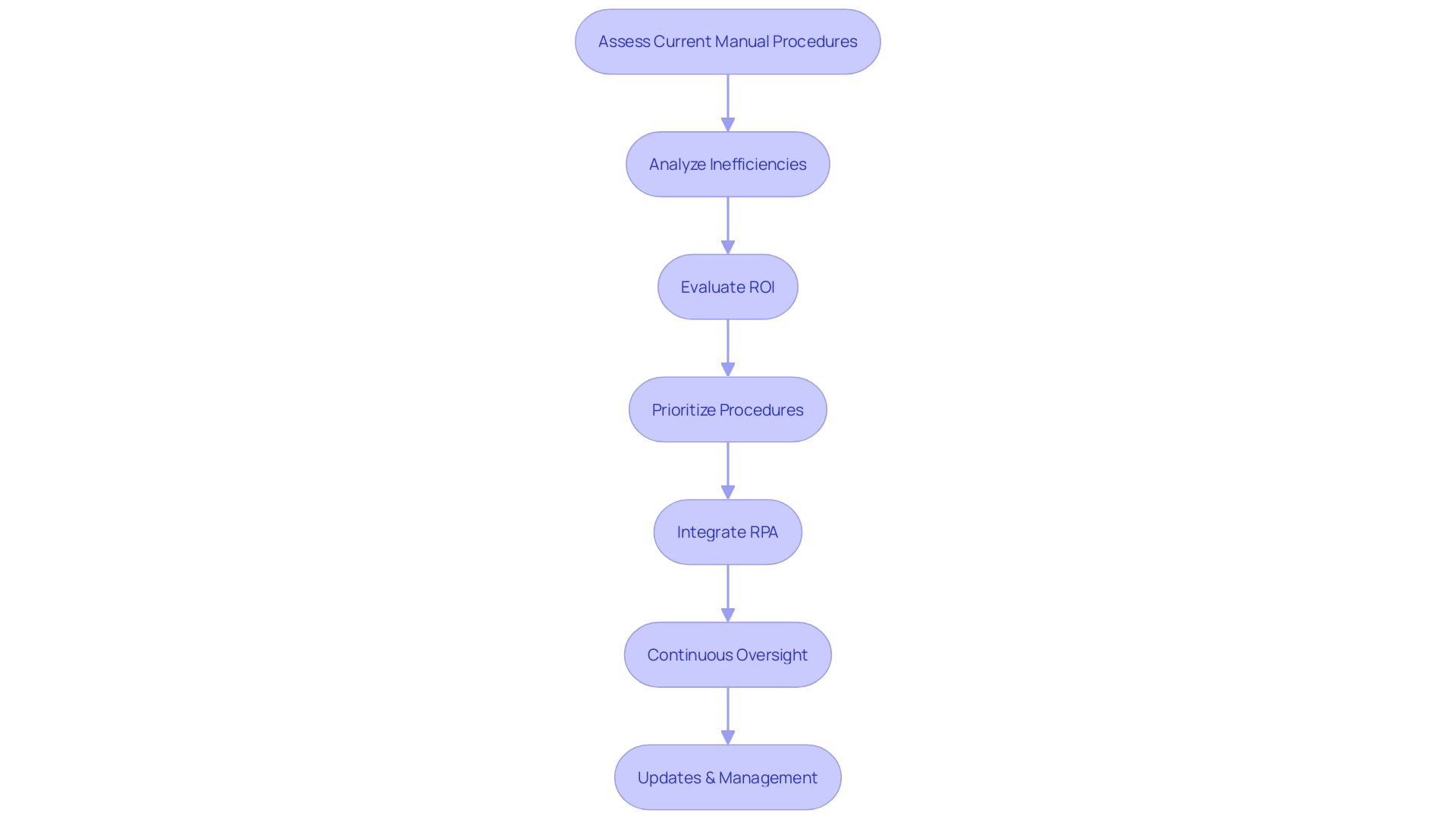
Pilot Project Selection and Proof of Concept
Embarking on the journey of Robotic Process Automation (RPA) in your organization can be transformational, but it’s important to validate its efficacy through well-executed pilot projects. These smaller initiatives offer a microcosm of your operations, allowing for a focused assessment of RPA’s impact. By choosing procedures that exemplify everyday duties, you can reveal insights into how mechanization may expand across the entire organization.
Taking inspiration from the NHS’s approach to digital technology adoption, begin by scrutinizing the security, appropriateness, and compliance of potential RPA solutions. This due diligence ensures that your chosen RPA aligns with industry standards and truly serves your organizational needs. It’s not uncommon to discover existing solutions within your own firm that could be repurposed or optimized before investing in new technologies. A rigorous initial assessment, coupled with detailed questionnaires, helps pinpoint the specific areas where RPA can deliver tangible benefits while addressing inefficiencies.
The integration of RPA should not be seen in isolation but as part of a broader strategy that balances automation with human ingenuity. The combination of digital workforces with human creativity and critical thinking can unlock unprecedented levels of productivity. As you consider which manual procedures to automate, take into account the time, costs, and potential ROI. Remember, it’s not just about automating for the sake of it; it’s about strategic modernization that elevates your operations.
In the context of the ever-evolving digital landscape, AI and cloud computing are reducing barriers to RPA adoption. They facilitate the handling of extensive data sets and optimize the digitization of assets and procedures across diverse industries. A Proof of Concept (PoC) serves as a low-risk, cost-efficient model to validate your RPA strategy, mitigating the risks associated with untested concepts and ensuring that your investment is sound and aligned with your strategic goals. By learning from the successes and challenges of others, you can approach RPA implementation with confidence and clarity, poised to reap its many benefits.
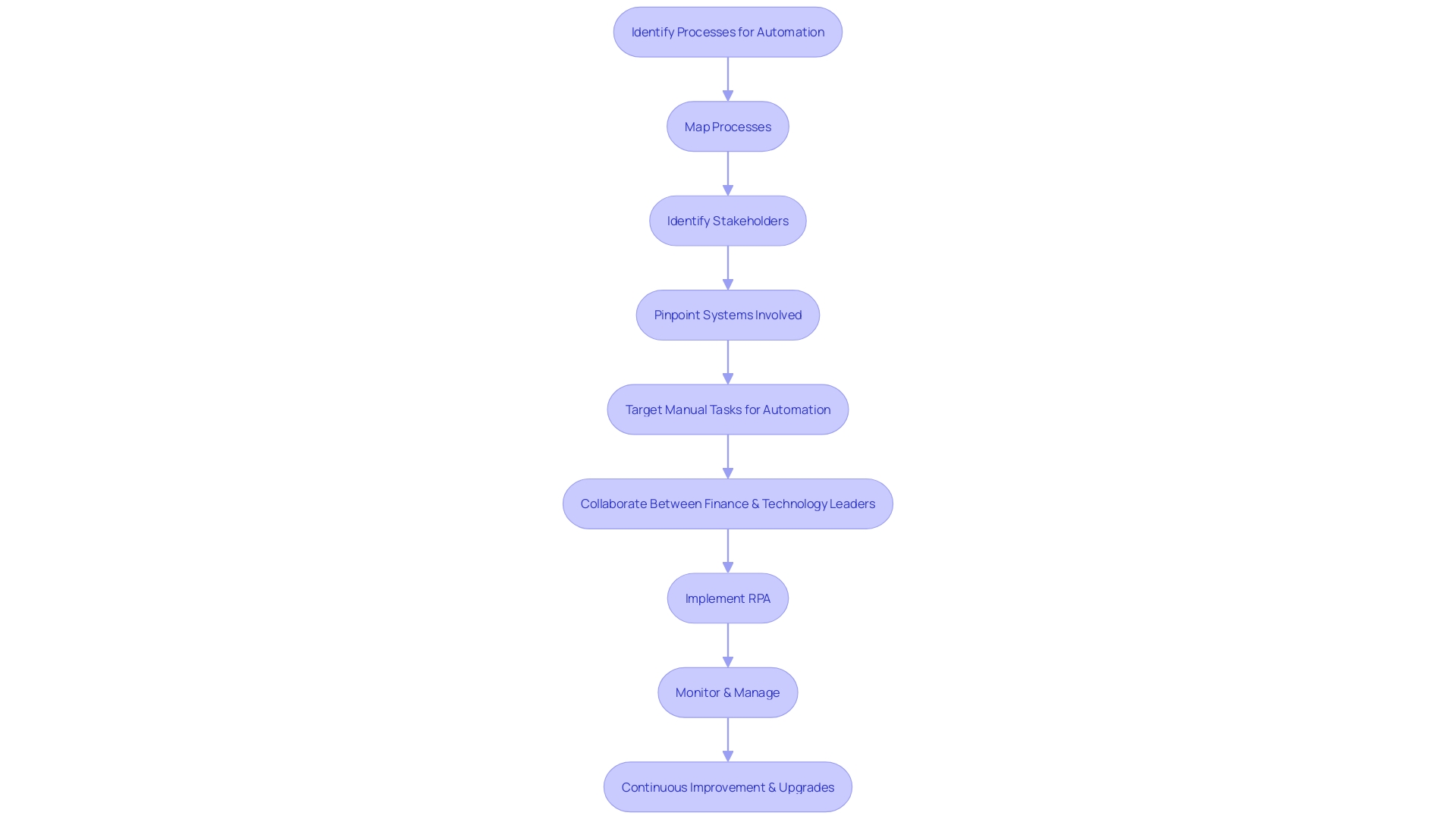
Evaluating RPA Tool Compatibility
Choosing the appropriate RPA tools for integration within the industry necessitates a strategic approach, with emphasis on factors such as integration capabilities, scalability, and security. Key questions like which manual processes should be automated and the specific inefficiencies they present are crucial to address before integration. Acknowledging the necessity for a system that upholds high-quality standards and compliance, as demonstrated by M&T Bank’s adoption of Clean Code standards, is crucial to minimize risks like security breaches and reputational harm. Moreover, the implementation of RPA must take into account the supply chain’s complexities, including the administration of open source components, as emphasized by the OSSRA report. Having an average of 526 open source components in commercial applications, automated security testing becomes essential for guaranteeing a secure and compliant environment. By thoroughly evaluating these factors, organizations can facilitate a seamless RPA implementation, aligning with the rapid digital transformation and stringent security demands of modern industries.
Preparing for RPA Implementation
To unlock the complete potential of Robotic Process Automation (RPA) in the technology sector, a strategic approach is crucial. It starts by recognizing the tasks suitable for mechanization, those that are carried out manually, repetitive, and consume a lot of time. As the technology sector evolves, integrating RPA becomes not just an option, but a necessity to stay competitive. With global enterprises allocating approximately $15 billion to generative AI solutions in 2023, the urgency to adopt RPA and similar technologies is clear.
A successful RPA implementation requires understanding its implications across the organization. This means fostering a culture of continuous learning and adaptation, essential for minimizing resistance and maximizing acceptance among the workforce. To ensure seamless integration, it’s crucial to address potential inefficiencies in processes earmarked for automation and to accurately estimate the time and financial investment required.
In addition, the emergence of AI and cloud computing has made advanced digital tools more accessible, allowing even individuals without specialized knowledge to make valuable contributions to a company’s technological capabilities. This shift underscores the importance of preparing employees for the changes that RPA will bring, including upskilling for new roles that emerge from the redefined workflows.
Businesses must also remain vigilant post-implementation, as RPA is not a ‘set-and-forget’ solution. Continuous monitoring, management, and upgrades are necessary to maintain stability and capitalize on the technology’s benefits, such as enhanced customer experience, increased revenue, and improved productivity. By setting clear timelines and success criteria, organizations can align their strategic vision with the transformative power of RPA, ensuring they are well-positioned to adapt and thrive in an increasingly automated industry landscape.
Gaining Buy-In from Stakeholders
Securing stakeholder commitment is a crucial step in the journey towards successful RPA implementation within the technology sector. This process transcends merely promoting the advantages of RPA; it requires a comprehensive understanding of the specific manual processes ripe for automation and an analysis of their current inefficiencies. By addressing potential reservations with well-researched responses, including clear ROI projections and integration timelines, leaders can pave the way for organizational alignment and secure the backing necessary for a fruitful transition.
Crucial to this endeavor is the precedent set by M&T Bank, a venerable institution in the banking industry, which embraced digital transformation amidst stringent security and regulatory demands. M&T Bank’s forward-thinking strategies included setting organization-wide Clean Code standards, thereby reinforcing the importance of high-quality, maintainable programs in a rapidly evolving technological landscape.
Further emphasizing the role of digital technologies, advancements in AI and cloud computing have drastically reduced barriers to adoption across various industries, from manufacturing to healthcare. This democratization of technology has elevated development from a support function to a core strategic asset, necessitating a strategic approach to adopting digital solutions.
In light of these industry shifts, it’s not merely about loving the technology but identifying and solving specific problems. As emphasized by experts, the focus should be on user-centric application development, starting with the user’s needs and working back towards the technology, rather than the reverse. This approach aligns with the evolving perspective on application testing, which is transitioning from a perceived cost center to a valuable investment with measurable ROI.
To achieve this goal, organizations should not only make use of the advancing technologies but also conduct comprehensive user research, prioritize simplicity, and embrace intuitive design languages. In doing so, they will not only gain stakeholder buy-in but also ensure the successful integration and utilization of RPA, delivering on its promise to enhance efficiency and drive innovation.

Addressing Potential Challenges and Overcoming Them
As the software industry navigates through digital transformation, Robotic Process Automation (RPA) promises to streamline operations, yet its integration is not without its hurdles. Important factors to consider prior to embracing RPA involve assessing which manual operations are ready for automation and identifying particular inefficiencies that automation could address. Additionally, the time and cost factors involved in integrating RPA into each process must be closely examined.
For example, M&T Bank, with its 165-year heritage, encountered the challenge of adopting Clean Code standards throughout the organization to improve program maintainability and performance amidst the all-digital shift. This reflects the broader imperative in banking to guarantee that applications uphold stringent quality and compliance standards due to the high-stakes nature of data security and transaction integrity in the industry.
In the realm of RPA, it’s not a set-and-forget system; ongoing monitoring, management, and updates are essential to maintain stability and efficiency. RPA aims to enhance productivity and accuracy while conserving time and resources, aligning with historical trends in business automation.
To facilitate a successful RPA implementation, it is crucial to engage in meaningful conversations with customers. Such interactions can yield insights into their challenges and preferences, fostering innovative solutions that resonate with users without disrupting their existing workflows. The rise of AI in development has prompted many leaders to hastily adopt AI-driven tools, often without consulting developersâhighlighting the importance of informed decision-making rooted in user experience.
Furthermore, upkeep of application programs remains a significant consideration, consuming a substantial portion of resources. A study from 1972 pointed out that application program maintenance accounted for 30.1 percent of data processing departments’ resources. This emphasizes the importance of strategic budgeting and effective lifecycle management to enhance the productivity of development and maintenance teams.
To summarize, although RPA presents persuasive advantages for the software sector, its adoption should be undertaken with a thorough comprehension of the particular workflows to streamline, the expenses and duration required, and the consistent dedication to upkeep and quality control, ensuring that any shift towards mechanization is both seamless and advantageous.

Designing an Ideal RPA Workflow
Designing the perfect workflow for Robotic Process Automation (RPA) in the software industry is akin to orchestrating a harmonious symphony between design and engineering. The design aspects focus on questioning and creating meaningful user experiences, while engineering seeks to solve technical challenges and ensure scalable, future-proof solutions. The convergence of these fields is pivotal as every modern business evolves into a technology company, integrating digital product teams to enhance human-centric digital experiences.
Before embracing RPA, it is imperative to assess the current workflow meticulously. This involves identifying manual tasks ready for robotic process optimization and identifying inefficiencies that RPA can address. Evaluating the time and cost implications of integrating RPA into these processes is also essential for a smooth transition.
The role of workflow extends beyond mere task execution; it’s about creating an ecosystem where communication is seamless and work flows effortlessly. By incorporating advanced software applications, algorithms, and rules, RPA can automate repetitive tasks, reduce human error, and bolster efficiency.
Proof of the significant influence of tools, such as AI pair-programming, is undeniable. These tools not only enhance productivity across the board but are particularly beneficial for junior developers, improving various productivity metrics such as task time, product quality, and cognitive load.
However, the path to successful RPA implementation is not without its hurdles. Amidst the enthusiasm for widespread technology transformation, a measured, incremental approach is often more effective. This approach allows for experimentation, course corrections, and scaling based on specific, achievable goals. The integration of RPA demands robust stakeholder support, adequate investment, and proficient change management.
For instance, a semiconductor foundry seeking to expedite market readiness, diminish development costs, and elevate quality embarked on a journey to standardize best practices. Through a comprehensive assessment of its R&D procedures, it established measurable goals, thereby achieving significant enhancements and advantages through digitization.
Fundamentally, creating an optimal RPA workflow in the technology industry is a strategic undertaking that necessitates a thorough comprehension of design and engineering principles, a deliberate strategy for process automation, and the acumen to confront challenges directly. By doing so, organizations can unlock unprecedented productivity gains and operational streamlining.
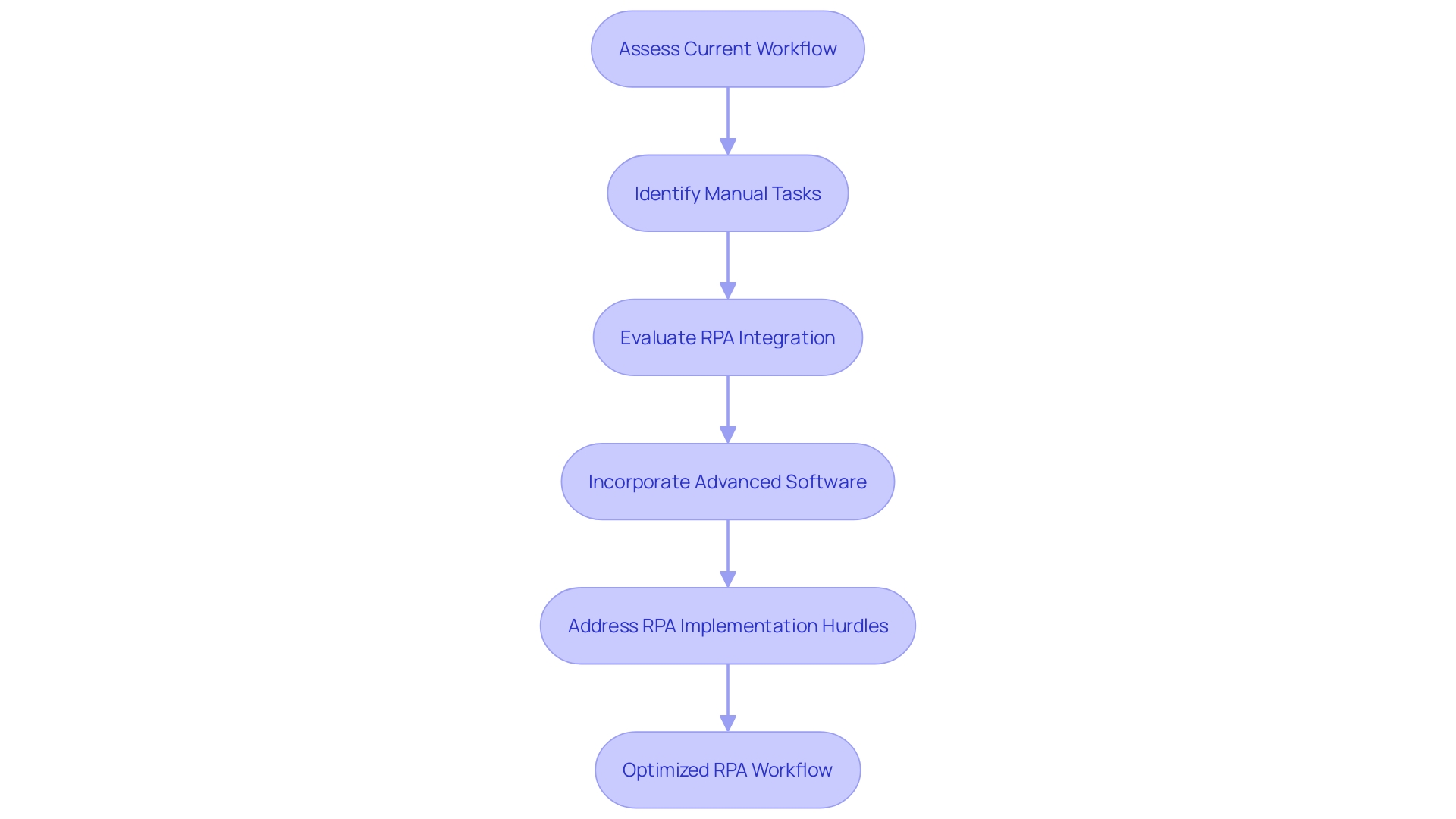
Implementing RPA: A Step-by-Step Guide
Starting the journey of Robotic Process Automation (RPA) requires a strategic alignment to ensure the industry meets the stringent demands of digital transformation. A methodical approach, beginning with a thorough analysis of which manual processes are ripe for automation, is crucial. This involves identifying inefficiencies that RPA can effectively address, along with evaluating the time and cost implications for integrating RPA solutions.
For example, M&T Bank, with its rich background and a keen focus on innovation, took on the task of maintaining high-quality coding standards crucial for banking applications. Their commitment to Clean Code principles underscores the importance of maintaining software that is not only efficient but also secure and reliable.
Meanwhile, the retail sector is showcasing the practical applications of advanced technologies, such as the checkout-free stores in Ireland utilizing Zippin technology. This illustrates the continuous development of mechanization from the water wheel to AI, which, despite its advancements, still requires human oversight for optimal operation.
Leaders in the software industry, therefore, must consider the lessons from these case studies and the broader technological landscape. By examining the State of the Automation Professional Report and understanding the experiences of automation professionals, industry leaders can better gauge the trajectory of RPA implementation and its implications on job satisfaction and career development.
As such, a structured guide to RPA implementation must encompass the initial selection of processes, development of a proof of concept, organization of resources, and meticulous testing. The pathway to successful deployment involves iterative refinement to ensure that the RPA solutions not only streamline operations but also adhere to the highest standards of quality and compliance, reflecting the lessons learned from banking to retail and beyond.

Operating and Monitoring RPA Bots
Robotic Process Automation (RPA) bots, once integrated into an organization, become crucial in streamlining operations, but their effectiveness depends on proper management and oversight. Establishing clear roles and responsibilities is essential for the upkeep of these bots, ensuring they continue to function optimally. Monitoring systems play a pivotal role as well, providing real-time insights into bot performance and swiftly pinpointing any operational issues.
For instance, Delivery Hero, operating across 70 countries with a substantial workforce, faced a recurring problem of employees being locked out of their accounts. To address this, the IT team, led by Dennis Zahrt and including talents like Slimani Ghaith and Dorina Ababii, embarked on a mission to eradicate IT bottlenecks, significantly reducing the time spent on account recovery and enhancing overall productivity.
Similarly, Rippling, supporting over 400,000 users, sought an AI agent solution that could efficiently handle complex inquiries related to HR, Payroll, and IT management. This demanded a system capable of delivering precise, timely responses, leading them away from decision-tree-based platforms towards more advanced, automated solutions.
Furthermore, the progression of mechanization from basic mechanics to advanced AI suggests that while technology has significantly enhanced efficiency and productivity, it requires ongoing collaboration with human supervision to uphold stability and adjust to upgrades, as emphasized by the CTO and Co-Founder of Reveille Software.
Recent advances in AI application within the UK’s public transport system and TSA’s facial recognition program in the US illustrate the potential of AI to enhance operational efficiency. However, these developments also raise concerns about privacy and the ethical use of technology, underscoring the importance of responsible management and observability in AI implementations.
In sum, successful RPA integration transcends mere deployment; it requires vigilant management and monitoring to ensure these digital coworkers deliver on their promise of improved operational efficiency.
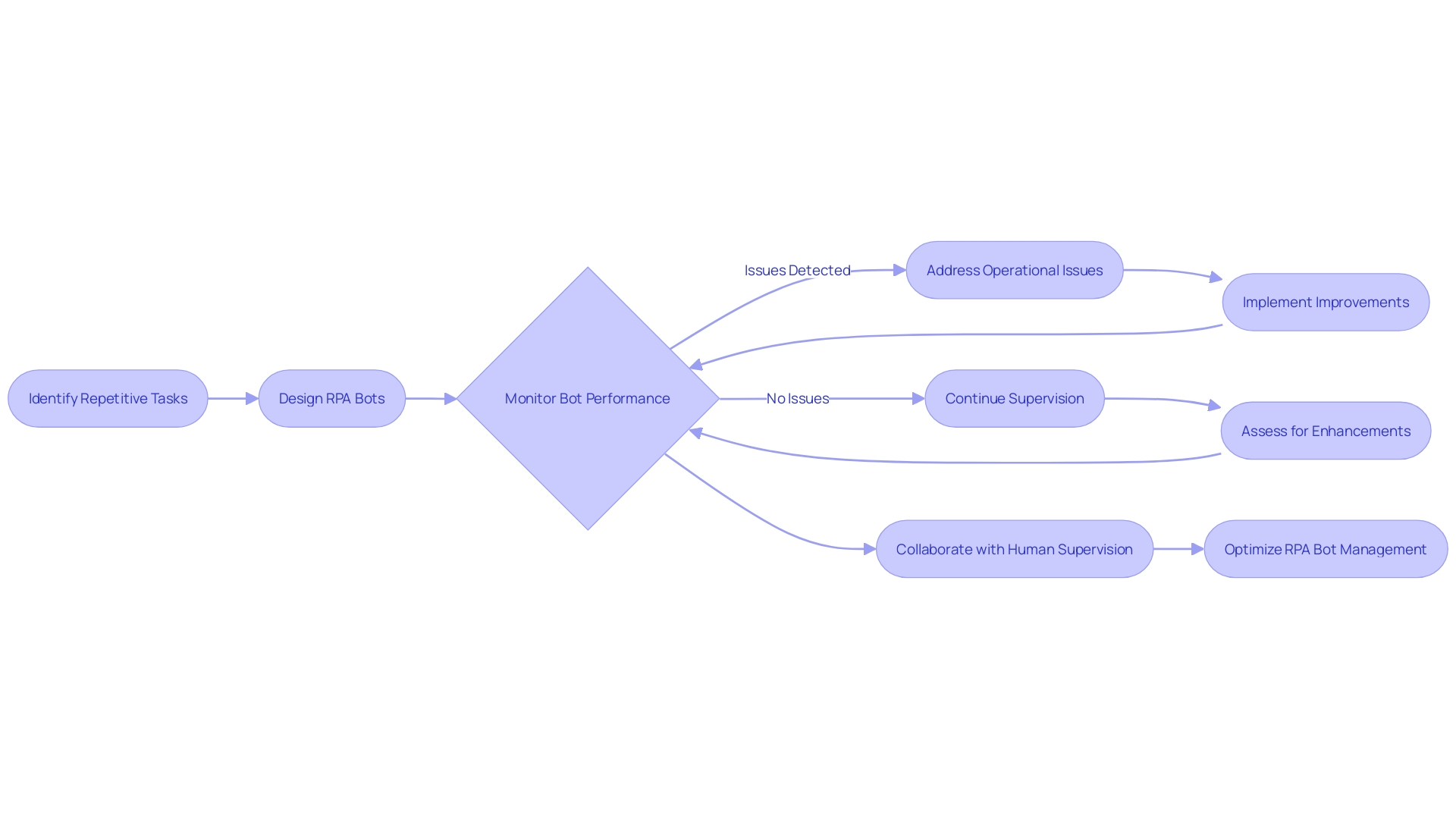
Common Challenges in RPA Implementation
When venturing into the realm of Robotic Process Automation (RPA) within the software industry, it’s imperative to navigate potential challenges with a strategic approach. A successful RPA implementation requires clear goals and the choice of activities ready for automation. It’s about inquiring about the appropriate inquiries: Which manual procedures should be automated? What inefficiencies could RPA address? What are the time and cost implications for integrating RPA into each process? M&T Bank, a respected establishment with a 165-year heritage, tackled the digital transformation directly by establishing Clean Code standards to support program maintainability and performance, ensuring their operations remained efficient, reliable, and secure. Similarly, RPA adopters must plan meticulously, choose the appropriate tools, and foster an environment conducive to change, bolstering their defenses against data breaches and upholding stringent regulatory standards. With over 27 thousand healthcare facilities globally trusting Cerner’s electronic health records system, and Epic EHR managing more than 60% of records in the U.S., the healthcare industry exemplifies the extensive reach and potential of RPA. As these technologies evolve, the insights from a global survey of 1,639 automation professionals highlight the experiences of those in the field, their transition into automation roles, and the emerging integration of AI into their work. Understanding these dynamics is a cornerstone of effective leadership in the industry’s ongoing modernization.

Measuring Success and Scalability of RPA Initiatives
For software organizations aiming to harness the power of Robotic Process Automation (RPA), it’s essential to go beyond just deployment and delve into the measurement of success and scalability. This necessitates the establishment of a robust framework for tracking and analyzing the performance of RPA initiatives, which involves tailoring key performance indicators (KPIs) to reflect the company’s strategic objectives. By doing so, firms can leverage these insights to inform decisions, refine their RPA strategies, and enhance operational efficiency.
To illustrate, consider the case of Lindy, an AI assistant designed to automate a complex array of tasks. Lindy’s success depended on integrating a multitude of applications and services. By tracking and refining performance metrics, the integration enabled AI assistants to efficiently carry out tasks, which would have been impossible without it. Similarly, Delivery Hero tackled the challenge of employee account lockouts by automating the recovery process, reducing the time spent on each request from 35 minutes to a near-instant solution, significantly improving operational efficiency.
These examples demonstrate the transformative impact of RPA when paired with diligent monitoring and continuous improvement. By adopting this approach, technology companies can ensure that their RPA initiatives are not only successful but also scalable, adapting to the evolving needs of the business and maintaining a competitive edge in the dynamic tech landscape.
Future Trends and Innovations in RPA
As the field of Robotic Process Automation (RPA) continues to thrive, it is crucial for software organizations to actively embrace emerging technologies like cognitive computing and machine learning to maintain a competitive edge. These advancements synergize with RPA, paving the way for transformative operational efficiency and innovation.
Before implementing mechanization, it’s crucial to carry out a comprehensive examination to recognize procedures suitable for RPA incorporation. Questions like which manual tasks are most suitable for automation and what inefficiencies RPA can address can guide organizations in making strategic decisions. This analytical approach also helps in evaluating the potential return-on-investment and assessing how well RPA solutions can integrate with existing digital infrastructures.
The landscape of business is increasingly characterized by the integration of human and digital labor, creating a collaborative ecosystem where both elements enhance each other’s capabilities. It’s not merely about automating tasks but also about establishing a balance that leverages human creativity and Ai’s efficiency. As the market for AI continues to expand, with projections reaching $305.90 billion by 2024 and a growth rate of 15.83% from 2024 to 2030, the significance of RPA in the AI-driven business environment becomes even more pronounced.
Leaders in the technology industry must consider continuous improvement and hyper automation as part of a strategic journey, ensuring that developments in AI and RPA are not only adopted but also continuously optimized. This dedication to progress is essential for unleashing the complete potential of an AI-empowered workforce, optimizing procedures, and ultimately shaping the future of work.
In essence, to capitalize on RPA and its associated technologies, software organizations must engage in careful planning, invest in the right tools, upskill their workforce, and commit to ongoing refinement of their processes. By doing so, they can ensure that they not only keep pace with but also lead the way in the rapidly advancing field of automation.
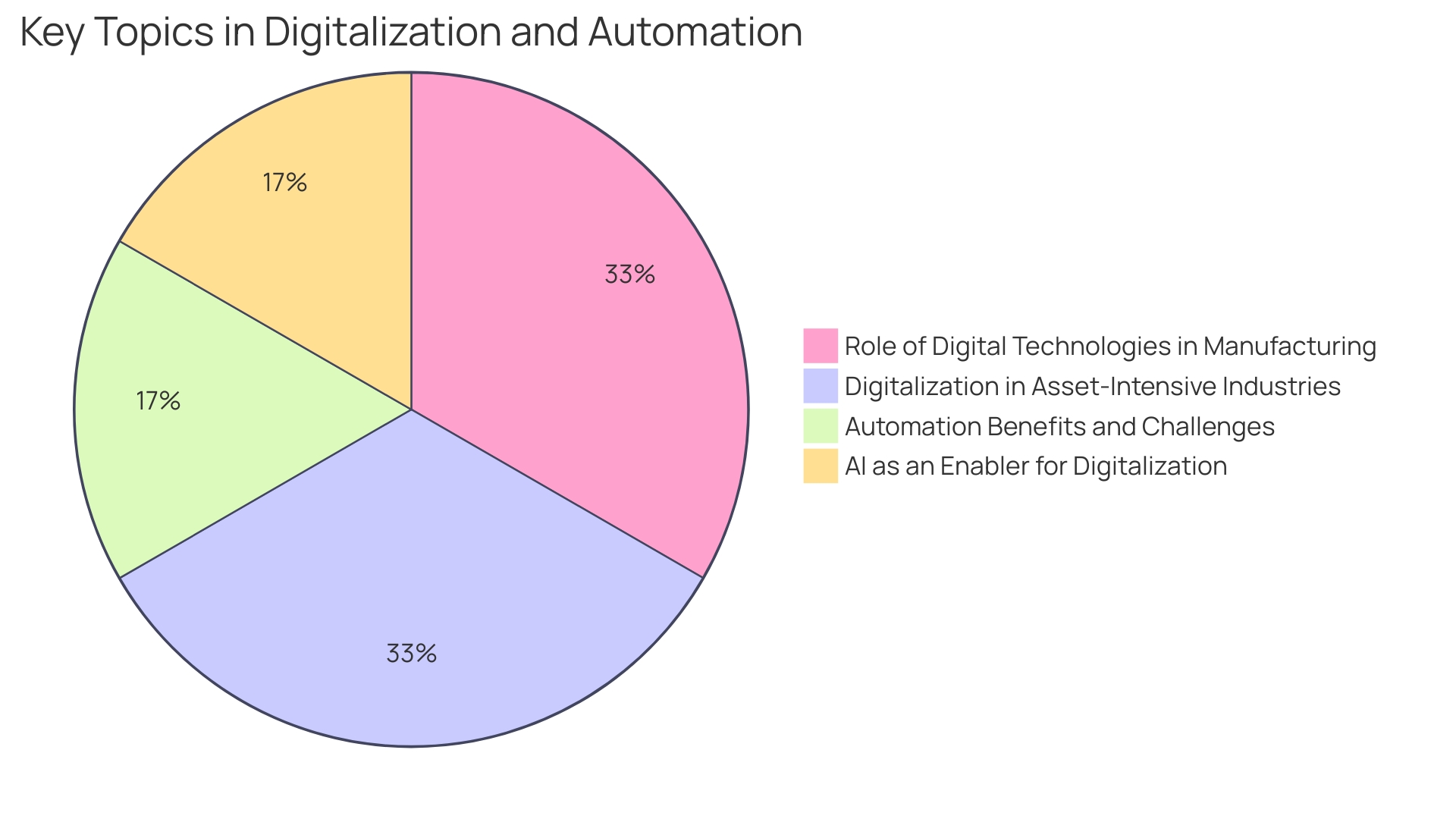
Conclusion
In conclusion, implementing RPA in the software industry is a strategic solution for enhancing operational efficiency and staying competitive. By identifying automation opportunities, assessing processes, and conducting feasibility studies, organizations can streamline operations and improve accuracy. Selecting the right RPA tools, preparing for implementation, and gaining stakeholder buy-in are crucial steps.
Addressing potential challenges and measuring success through performance tracking and refinement are essential. Embracing emerging technologies ensures a competitive edge and future readiness. Overall, RPA empowers software organizations to optimize their processes, enhance efficiency, and thrive in the digital ecosystem.
Ready to streamline your operations and improve accuracy? Learn more about our RPA solutions.
Introduction
Experiencing audio issues on your computer can be frustrating, but fear not! Windows provides a straightforward solution to tackle common problems with its built-in audio troubleshooter. By accessing the Settings app and navigating to the Troubleshoot section, you can easily identify and fix audio glitches.
But that’s not all. This article offers practical solutions to various audio challenges, such as selecting the correct audio output device, checking for loose connections and hardware issues, updating audio drivers, and managing app permissions for audio access. It also covers troubleshooting specific audio issues, advanced troubleshooting techniques, preventive measures, common mistakes to avoid, and utilizing additional resources for troubleshooting.
So, whether you’re dealing with distorted sound, silent speakers, microphone problems, or any other audio-related issues, this article has got you covered. Get ready to optimize your audio experience and enjoy seamless sound on your computer!
Running the Automated Audio Troubleshooter
Encountering sound issues can be frustrating, but Windows offers a straightforward solution to address common problems. The sound troubleshooter is a useful built-in tool created to identify and resolve sound glitches effectively. To make use of this feature, you need to access the Settings app from the Start menu, then head to ‘Update & Security’, and from there, navigate to ‘Troubleshoot’. Within this section, you’ll find the ‘Playing Audio’ option, where you can click ‘Run the troubleshooter’. Simply follow the on-screen prompts and let the tool work its magic to resolve any detected sound concerns.
It’s worth noting that with the Windows 11 2024 Update, new features and changes, particularly in sound settings and AI enhancements, may require newer hardware capabilities and are expected to roll out more broadly in the coming months. Meanwhile, for those eager to test their microphone sound processing on Windows 11 version 24H2, the steps are clearly laid out in the Settings under the System category.
Moreover, for users seeking advanced sound recording and editing options, tools like EaseUS RecExperts offer flexibility in recording sources and quality adjustments. For capturing system sounds directly, Windows includes the Stereo Mix option, which, once set up, provides a straightforward recording experience. These solutions give users more control over sound management, further demonstrating Windows’ commitment to accommodating both basic and sophisticated user needs.
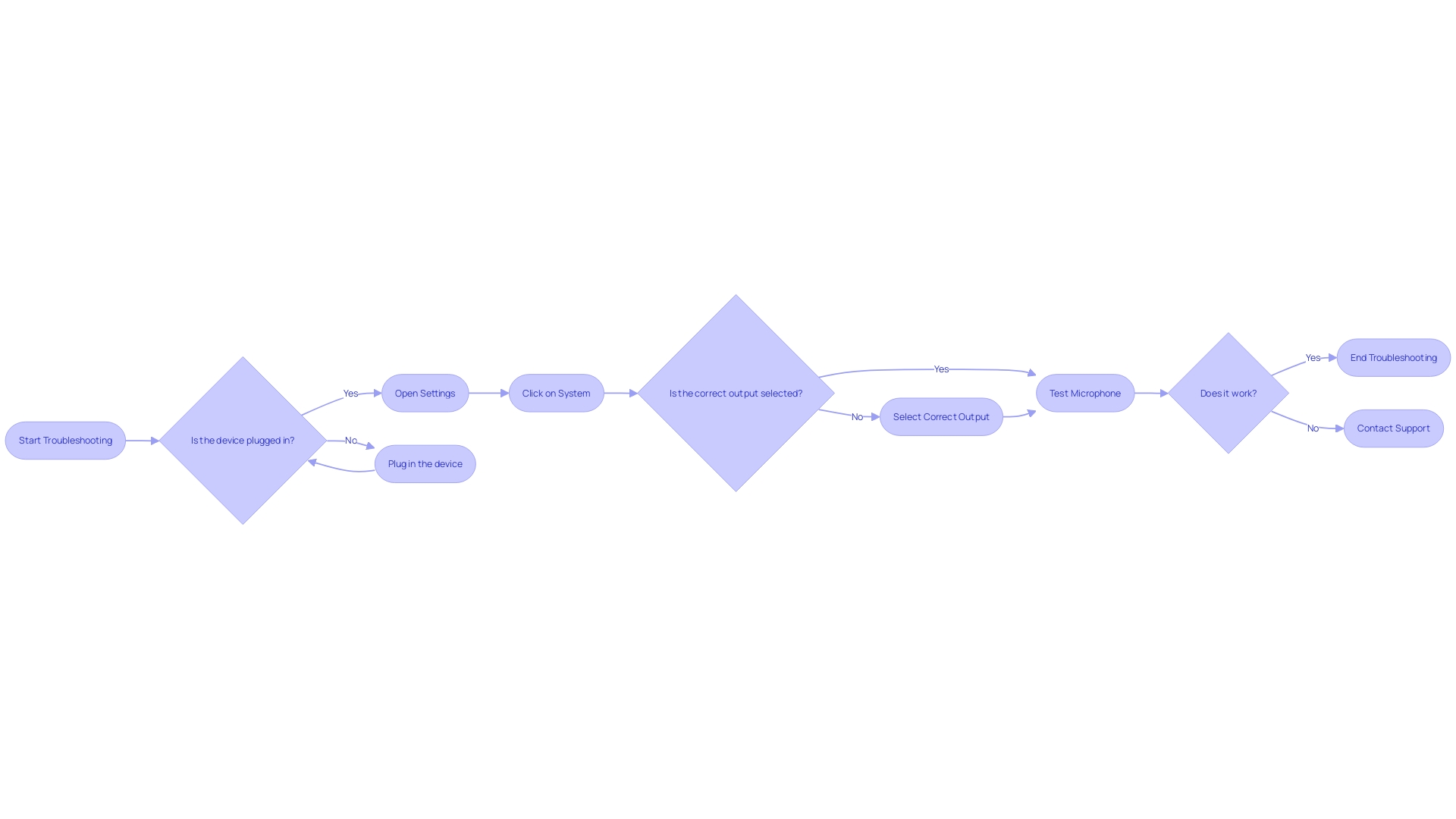
Selecting the Correct Audio Output Device
If you find yourself struggling with sound problems, it could be a simple matter of having the incorrect output selected. Here’s how you can quickly ensure your computer sings the right tune:
- Locate the speaker icon in the system tray and give it a right-click, choosing ‘Open Sound settings’.
- In the ‘Output’ area, you’ll see a dropdown menu with a list of sound output options.
- Click to view the options and choose the output equipment that fits your requirements.
- Finally, to confirm everything is in harmony, play a sound or video.
It’s not uncommon for computers to default to the previous sound device once you disconnect a new one. This seamless transition often goes unnoticed until an unexpected issue arises. For Mac users, during the wait for a system update, changing the ‘Allow accessories to connect’ to ‘Ask for new accessories’ in the Security configuration might bypass the issue. Windows users might find a quick fix with a Taskbar shortcut for switching sound outputs.
Remember, a sudden absence of sound is more likely a settings oversight than a hardware hiccup. If you’re still out of luck after these steps, it might be time to contact support—but don’t worry, such issues are often simpler than they seem at first glance. Restarting your browser or your computer can also work wonders in clearing those baffling sound gremlins.
Checking for Loose Connections and Hardware Issues
Troubleshooting sound problems may seem challenging but comprehending the underlying reason can often result in a straightforward solution. For instance, if you’re experiencing low sound quality with Bluetooth headphones, it’s important to acknowledge that these devices have different modes. One mode prioritizes high-quality sound for listening, while the other mode is for speaking and listening concurrently, which can result in reduced sound quality. As Paul Blaxill, Director of IT at All Souls College, observed, implementing the appropriate sound solution can greatly improve sound quality, even in difficult environments like a room with stone walls and a high apex roof.
To address potential audio problems, start with the basics:
– Check all cable connections, including the audio jack or USB, to ensure they’re firmly connected.
Ensure that external speakers or headphones are properly connected to your equipment.
– Examine cables for damage and replace them if needed.
– After examining connections, test the sound. If problems continue across various shows or channels, contemplate modifying your device configurations to ‘Stereo’ or ‘Normal’ for sound output.
Remember, an unexpected lack of sound is usually due to settings or connectivity issues rather than hardware faults. However, if the problem continues after these steps, it may be time to consult with professionals or reach out to support services.
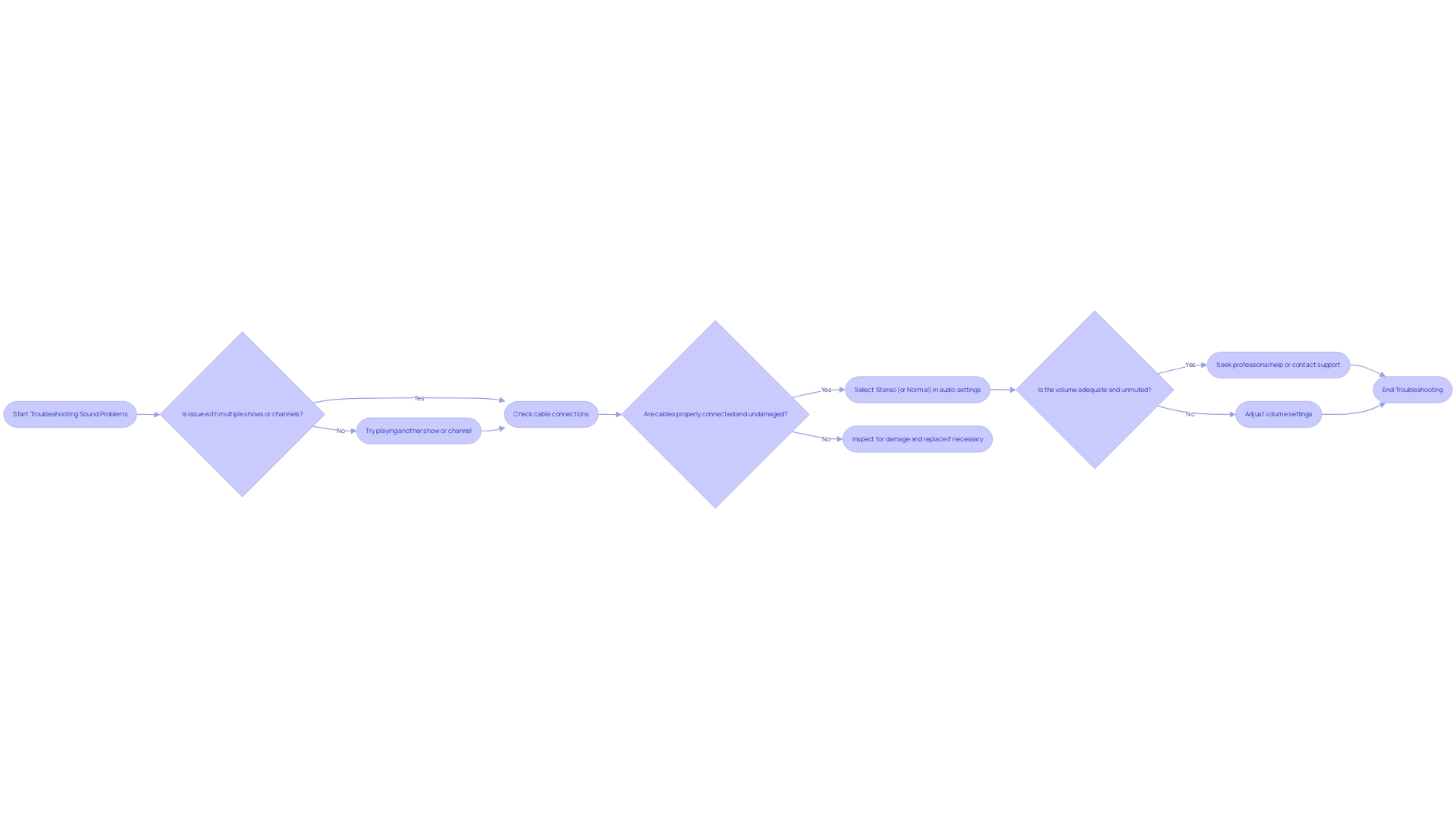
Updating Audio Drivers
Updating sound drivers is a crucial step in resolving many common sound issues on computers. These drivers serve as vital intermediaries between your operating system’s software and the sound hardware, guaranteeing smooth communication and excellent sound performance. To initiate an update, access the ‘Device Manager’ by pressing the Windows key + X. Inside this utility, go to ‘Sound, video and game controllers’ and right-click on your audio to choose ‘Update driver’. Opt for the automatic search for updated driver software and follow the prompts to install any available updates. A system restart is recommended after the process to ensure all changes take effect.
Improvements in driver management have simplified this process over time. Microsoft now includes a diverse range of drivers with Windows, which means many gadgets work immediately upon connection, reducing the risk of driver-related problems. Furthermore, the standardization of device protocols means that a single driver can often accommodate a multitude of devices from various manufacturers, streamlining the update process even further.
The impact of these updates extends beyond mere functionality. As sound technology advances, innovations like spatial sound are introduced, which utilize software to simulate surround sound environments, even with standard stereo speakers or headphones. This technology can handle multiple channels and enhances the listening experience by manipulating sound characteristics such as pitch to mimic distance and direction.
Sound continues to be a dynamic and essential component of our digital experience, as demonstrated by the advancement of open immersive sound standards like IAMF, which serve various applications including streaming, gaming, and virtual reality, guaranteeing a wide range of devices can deliver captivating sound experiences.
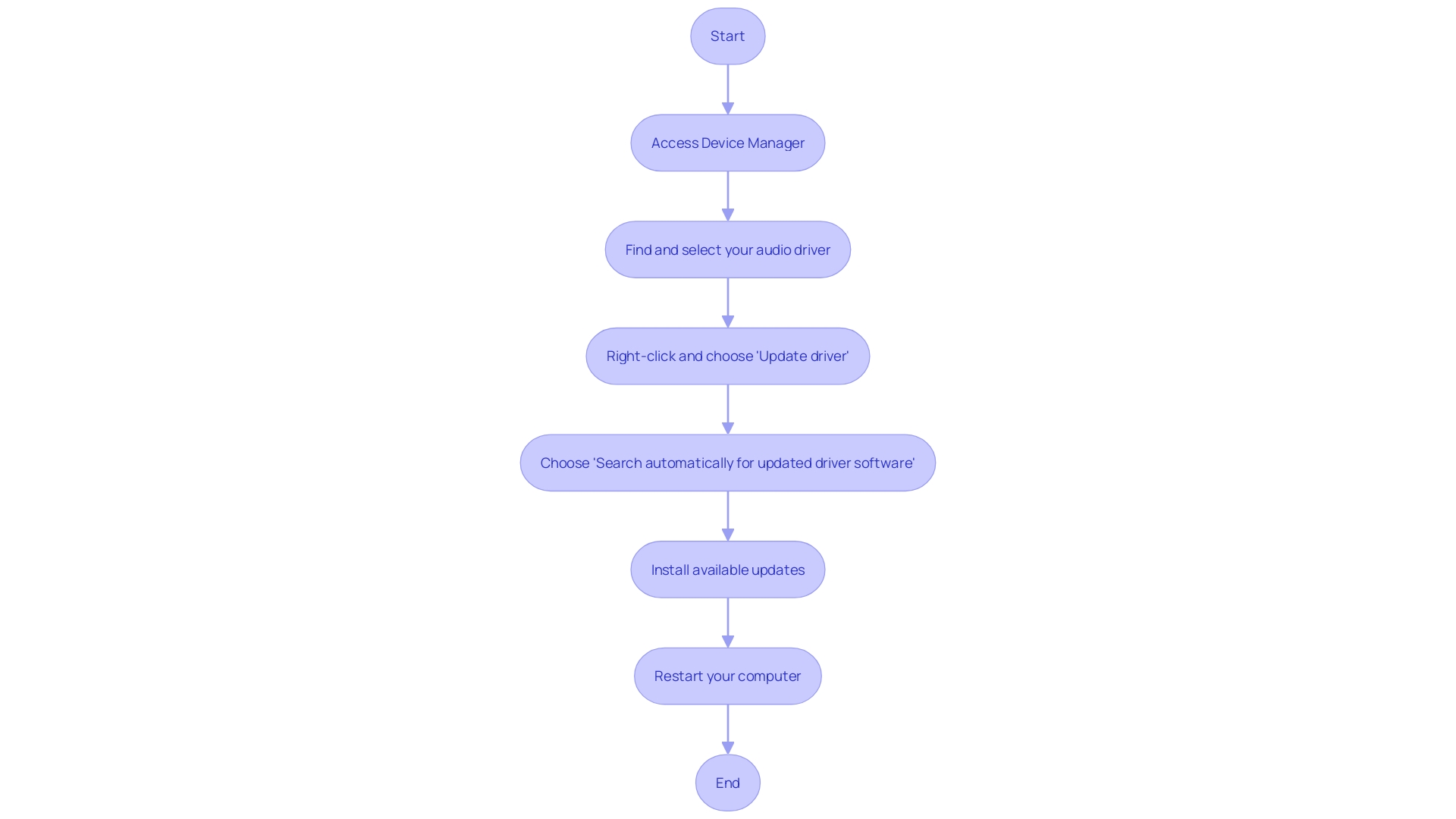
Checking for Windows Updates
Maintaining the up-to-date state of your Windows is essential for the seamless operation of audio services, particularly when utilizing advanced functionalities such as Text-To-Speech (TTS) that depend on specific APIs and components of the operating environment. To update your device, go to ‘Settings’ from the Start menu and choose ‘Update & Security’. From there, choose ‘Windows Update’ and click ‘Check for updates’. Should updates be available, select ‘Download and install’. It’s essential to restart your computer if prompted, securing the updates’ integration.
Microsoft’s continuous improvements, like the incorporation of generative AI into the OS, highlight the significance of regular updates. The Windows 11 2024 Update, for instance, introduces over 150 new features, with a phased rollout to ensure stability. Notable among these is the enhanced audio processing tool in the sound settings, enabling users to compare different audio modes—a testament to Microsoft’s attention to audio performance and user experience.
For developers and IT professionals, the significance of updates extends further. The Chromium Multi-Process Architecture, for example, ensures that untrusted code is executed in a sandbox environment, isolated from vital resources, which can be impacted by updates. Additionally, using the COM (Component Object Model) framework, updates can affect how components such as the ISpVoice interface interact with the speech libraries of the operating environment.
Considering these progresses, it’s evident that keeping up to date with Windows updates not only fixes sound problems but also gets your device ready for the newest characteristics and security improvements. The Windows 11 2024 Update, partially available since June 18, 2024, brings forward a suite of innovations that, while not yet fully implemented, will progress to wider availability in the following months. Users can expect iterative improvements and, for the best experience, may need to consider hardware upgrades to fully leverage new AI-driven capabilities.
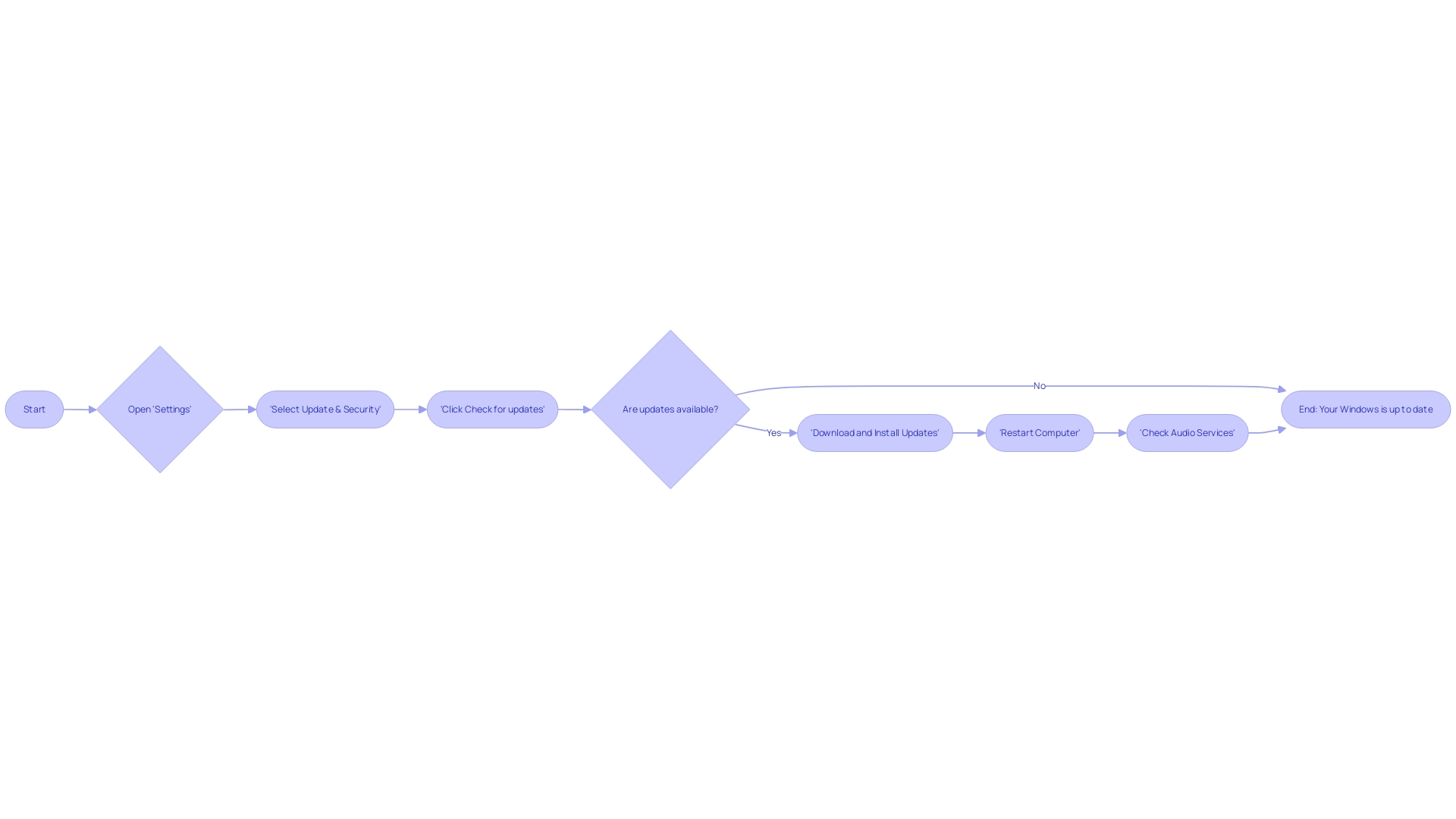
Disabling Audio Enhancements
To resolve sound issues caused by sound effects or enhancements to the audio driver, you can disable these functions through a straightforward step-by-step process. Start by performing a right-click on the speaker icon found in the system tray and choose ‘Open Sound options’. Navigate to the ‘Sound Control Panel’ and click the ‘Playback’ tab. Here, select the audio equipment you’re using and click on ‘Properties’. Inside the Properties window, locate the ‘Enhancements’ tab and tick the checkbox for ‘Disable all enhancements’. Apply these settings by clicking ‘Apply’, then ‘OK’ to ensure the changes take effect.
Audio enhancements can sometimes unintentionally decrease the quality of sound or introduce undesired noise, as suggested in studies and user experiences with Bluetooth equipment. For instance, when utilizing the microphone on Bluetooth headphones, users have reported a noticeable dip in sound quality along with static or popping sounds. This is often due to the device’s switch to a mode that prioritizes the microphone’s use over playback quality, a common characteristic in Bluetooth technology’s functionality.
The advancement of sound technology, including the establishment of immersive sound standards like IAMF, highlights the significance of adjustable sound configurations. IAMF’s codec-agnostic container specification, designed for diverse applications such as streaming and gaming, allows for playback time rendering algorithms that can significantly enhance the user experience. This advancement in the sound technology field is evidence of the necessity for customized sound configurations that address individual user needs.
In the context of web accessibility, the Ford Foundation’s new video accessibility plugin for WordPress is a prime example of adapting to the diverse needs of users. This initiative aligns with the broader mission to address and eliminate inequality, demonstrating that technology must evolve to serve its audience more effectively. By deactivating unnecessary sound enhancements, users gain control over their listening experience, guaranteeing that the sound output is optimized for their individual needs and preferences.
In the end, the capability to deactivate sound enhancements is not just a question of personal choice but also a crucial element of guaranteeing an inclusive and flexible technological environment that addresses user feedback and the ongoing progress in sound technology.
Managing App Permissions for Audio Access
Modifying app permissions for sound access is a vital measure in guaranteeing that your applications perform at their best, particularly when they’re essential to your everyday tasks. If your app’s core functionality includes sound features, such as in video conferencing or media playback, the following guide will be invaluable.
To begin, go to the ‘Privacy’ options of your device and choose ‘Microphone’. Here, you’ll find the option to ‘Allow apps to access your microphone’. Ensure that this setting is enabled to activate sound functionality. Next, review the list of applications and toggle on the switch for those that need to use the microphone. This could include apps that leverage spatial sound experiences, which are transforming user interactions by creating realistic, surround sound environments.
For example, spatial sound can spatialize sound in a way that mimics real-world dynamics, enhancing the user experience. Imagine being on a video call where each participant’s voice seems to come from a different direction, improving clarity and engagement. Or, while enjoying a podcast, feeling as though you’re sitting in the studio with the hosts. Enabling microphone access for apps that support spatial sound is therefore essential for a fully immersive experience.
It’s essential to regularly review and adjust these permissions, particularly after updates to your operating systems or apps, to maintain the security and functionality of your device. Remember, app designs and privacy protections are continually evolving, with industry leaders like Microsoft and Google constantly updating their policies to enhance user safety and app quality. By maintaining your settings up to date, you ensure a smooth sound experience that meets the high standards expected by users today.
In conclusion, configuring app permissions is more than just a technical necessity; it’s about crafting an sound experience that resonates with users and meets the diverse needs of today’s digital environment. By following these simple steps, you can customize your device to provide powerful, clear, and secure interactions for all your essential applications.

Troubleshooting Specific Audio Issues
Experiencing sound problems can be frustrating, whether it’s distorted sound, silent speakers, or microphone issues. Here’s how to tackle these challenges effectively:
-
Troubleshooting Distorted Sound
Start by checking if the distorted audio is consistent across various shows or channels. If it’s an isolated case, switching to different content may resolve the problem. Make sure the sound options on your equipment are set to Stereo or Normal. Keep in mind that when the microphone is turned on, Bluetooth headsets may occasionally switch to a lower-quality mode, which could result in a decrease in sound quality. -
Troubleshooting No Sound from Speakers
If your speakers suddenly go quiet, don’t panic. Frequently, the problem is not with the equipment but instead a configuration that has been altered or an audio output apparatus that is still connected. Verify that the volume isn’t muted and that sound levels are adequate. For those using Windows, Microsoft’s Support site can offer additional guidance. -
Troubleshooting Microphone Problems
When your microphone isn’t working as expected, starting with the basics is crucial. Check the connections and ensure that the microphone is selected as the input device. If you’re using a headset, be aware that some systems may reduce sound quality while the microphone is in use to allow for clear voice transmission.
These steps are a great starting point, but if problems persist, it’s advisable to seek further support. For Apple users, contacting Apple Support might be necessary, especially if there’s a potential hardware issue.

Advanced Troubleshooting: Background Services and Exclusive Control
For a more thorough exploration into resolving sound problems beyond the fundamental checks, contemplate two advanced approaches that have demonstrated effectiveness in different situations. Firstly, investigate any background services that may be affecting sound performance. These long-running operations might not have a user interface, but they can interfere with your audio output. To control these, access the application options or system preferences to monitor and adjust the running services as needed.
Secondly, deactivating exclusive control options may also be advantageous. This functionality enables specific applications to have complete dominance over the sound system, which can impede other applications from using it concurrently. Go to the sound settings in the control panel, and under the playback devices, find the properties of your default sound device. Within the advanced tab, you can uncheck the option for exclusive control. This simple action can resolve conflicts and restore sound functionality.
Remember, these are just a starting point. If problems persist, it’s important to consider the context of the issue, just as experienced teams do when addressing complex software problems. By systematically analyzing similarities among impacted users and setups, as observed in practical instances from companies such as Gusto and Kargo, you can identify the origin and progress towards a solution. Keep in mind the wise words of seasoned developers: integrate solutions that are tried and tested across various environments, and don’t hesitate to reach out for support if the challenge exceeds your expertise.

Preventive Measures and Best Practices
Enhancing sound quality necessitates a strategic approach to managing your systems and equipment. By adhering to a few key practices, you can greatly enhance the clarity and quality of your sound output. First, make sure your sound drivers remain current with regular updates to maintain optimal performance. Opt for established and reliable sources when downloading audio-related software to avoid the pitfalls of unsupported or harmful applications.
Handle connections and disconnections of the sound equipment with caution to avoid hardware damage. Regular cleaning of your sound devices and cables is crucial to avoid the negative consequences of dust and debris buildup. Moreover, prior to making any substantial adjustments to your sound settings, it is advantageous to establish restore points to protect against possible setup problems.
These measures are not just theoretical advice but are grounded in real-world success stories. For instance, the significant sound improvements at All Souls College, Oxford, were accomplished through meticulous choice and administration of their sound setups, leading to a ‘huge advancement’ in sound quality, as per Paul Blaxill, IT Director. Similarly, Adestia’s choice to use Sennheiser for their clarity and reliability underscores the importance of selecting reputable equipment.
In the realm of podcasting, ensuring your listeners receive crisp and clear sound involves more than just the right microphone or headphones. It encompasses a holistic approach, including direct connections from text-to-speech systems to recording setups and the use of specialized recording software for pre-recording content. As Ross Bencina mentions, ensuring glitch-free sound output is paramount, and ‘real-time waits for nothing.’ Therefore, embracing these best practices is not only about avoiding problems but also about establishing a standard for sound excellence.
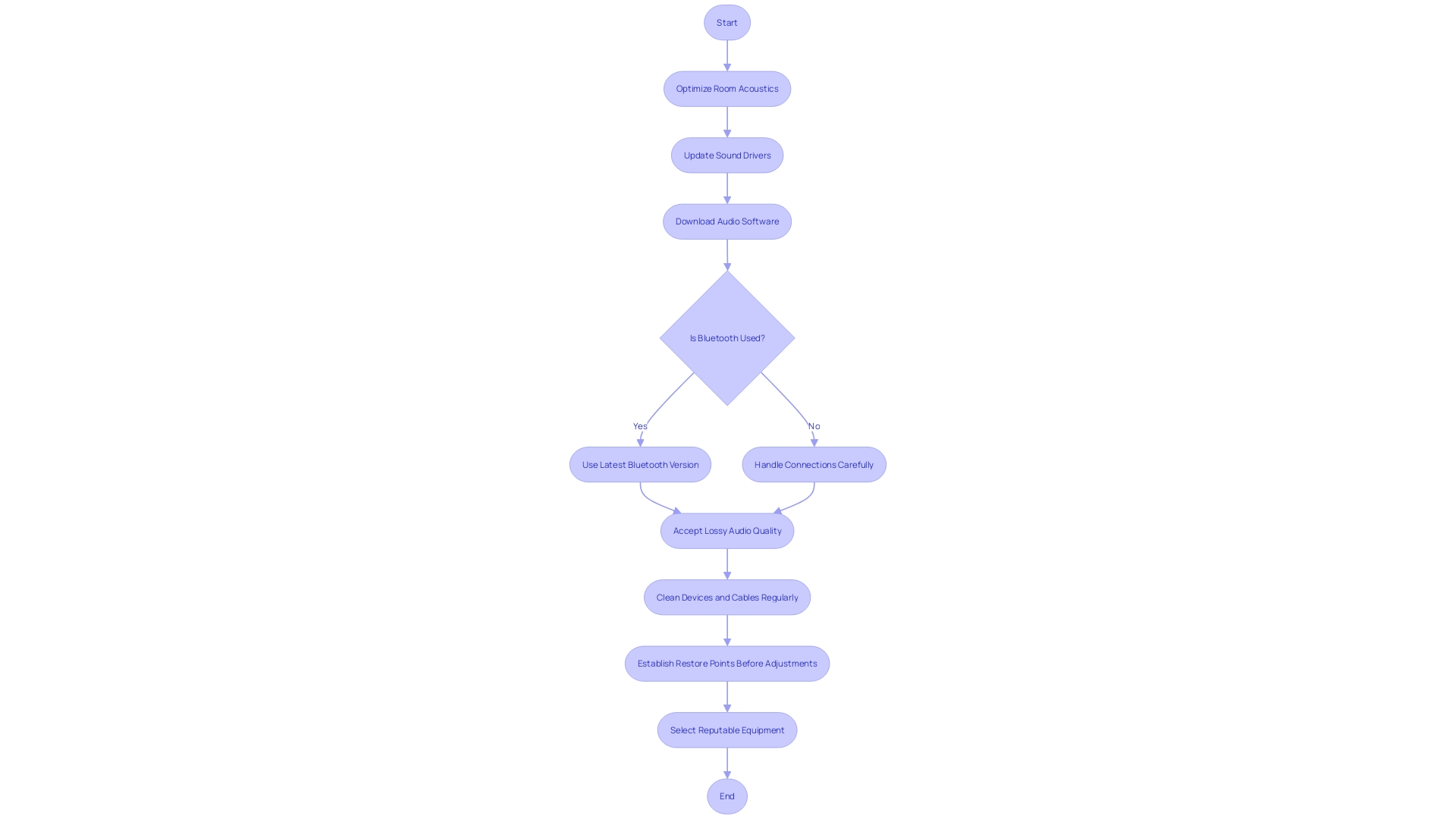
Common Mistakes to Avoid in Audio Troubleshooting
When addressing sound problems, avoiding common pitfalls is crucial for a quick resolution. To start, ensure you’re not bypassing fundamental checks. For instance, it’s imperative to verify that your volume isn’t muted and that sliders are adequately adjusted on both your media player, like Spotify, and the device itself. These basic steps are often overlooked but can save you significant time and effort.
Moreover, it’s vital to test your sound after each troubleshooting action. If you’re using Bluetooth headphones and experiencing reduced sound quality or hearing static, it could be due to the two distinct modes of operation. The initial mode emphasizes on high-quality sound, whereas the second utilizes the microphone for communication, compromising sound fidelity. Understanding this can help you pinpoint whether the issue arises during general listening or active communication.
It’s also important to consider the sound profiles your devices use. If you’re aiming for a rich listening experience, remember that mono sound, which uses a single channel, might not deliver the depth and detail you’re seeking. Stereo sound, on the other hand, utilizes two channels and can create an immersive soundscape, making it the preferred choice for a dynamic auditory experience.
Lastly, don’t underestimate the importance of regular Windows updates, which may contain essential fixes for sound-related issues. Avoid making unnecessary changes to system services or advanced settings unless you’re confident in your technical knowledge or have expert advice at hand.
Remember, successful troubleshooting is methodical and informed. By avoiding these common errors, you’ll be better positioned to tackle sound issues effectively.
Utilizing Additional Resources for Troubleshooting
When faced with complex sound challenges, there are a multitude of resources to tap into for effective troubleshooting. Online forums and communities are treasure troves of information, where one can find discussions and solutions related to a wide array of sound codecs, such as the Wolfson WM8961. Though discontinued, insights from these collectives can clarify confusions surrounding terminology and practical use.
For problems related to sound equipment, support websites provided by manufacturers offer a direct channel to comprehensive technical help and guidance tailored to each specific piece of equipment. These platforms can be instrumental in navigating the nuances of connecting devices, such as a Bluetooth-enabled headset to a landline, ensuring seamless integration and functionality.
Seeking the expertise of professional sound technicians or IT support can be invaluable, especially when dealing with advanced problems that go beyond quick fixes. Their ability to dissect and resolve intricate phase issues can be the difference between amateur attempts and professional clarity in sound production.
Moreover, for those who prefer a more visual approach to learning, online tutorials and video guides can provide step-by-step demonstrations. These resources are particularly valuable in today’s digital environment, where platforms like Spotify are evolving to offer video podcasts, increasing the importance of a comprehensive understanding of both sound and visual elements.
Lastly, it’s important to keep in mind that sometimes the easiest solution is just a configuration adjustment away. Ensuring that audio settings such as ‘Stereo’ or ‘Normal’ are selected and that the volume isn’t muted or too low can often rectify audio issues. If these initial checks don’t solve the problem, the above resources can provide the necessary depth and detail to troubleshoot effectively.
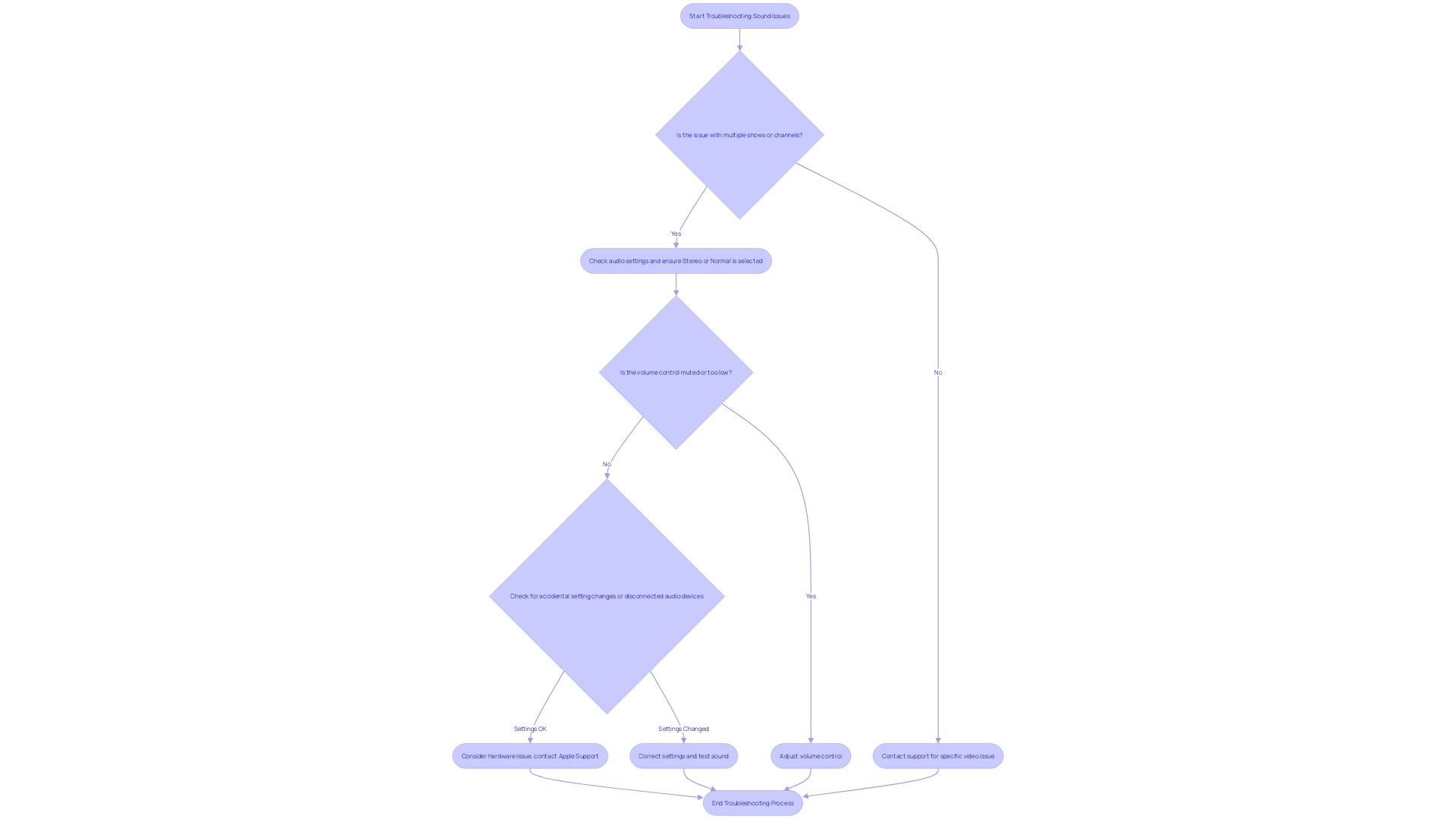
Conclusion
In conclusion, this article has provided practical solutions to various audio challenges that you may encounter on your computer. It has highlighted the importance of running the automated audio troubleshooter, which is a built-in tool in Windows that can efficiently identify and fix audio glitches. Additionally, the article has emphasized the significance of selecting the correct audio output device, checking for loose connections and hardware issues, updating audio drivers, and managing app permissions for audio access.
The article has also covered troubleshooting specific audio issues, such as distorted sound, silent speakers, and microphone problems, and has provided advanced troubleshooting techniques like investigating background services and disabling exclusive control settings. It has emphasized the importance of preventive measures and best practices, such as keeping audio drivers updated, handling audio device connections carefully, and setting system restore points.
Furthermore, the article has highlighted common mistakes to avoid in audio troubleshooting, such as bypassing fundamental checks and underestimating the power of regular Windows updates. It has also emphasized the value of utilizing additional resources for troubleshooting, including online forums, manufacturer support websites, professional audio technicians, and online tutorials.
By following the practical solutions and recommendations provided in this article, you can optimize your audio experience and enjoy seamless sound on your computer. Remember to stay proactive, keep your system updated, and explore the additional resources available to you for effective troubleshooting.
Introduction
Industrial automation, driven by the integration of robotics, has revolutionized efficiency and productivity across various sectors. From precision and speed to flexibility and precision, robots have become indispensable in industries like manufacturing, healthcare, and logistics. The advancements in robotics are continuously evolving, with the integration of digital twins and gantry robots exemplifying operational efficiency.
AI technologies, such as Large Language Models (LLMs) and virtual environments, enable robots to understand and execute tasks autonomously. The demand for industrial automation engineers has surged as industries seek to integrate robots with robust cybersecurity measures. The integration of robotics in industrial automation is about creating a safer, more efficient production environment backed by data, AI, and innovative engineering solutions.
This article explores the impact of robotics in various sectors, emerging trends in automation, and the importance of navigation, safety, and cybersecurity considerations. It also highlights the potential of robotics in healthcare, transportation, and logistics, as well as the benefits of virtual solutions and open automation standards. Overall, automation is reshaping industries and offering practical solutions to real-world challenges.
Impact of Robotics on Industrial Automation
Industrial automation, propelled by the incorporation of automated machines, has resulted in a revolutionary advancement in efficiency and productivity in different industries. Consider the accuracy and efficiency of automated machines that enables them to flawlessly carry out repetitive tasks, which has made them indispensable in myriad industries. For instance, St. James Winery, Missouri’s largest and most awarded winery, has seen the fruits of embracing automation over their 50-year history. Similarly, Last Arrow Manufacturing has leveraged over a decade of metal fabrication experience, incorporating cutting-edge automated technologies to ensure precision and quality in their services.
The advancements in robotics are continuously evolving, with the integration of digital counterparts and gantry robots exemplifying the cutting-edge of operational efficiency. Digital twins enable real-time monitoring and predictive maintenance, which are essential for optimizing robotic operations in a cost-effective manner. The versatility and accuracy provided by articulated machines showcase another important development, underscoring the influence of the Industrial Internet of Things (IIoT).
Furthermore, the progress of AI technologies for automated labor, like the breakthroughs by the Korea Institute of Machinery and Materials (KIMM), demonstrates the capacity for machines to comprehend and carry out tasks through Large Language Models (LLM) and virtual environments. This technology enables the automatic creation and implementation of task sequences, which can be managed through voice or text, representing a noteworthy advancement towards smarter and flexible automation.
The demand for industrial automation engineers has surged as sectors seek to integrate robots, distributed control systems (DCSS), programmable logic controllers (PLCs), and Supervisory Control and Data Acquisition (SCADA) systems with robust cybersecurity measures. Manufacturing leads this charge, with over 30% of the market demand, followed by oil and gas, and power generation sectors. The push for automation is further fueled by the need to mitigate supply chain disruptions as seen in the geopolitical tensions affecting global markets.
Statistics show that leading factories are generating massive amounts of data, with the potential to double all human information in less than a month if all factories worldwide operated at this level. As Kevin Reader points out, the automation industry is expected to grow significantly, with the largest market in the Asia Pacific and the fastest-growing in North America. Brian Pulfer also observes the growing number of robot deployments and the ongoing research and development resulting in new robot solutions for different operational aspects.
In essence, the incorporation of automated machines in industrial automation is not just about replacing manual labor in hazardous environments or optimizing workflows. It’s about creating a safer, more efficient production environment that can adapt to the ever-changing industrial landscape, backed by data, AI, and innovative engineering solutions.
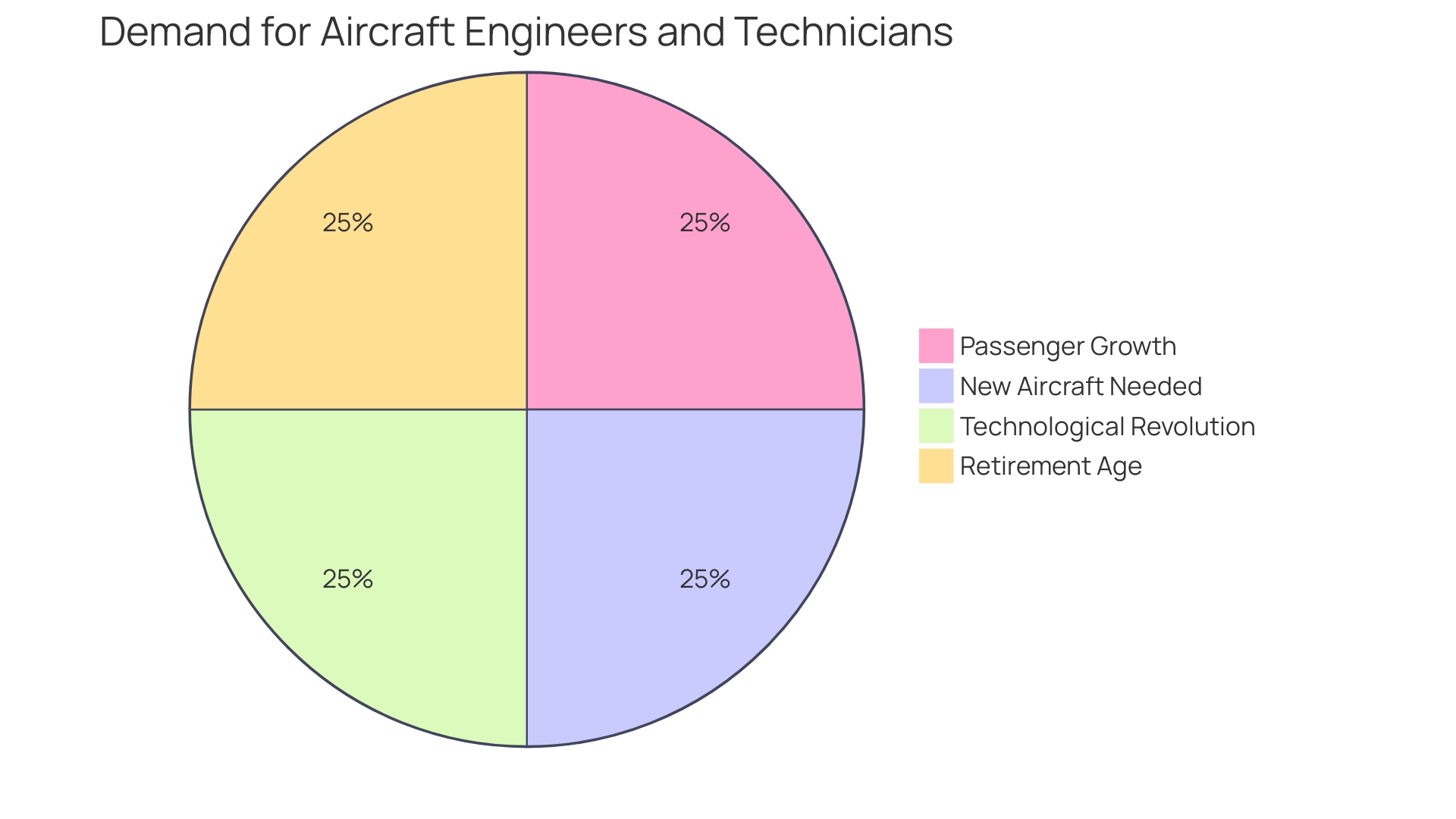
Advancements in Autonomous Robotics
The realm of autonomous robotics is revolutionizing the way we approach automation, with its sophisticated blend of sensors, cameras, and artificial intelligence. These advanced machines are capable of navigating intricate settings autonomously, processing real-time data to make decisions, and adjusting their actions to suit evolving situations. This technological leap is paving the way for significant improvements in sectors such as manufacturing, logistics, and healthcare, enabling robots to undertake tasks that were previously the domain of humans with enhanced autonomy and precision.
GrayMatter Robotics exemplifies this innovation, focusing on enhancing human productivity and elevating life quality through the integration of their proprietary AI with advanced automation technology. Their revolutionary solutions in manufacturing are a testament to the potential of autonomous technology. Moreover, the creation of digital twins for gantry machines demonstrates the fusion of virtual modeling with physical systems, allowing comprehensive monitoring, simulation, and performance analysis in a virtual space. Such advancements facilitate superior planning, predictive maintenance, and refinement of robotic operations, thus streamlining manufacturing processes.
Autonomous machines are not just about technology; it’s about the synergy between machine precision and operational efficiency. As articulated robots bring a new level of dexterity and exactitude to industrial applications, the rise of the Industrial Internet of Things (IIoT) further enhances their capabilities. When designing robotic arms, considerations of weight, size, and motion range are crucial, with electric motors emerging as the preferred actuator due to their precision and user-friendliness.
Based on insights from the field, self-governing automated systems are becoming essential in intricate warehouse settings, transforming the sector with their implementation. According to warehouse experts, the difficulties encountered on a daily basis emphasize the significance of dependable collaborations between producers, suppliers, and the field of automation. With advancing camera technology and computer vision, bolstered by the mass production of cameras for smartphones, autonomous machines are gaining unprecedented abilities to perceive their surroundings.
Data highlights the increasing prevalence of service automation across different sectors. With sectors such as agriculture, logistics, and medical service expanding, the demand for automatons that can assist humans and perform programmed tasks independently is increasing. This growing sector is a sign of the wider acceptance of robotics in service sectors, demonstrating the important role robotics plays in shaping the future of service-oriented tasks.
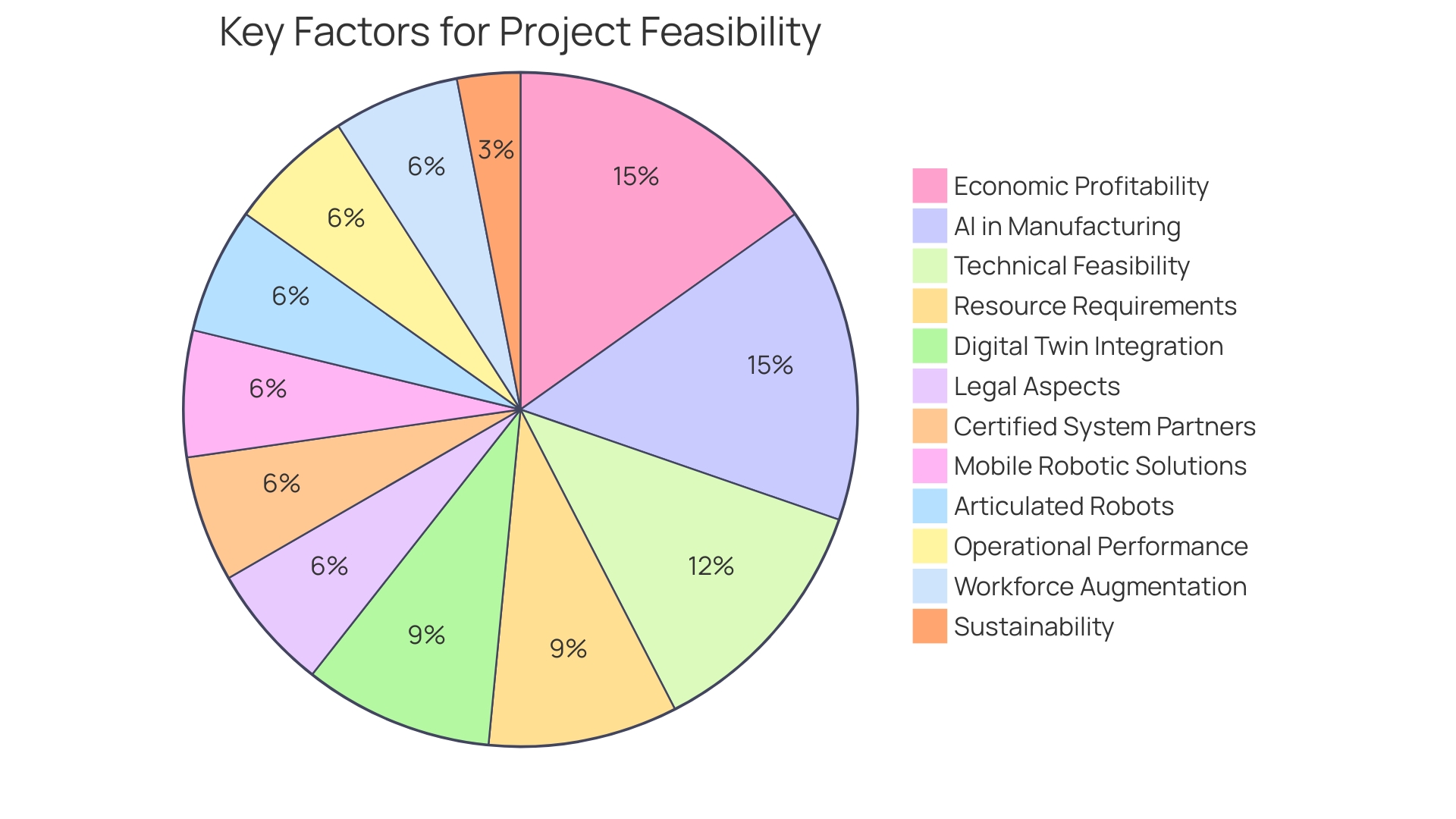
Mobile Robots and Autonomous Mobile Robots (AMRs)
Autonomous Mobile Robots (AMRs) have become pivotal in modern warehousing, logistics, and healthcare, streamlining operations and enhancing efficiency. These intelligent machines navigate through complex environments, autonomously making decisions to transport merchandise and supplies. Their ability to work alongside humans helps manage intricate tasks that once depended heavily on manual labor. With real-time monitoring and predictive maintenance facilitated by digital twins, AMRs optimize robotic operations and enable cost-effective manufacturing processes. Reflecting on the insights from warehouse professionals, the integration of AMRs addresses day-to-day challenges and is crucial for future industry developments. As the Industrial Internet of Things (IIoT) expands, articulated automatons with their multi-directional movement capabilities bring flexibility and precision to various applications. Manufacturers and suppliers, therefore, are encouraged to embrace these technologies to become indispensable partners in this rapidly evolving sector.
Warehouse Robots and Automated Guided Vehicles (AGVs)
The landscape of logistics and supply chain management is undergoing a dramatic transformation, thanks to the strategic integration of warehouse robots and automated guided vehicles (AGVs). Take, for example, Europris, Norway’s discount retail giant, which embarked on an ambitious automation venture culminating in the consolidation of six warehouses into one state-of-the-art, automated logistics hub. This move not only streamlined their operations but also showcased the immense potential of automation in enhancing warehouse efficiency.
Robots are gaining traction within warehouse operations due to their precision in navigating tight aisles, accurately handling inventory, and seamlessly working alongside human employees. AGVs contribute significantly by facilitating the internal transport of materials, thereby optimizing workflow. The deployment of these technologies has been a game-changer, leading to substantial gains such as heightened productivity, cost savings on labor, and marked improvements in inventory management.
Industry reports highlight the crucial role of automation in warehouse success, revealing that professionals within the sector are using these tools to address daily operational challenges. These insights highlight the current applications of such technologies, the hurdles faced, and the prospects for future integration. Notably, the global market for mobile robotics is flourishing—valued at approximately 20.3 billion US dollars—indicating a surge in adoption across diverse industries, from e-commerce to healthcare.
To fully utilize the advantages of warehouse automation, it is essential to guarantee that infrastructural elements such as flooring meet specific standards of flatness and regularity to support the efficient operation of automated machines. Experts from Face Consultants advise on employing the latest digital floor flatness testing technology and emphasize the importance of a collaborative approach among all stakeholders to meet these stringent requirements.
In general, the advancement of warehouse automation is not only about the machines; it’s about establishing a balanced environment where machines and humans collaborate effectively, and operational excellence is accomplished through strategic innovation and partnership.
The Role of Artificial Intelligence and Machine Learning in Robotics
The fusion of artificial intelligence (AI) and robotics is revolutionizing various sectors, from lunar exploration to classroom assistance. AI equips machines with the ability to process environmental data, enhancing their decision-making and learning from experiences. For instance, consider the potential of autonomous rovers utilizing AI to measure water ice at the moon’s South Pole, essential for future lunar habitats. These rovers could iteratively map ice distribution, providing invaluable data for space exploration.
In educational settings, AI-powered automatons like AV1 are offering support to students unable to attend school due to illness. These robots, initially piloted and adopted in Sweden, ensure that children maintain a connection to their classrooms, offering a sense of security even when they are not actively used.
The medical field also benefits from AI and automated technology. Robotic assistance in surgeries, rehabilitation exoskeletons, and AI in diagnostics exemplify their impact. As these technologies progress, their combined potential in regenerative medicine and health outcomes is substantial.
The AI field is growing rapidly, with major players like Amazon Web Services, Google Cloud Platform, and Microsoft Azure fueling growth. Ai’s business applications are diverse, with early-stage adoption for goods production and service delivery, demonstrating the technology’s transformative nature.
In general, the incorporation of AI into automated technology is resulting in more intelligent, highly capable devices that are having a notable impact in various fields. This synergy is not only propelling technological advancements but also providing practical solutions to real-world challenges.
Integration of AI and ML in Robotic Systems
Artificial Intelligence (AI) and Machine Learning (ML) have become the cornerstone of contemporary robotics, transforming the capabilities of these machines beyond simple automated tasks. As industries confront a variety of challenges, like technological transformations, ecological issues, and globalization, the significance of AI-infused automatons becomes crucial in adjusting to these modifications. These intelligent machines are now capable of analyzing extensive datasets to identify patterns and make predictive judgments, enhancing their precision and effectiveness in executing complex tasks.
Their flexibility is shown by humanoid machines supervising automated manufacturing lines, illustrating the significant influence of AI on automation. Such automated machines, equipped with AI, surpass their conventional functions by acquiring knowledge from experiences and independently making choices, which enhances their usefulness across different sectors. In manufacturing, for instance, ML-driven automated systems are not just performing quality control but are also optimizing production processes and predicting maintenance needs, thereby addressing personnel shortages and aiding in domestic manufacturing’s competitiveness.
AI’s rapid advancement propels the necessity for automation, as evidenced by Amazon’s robotic systems that gather millions of data points to train for complex tasks like sorting inventory or collaborating alongside human workers. These advancements are not only about efficiency but also about reducing the computational demands through smarter algorithms that teach robots to prioritize relevant information, mirroring human perception.
With the Artificial Intelligence market set to increase from a worth of US$305.90 billion in 2024 to US$738.80 billion by 2030, the incorporation of AI and ML in automation is evidence of the advancement of technology. This growth signifies the imperative for businesses to stay abreast of AI trends and leverage these insights for strategic advantage, ensuring resilience and compliance with environmental standards while remaining economically viable in a competitive landscape.
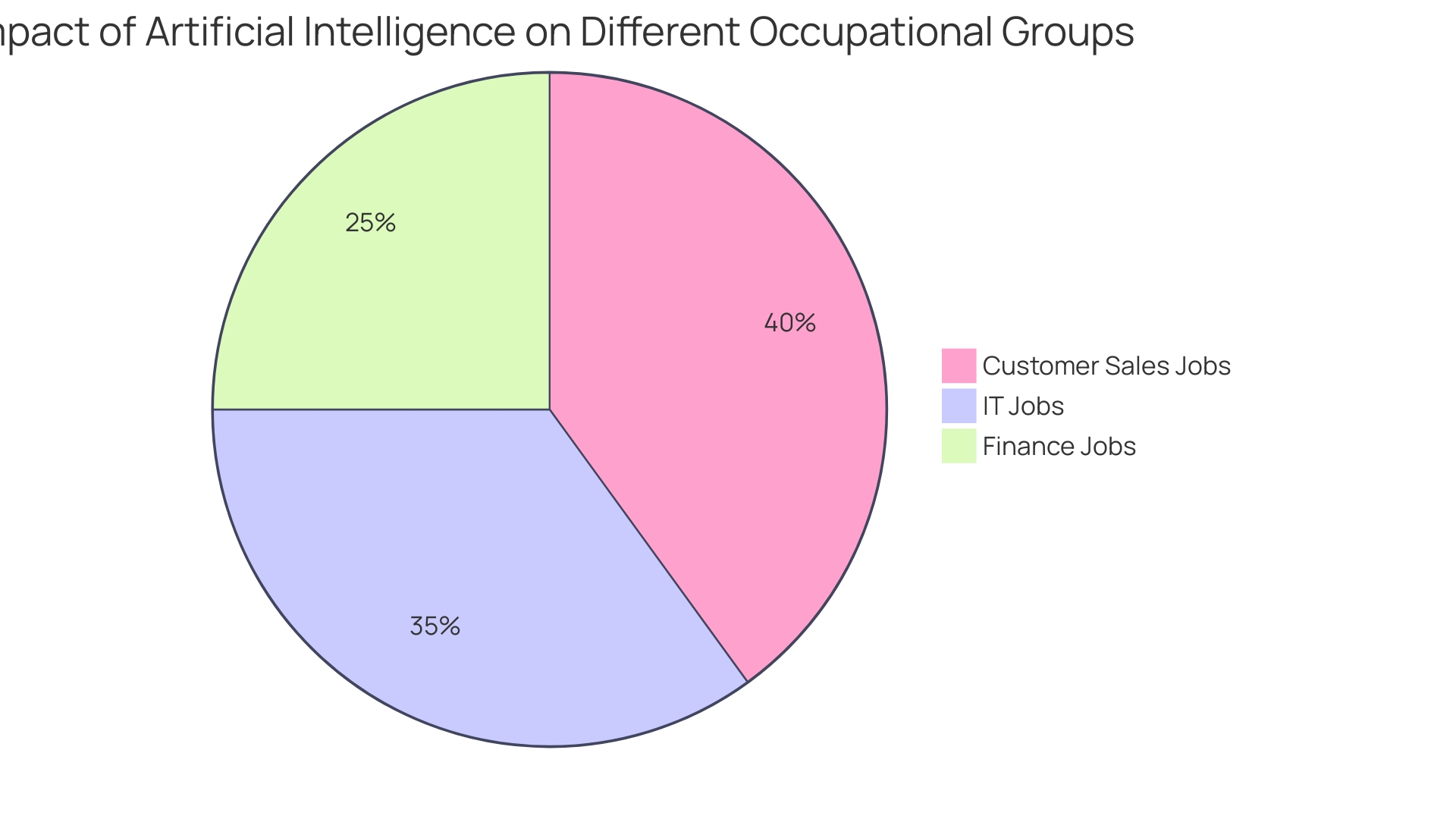
Enhanced Perception, Problem-Solving, and Decision-Making
Automated robotics are revolutionizing the way we approach complex tasks through their remarkable perception and cognitive abilities. These machines, designed with sophisticated sensors and cameras, now integrate AI algorithms that enable them to interpret their environment with extraordinary detail. For example, RoboTool, a robot built on the latest LLMs like GPT-4, demonstrates this innovation with its Analyzer, Planner, Calculator, and Coder components. Each plays a pivotal role, from understanding natural language inputs to executing complex tasks with precision.
Robots like ANYmal go a step further, utilizing machine learning to self-educate through trial and error, akin to a child’s learning process. ANYmal’s journey from mastering rugged hikes to performing parkour showcases its ability to adapt and evolve, thanks to a blend of visual perception systems and model-based control.
In the realm of robotics, tool use has become a benchmark for creativity and problem-solving. Robots are now capable of selecting, using sequentially, and even manufacturing tools to accomplish tasks that require an understanding of object attributes and long-horizon planning.
The emergence of advanced computer vision technology and deep learning is equipping independent machines with the tools to better ‘see’ and interpret their surroundings. Currently, cameras serve as the primary sensory organ due to their cost-effectiveness, a direct result of mass production for smartphones. Looking ahead, a diverse array of sensors like Lidar and Radar may augment these capabilities, allowing machines to perceive the world in ways humans cannot.
Recent news from the Technical University of Munich and Munich Institute of Robotics and Machine Intelligence exemplifies this by adding automated machines that provide feedback for enhanced proprioception, empowering machines with a greater awareness of their body state and the ability to learn movement without pre-existing data, through ‘motor babbling.’
These advancements align with Isaac Asimov’s foresighted Three Laws of Robotics, ensuring that machines operate within ethical boundaries as they become more autonomous. As we integrate these technologies into sectors like agriculture, they promise not just improved productivity but also sustainable stewardship of our lands.
Indeed, the domain of robotic technology is undergoing a rebirth, with robots gaining ‘brains’ comparable to sophisticated AI systems. As one industry expert put it, this isn’t just a welcome prediction from science fiction; it’s a tangible, exciting reality. The collaboration of robotics with AI is ushering in a new era of machines that are not just tools but actors in their own right, shaping our world and the future.
The Rise of Collaborative Robots (Cobots)
Entering the world of contemporary manufacturing, collaborative automatons, more affectionately known as cobots, are redefining the harmony between humans and machines. These advanced machines are not confined behind cages; instead, they work shoulder-to-shoulder with human colleagues, combining the strengths of human dexterity with mechanical precision. Cobots are imbued with sophisticated sensors and safety mechanisms, enabling them to interact with people without the risk of injury, a key factor in their rapidly growing popularity across various industries.
Cobots shine in tasks like assembly, packaging, and quality control, where their ability to learn and adapt on the fly is invaluable. Their programming simplicity allows for quick repurposing, offering unparalleled flexibility to respond to changing production demands. This adaptability is particularly beneficial for companies like Last Arrow Manufacturing, a decade-long leader in metal fabrication, where cobots could enhance the precision and efficiency upheld by their skilled craftsmen.
The transformative impact of cobots is evident as they offer a dual advantage: tirelessly handling repetitive tasks while also enabling customization in production. For example, ABB’s cooperative machines demonstrate how automation can assist in the production of small, highly customized product batches. They facilitate a harmonious blend of human ingenuity and robotic endurance, optimizing assembly lines for a diverse product mix.
A glimpse into the future of collaborative automation is provided by the Korea Institute of Machinery and Materials (KIMM), where breakthrough AI technology allows robots to interpret user commands and autonomously execute complex tasks. This innovation is poised to revolutionize manufacturing processes, making robot integration more intuitive and versatile.
The market is taking note, with the industrial automation sector projected to surge beyond 45 billion USD by 2028. Advances in AI, machine learning, and the integration with the Industrial Internet of Things (IIoT) are driving this growth, offering enhanced data analysis, predictive maintenance, and real-time decision-making capabilities. As a result, manufacturers are increasingly viewing robots not just as tools, but as collaborative partners that promise a more efficient, sustainable, and responsive production environment.
Working Alongside Humans
As industries evolve, the integration of robotics into the workforce has become a game-changer, not as a replacement for human labor, but as a complement to it. Robots are now designed to work alongside human workers, enhancing their abilities and taking on repetitive and physically demanding tasks. This collaboration allows human workers to concentrate on more strategic and complex responsibilities, thereby creating a more efficient, high-quality, and safe working environment.
For example, consider the inspection of tanks in industrial settings, traditionally a process that required draining the tank and sending personnel inside. By using underwater machines, companies can reduce downtime and safety risks, while at the same time enhancing the quality of data gathered for decision-making. This not only streamlines operations but also significantly enhances worker safety and productivity.
Moreover, small and medium-sized enterprises, particularly in Europe, are grappling with a shortage of skilled workers. The implementation of automated systems into the workflow addresses this gap, enhancing productivity and enabling human employees to concentrate on areas where their expertise is indispensable. This symbiosis between human intelligence and robotic efficiency is critical for businesses to maintain growth and employee satisfaction.
The newest iteration of automatons, furnished with AI and cutting-edge vision systems, are capable of independent actions and can adjust to different situations. This technological leap is transforming industries like automotive manufacturing, where human-robot collaboration (HRC) is becoming increasingly prevalent.
In the realm of e-commerce, advancements like Amazon Robotics’ utilization of bipedal automatons—able to navigate steps and uneven surfaces—showcase the potential of automatons to collaborate with humans, managing assignments that necessitate mobility and dexterity.
Human and automated collaboration has profound implications for operational efficiency and the future of work. It exemplifies an ‘operating system’ within organizations that fosters continuous improvement and adapts to changing conditions. As human-like machines become more affordable and user-friendly, they stand to fill automation gaps and reshape the labor economy, offering a compelling solution to labor constraints in various sectors. The global economy currently employs roughly 1,000 people for every robot, emphasizing the potential for growth and the limited impact on human labor to date.
Applications in Manufacturing, Healthcare, and Logistics
As sectors continue to evolve, automated robotics plays a pivotal role in enhancing productivity and innovation across various sectors. For instance, GrayMatter Robotics is revolutionizing manufacturing through AI-driven robotic solutions, focusing on finishing products with unparalleled quality. This commitment to excellence is mirrored in the boat-building industry, where Smoker Craft has remained at the forefront of innovation since 1903, leveraging advanced automation to maintain its competitive edge.
In the realm of manufacturing, AI’s integration is profoundly transforming production efficiency. This is demonstrated by the AI technology for automated work developed by the Korea Institute of Machinery and Materials (KIMM), which enables machines to grasp user commands and carry out tasks with increased adaptability in manufacturing environments. Such advancements in AI robotics are not confined to manufacturing alone; they are also making significant strides in healthcare and logistics.
Healthcare automatons aid in surgeries and patient care, offering greater precision and safety. Meanwhile, logistics robots are revolutionizing warehouse management by enhancing speed and accuracy in inventory and goods transportation. These innovations are crucial for addressing the challenges warehouse professionals encounter, as described in industry reports that discuss the advancement of automated systems and strategies for OEMs and suppliers to succeed in this dynamic market.
Industry experts like Kevin Reader and Brian Pulfer forecast strong expansion in the sector of automated technology, with notable advancements in the North American and Asian Pacific markets. Such growth is fueled by the diverse applications of robotics, from manufacturing and healthcare to mundane chores and business operations, highlighting the universal benefits of embracing robotics and AI.
Reflecting on the technological leaps from the steam engine to AI, it’s clear that we are amid the next industrial revolution, Industry 4.0. This era is defined by intelligent automation systems categorized into AI-augmented, autonomous, autonomic, and cognitive systems, each representing varying levels of AI sophistication that continuously push the boundaries of innovation.
Industrial Internet of Things (IIoT) and Big Data Analysis
The merging of the Industrial Internet of Things (IIoT) with big data analytics is propelling the automation sector to new heights of operational efficiency and productivity. IIoT creates a fabric of connected devices and sensors throughout industrial environments, enabling a seamless flow of data that can be turned into actionable insights. The analysis of big data, drawn from the vast streams of information provided by IIoT, allows organizations to refine their operational processes, anticipate maintenance requirements, and formulate decisions rooted in data.
In the context of Industry 4.0, the convergence of IIoT and big data is particularly transformative. Manufacturers are adopting modern technological stacks and support technologies that enable the integration of disparate data sources. This leads to improvements in overall equipment effectiveness (OEE), cost reductions, and enhancements in key performance indicators (KPIs) relevant to their production environments. With a spotlight on efficiency and cost savings, the technology architecture for Industry 4.0 often involves a significant on-premises component, including programmable logic controllers (PLCs), fixed connectivity, and hardware upgrades.
A study by AWS and Frost & Sullivan highlights a stark reality: a mere fraction, less than 5%, of plant data is utilized for actionable insights. This gap signifies a substantial need for solutions that not only aggregate data but also translate it into practical intelligence. For instance, Schneider Electric’s EcoStruxure Plant Lean Management software is a step forward in this direction, offering a hardware-agnostic platform with real-time data tools for the shop floor personnel.
Learning from peers through case studies of digital transformation initiatives can offer valuable insights into best practices and common challenges. A review of 22 industrial case studies reveals diverse experiences with IIoT and Industry 4.0 projects. These range from digital transformation and data architecture to predictive maintenance and artificial intelligence, providing a rich source of learning and inspiration for companies on similar journeys.
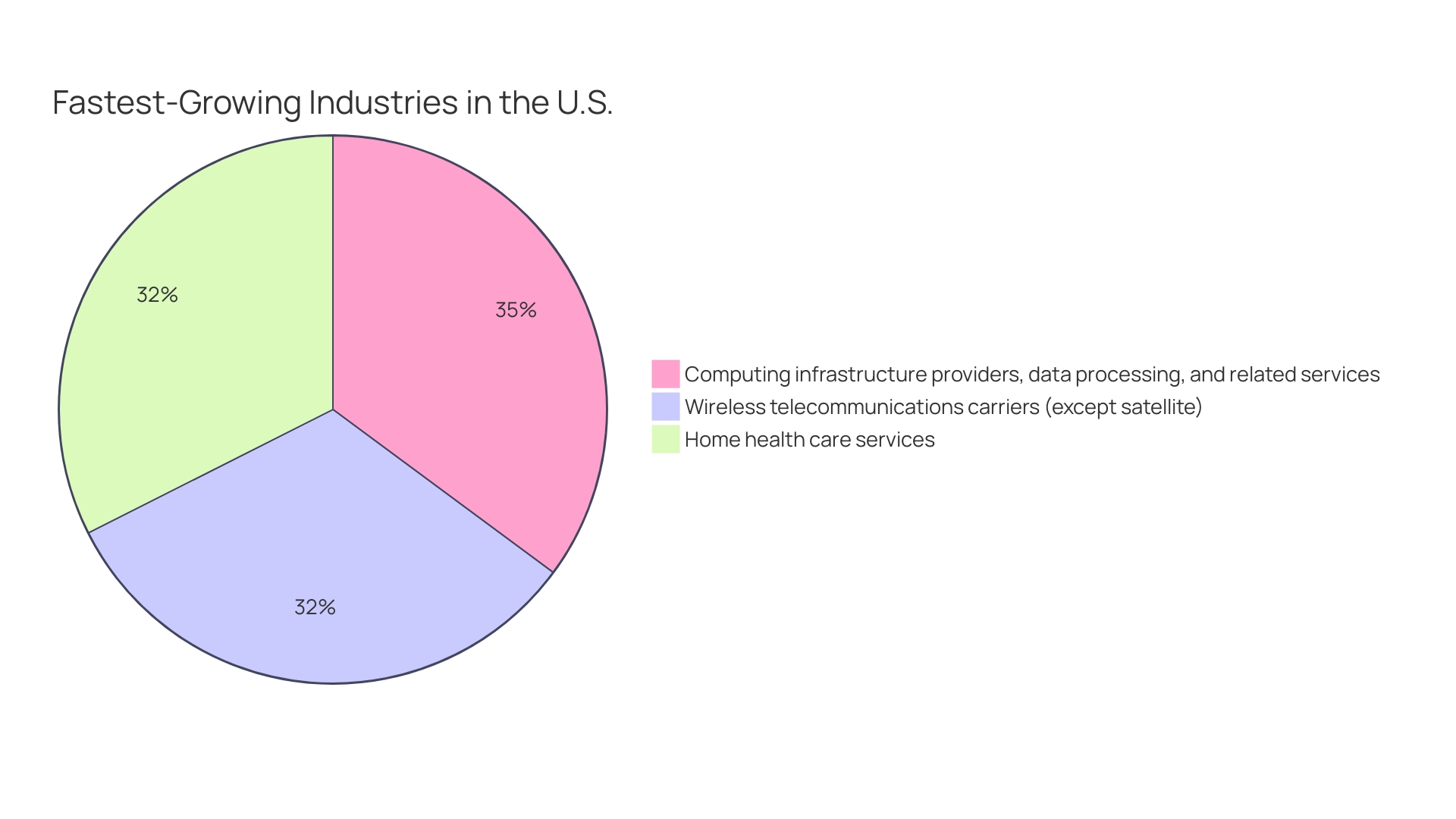
Smart Sensors and Data Collection
In the domain of factory automation, the emergence of advanced sensor technology has revolutionized the way manufacturers operate, providing them with a wealth of data to inform decision-making and refine production processes. These smart devices have become the linchpin of modern manufacturing, measuring everything from temperature and pressure to humidity and motion, offering real-time insights that are indispensable for maintaining quality and efficiency.
As highlighted in the case of Optimotion, an OEM that ventured into IoT solutions, the application of smart sensors can lead to groundbreaking advancements in various industries. Optimotion’s automated process, developed to tackle the challenges faced by a water treatment chemical supplier, exemplifies how sensors can aid in compliance with regulations while optimizing operations. The system’s ability to record and monitor chemical usage in real-time underscored the potential of automated solutions in enhancing operational precision.
Considering the wider consequences, as highlighted by experts in the field of automation, the combination of force-torque sensors and machine-learning algorithms can equip machines with a subtle perception of touch. This combination has enabled machines to interpret various types of pressure and tension, further expanding their capabilities and interactions within their environment. Such advancements highlight the transformative role of sensors in advancing robotics, echoing the crucial role of observability in scaling autonomous operations to profitable fleets.
Moreover, the sheer scale of automation’s impact, as described in the quote about converting raw materials into products at astonishing speeds, only emphasizes the need for sensors that can keep pace with high-volume, repetitive tasks. This, combined with the ongoing pursuit of enabling robots to perform a wide range of tasks in constantly changing environments, highlights the importance of developing more intelligent, versatile robotic technologies.
The application of sensors is not just a technical enhancement but a strategic necessity, as they underpin the shift towards data-driven manufacturing. From quality control to supply chain management, sensors are the unsung heroes propelling the manufacturing sector into a new era of efficiency and precision.
Analyzing and Acting on Collected Data
Utilizing the potential of automated robotic mechanisms, organizations can now access a plethora of data that results in actionable insights, driving operational advancements and strategic planning. Through meticulous analysis of this data, patterns, trends, and inefficiencies that were once obscure come to light. It’s a transformative step forward, similar to how automation has revolutionized industries by transforming 10 tons of potatoes into chips within minutes or assembling smartphones by the billion annually. These insights equip organizations with the tools to make informed decisions, streamline their workflows, and introduce precise improvements where they matter most. The result is a tangible uplift in operational efficiency, a reduction in unnecessary expenditures, and an overall enhancement of performance metrics. Essentially, the information obtained from automated technology becomes the catalyst for ongoing improvement and a valuable resource in sustaining a competitive advantage in the dynamic industrial environment of today.
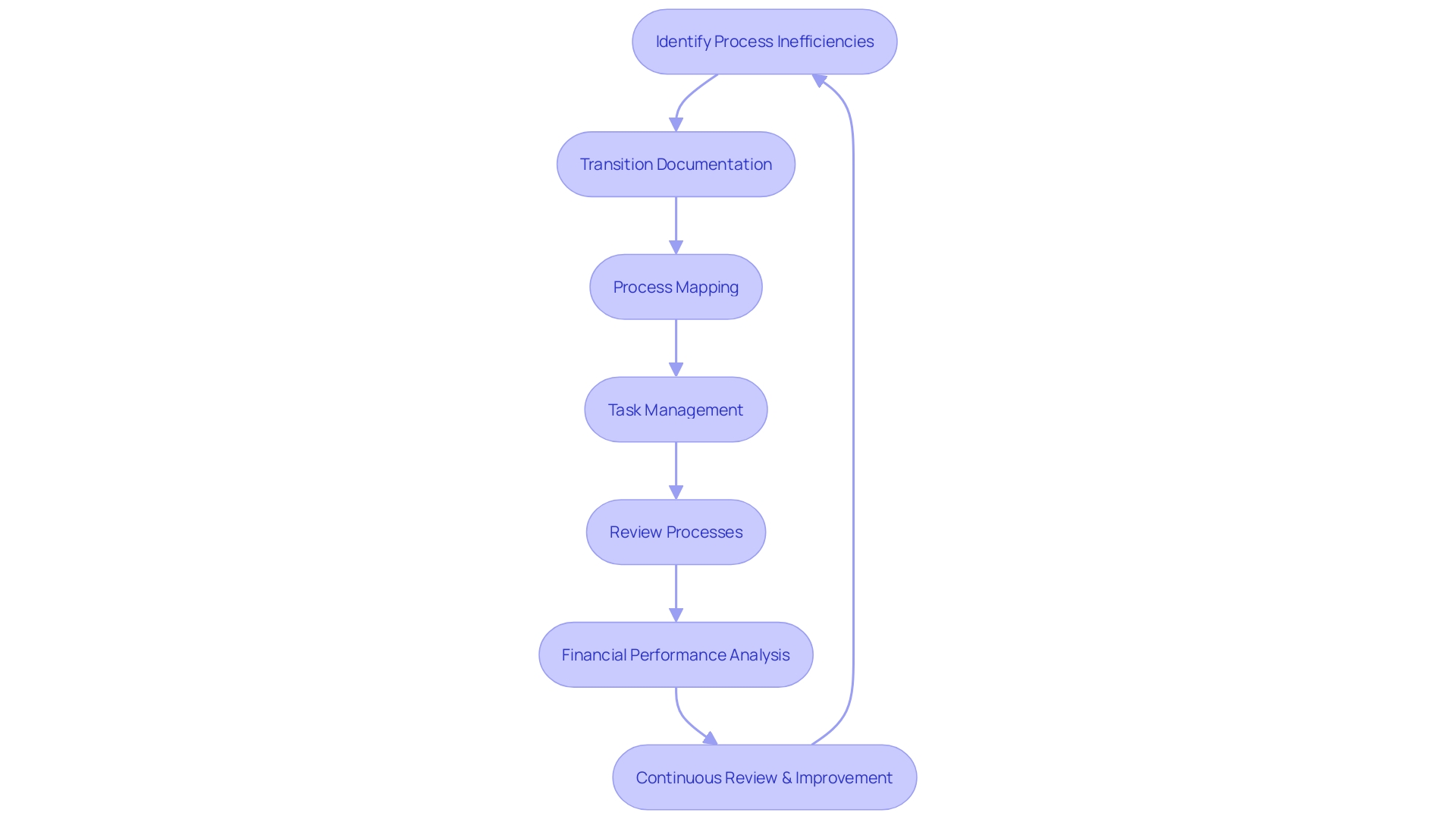
Industrial Cybersecurity and Open Automation Architectures
The integration of automated robotics into diverse sectors has made industrial cybersecurity and the adoption of open automation architectures increasingly vital. Industrial cybersecurity is dedicated to safeguarding automated mechanisms against cyber threats and preserving the integrity and confidentiality of data, a concept that echoes the sentiment of industry experts who assert that security should be embedded by design, not as an afterthought. The model-based decision-making approach to cybersecurity can be distilled into three strategic steps, ensuring that security considerations are integrated from the early stages of design. As industries advance with the emergence of Industry 4.0 and the upcoming Industry 5.0, the significance of safeguarding cyber-physical infrastructures, IoT, and AI becomes increasingly evident. This is underscored by the recent ENISA report, which highlights a surge in cyberattacks, and incidents like the ransomware attack on Trodat, demonstrating the tangible risks of inadequate cybersecurity measures.
In the meantime, accessible automation structures advocate for compatibility and standardization, crucial for smooth integration and cooperation of robotic mechanisms. This approach is bolstered by the NIS2 Directive, which introduces stringent security requirements across expanded sectors, signaling a shift towards more inclusive and enforceable cybersecurity standards. The recent World Robot Conference in Beijing, which showcased advanced humanoid robots, embodies the progress and potential of automation, further reinforcing the need for robust cybersecurity frameworks to protect the technologies shaping our future. As we stand on the verge of a new era where the rivalry in automated technology could resemble the space race, the safety of these mechanisms is not only desirable but crucial for secure and effective functioning.
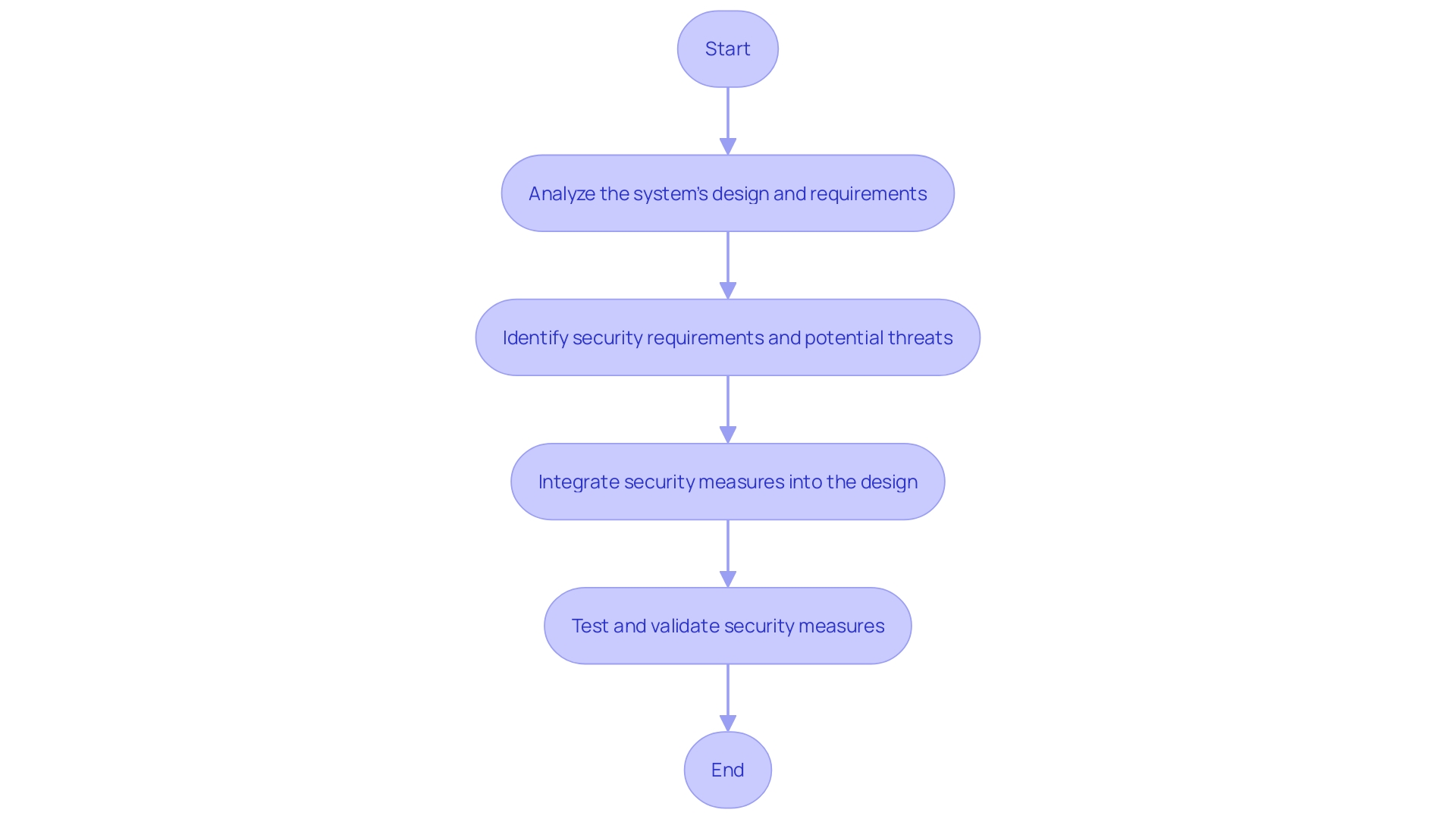
Addressing Cybersecurity Risks
As the integration of AI and automation deepens in various industries, cybersecurity emerges as a pivotal concern, especially with the proliferation of automated robotics. These advanced machines, much like any sophisticated digital setup, can harbor vulnerabilities that may expose organizations to unauthorized access, operational disruptions, or data theft. It is crucial to understand that identifying these vulnerabilities is not an indication of inferior technology; rather, the focus must be on the response and remediation efforts by the vendors. Proactive measures such as network segmentation, encryption, and strict access controls become indispensable in safeguarding these intelligent devices. Moreover, the implementation of regular security audits and the promotion of cybersecurity awareness among employees are instrumental in fortifying the defense against cyber threats. Notably, in the realm of smart devices, even something as seemingly innocuous as a toy robot can represent a potential security risk if not properly managed. With the capacity to navigate and interact within its environment, a compromised device could result in unintended privacy breaches or become a conduit for deeper network infiltration. The rise of Human-Robot Interaction (HRI) trends further emphasizes the significance of dealing with privacy, integrity, safety, and trustworthiness in these mechanisms. In light of the recent NIS2 Directive, which mandates higher security standards and a more comprehensive coverage of ‘essential’ sectors, organizations are urged to reassess and enhance their cybersecurity postures. This directive is a testament to the evolving landscape of cybersecurity regulation and the imperative for continuous improvement in protecting critical infrastructures. In summary, protecting AI and robotic technology is not just about implementing security measures but involves a wider comprehension of ethical data utilization, legal responsibility, and staying updated on emerging trends and directives. By adopting a thorough and watchful strategy, the integrity and security of these automated processes can be preserved, thus safeguarding the operational foundation of contemporary enterprises.
Implementing Open Automation Standards
The importance of open automation standards goes beyond mere compatibility; they are the linchpins of interoperability among diverse robotic mechanisms. These standards establish unified interfaces, protocols, and communication methods, ensuring different robotics can integrate and operate harmoniously. The adoption of such open standards liberates organizations from the confines of vendor lock-in, curtails integration expenses, and nurtures a fertile ground for innovation. Open automation structures support the ethos of collaboration, paving the way for the development of modular, scalable robotic solutions that can adjust to changing operational requirements.
Consider the transformative approach of Bosch, which has embraced connected living by migrating its pivotal production planning platform to Red Hat OpenShift on Red Hat OpenStack. This strategic move guarantees resilience across its nearly 100 plants, ensuring uninterrupted production lines and timely software updates. Bosch’s dedication to open automation standards showcases the proactive measures taken by industry leaders to ensure their processes are not only sturdy but also future-proof.
Additionally, the implementation of open-source tools like Grafana in robotic setups showcases the practical utilization of these standards. Grafana, a framework for aggregating and visualizing system statistics, enhances the observability of robotic performance, enabling a comprehensive overview and analysis of metrics such as CPU and RAM usage. This level of transparency and control is critical for organizations aiming to optimize their robotic deployments across various customer sites.
The progress of the field of intelligent automation is still gaining momentum, with open source initiatives receiving substantial investments and attention, as demonstrated by the Intrinsic acquisition of OSRC. However, challenges remain in maintaining the openness of such platforms, ensuring the community benefits from continued innovation and advancement.
In the realm of industrial automation, where safety is paramount, open automation standards lay the foundation for the functional safety of machinery and automated systems. By embedding these standards into the design and implementation process, developers can effectively mitigate risks and safeguard operators and the public from potential hazards.
Ultimately, open automation standards are not just about technology interoperability; they represent a paradigm shift towards a more collaborative, innovative, and safe industrial future. As the industry progresses, these standards will continue to influence the structure of how robotic technology is developed, incorporated, and controlled, guaranteeing they fulfill the requirements of the future’s automated world.
Virtual Solutions and Digital Twins in Robotics
The advent of virtual solutions and digital twins is revolutionizing the field of robotics, providing a futuristic approach to design, simulation, and optimization. Virtual solutions include the development of virtual representations for proof of concept and offline programming. Such applications allow for the thorough simulation and optimization of robotic processes prior to actual deployment. This strategic approach not only minimizes risks and reduces costs but also significantly accelerates the deployment phase.
Digital twins, on the other hand, serve as a virtual counterpart to physical assets, offering the advantage of real-time monitoring, analysis, and optimization. They play an instrumental role in identifying inefficiencies, foreseeing maintenance requirements, and enhancing overall performance. A digital twin is a living, virtual replica that reflects changes in the physics of a dynamic object and its environment in digital form and in real time, making it a powerful asset in process emulation and optimization.
Take, for instance, the case of Dubai’s Robotics Lab utilizing RoboDK to craft their cutting-edge system. A digital twin, in this scenario, may not necessarily be a hyper realistic simulation, but it encompasses the kinematic and physical properties of the robot as well as crucial components such as sensors and end effectors, essential for the task at hand. The digital twin technology’s potential is vast, with applications ranging from optimizing production processes in manufacturing to identifying bottlenecks and predicting maintenance without hampering productivity.
In the context of Industry 4.0, which signifies the fourth industrial revolution marked by the digital transformation of industrial sectors, digital twins are becoming a linchpin. They bridge the gap between the virtual and physical realms, enabling businesses to harness IoT sensors and data analytics for generating informed representations of an asset’s characteristics. Furthermore, the dynamic nature of digital twins, fueled by real-time data from IoT sensors, ensures that the model remains accurate and reflective of the physical entity’s state, even as it undergoes changes.
A robust example of the application of digital twins can be seen with Dassault Systèmes’ sophisticated digital representation of a physical production environment known as RVT. This interactive simulation technology mirrors the real-world manufacturing setup with high fidelity, starting with an exhaustive mapping of the physical production space. The resulting digital twin is then enriched with real-time sensor data, historical performance metrics, and detailed component specifications, culminating in a dynamic virtual environment that can be manipulated and analyzed without disrupting actual production workflows.
As digital twins continue to gain traction, they are not just theoretical concepts but are becoming integral to the strategic planning and operational excellence within various industries. Their capability to provide a dynamic workspace for continuous enhancement epitomizes the merger of the digital and physical domains, heralding a new era in manufacturing processes.
Virtual Representation for Proof of Concept and Offline Programming
Utilizing virtual models and simulation techniques in robotics has transformed the way organizations approach the implementation of robotic solutions. By generating comprehensive digital models, organizations can replicate the complex actions of automated machines in various situations, which is essential for verifying the viability and enhancing the efficiency of these mechanisms. This approach is not only efficient but also instrumental in avoiding costly errors and downtime in live environments.
Take, for example, the Robotic Exploration (RoboEXP) system. It utilizes the Large Multimodal Model (LMM) and an explicit memory architecture, enabling machines to gather and utilize new information as they interact with their surroundings. This type of advanced simulation enables automated machines to navigate and adapt to dynamic, previously unseen environments effectively. Such capability is invaluable, especially when integrating robotics into complex tasks in household and office settings.
Simulation realism is another key element, encompassing physics, operational, and visual aspects. Physics realism ensures that the virtual model adheres to physical laws, affecting the machine’s real-world performance, while operational realism focuses on the machine’s kinetic and dynamic properties and its interactions within the environment. Meanwhile, visual realism enhances the graphical rendering of the simulation, which, although it may not directly impact operational effectiveness, is crucial for specific applications where visual feedback is essential.
However, it’s vital to find the right balance of realism in simulations. Overly detailed simulations can lead to increased computational demands and complex debugging processes. Therefore, it’s essential to identify the necessary level of simulation realism required based on the specific task and application area.
The integration of advanced programming techniques also plays a significant role. For example, ROScribe enables users to produce a thorough blueprint for software for automation, simplifying the process of development. This tool is particularly useful for both beginners learning ROS and advanced users needing to quickly establish a software framework for their projects.
In addition, progress in robotic chips, such as those observed in the shift from FPGAs to ASICs, are crucial for the advancement of more intelligent, more effective humanoid machines. News from The Robot Report highlights the significance of such technological progress, as seen in German robotics developer Agile Robots’ acquisition of Franka Emika GmbH, which promises to expand the capabilities and reach of automation technology.
In the realm of robotic learning, methods that generalize to new scenarios are of paramount importance. Leveraging large datasets and human video, which contain a wealth of diverse behaviors and interactions, can enhance generalization in robotic reinforcement learning (RL). Despite the challenges in using internet-scale video data without standard machine data annotations, innovative methods are being developed to incorporate these rich sources of information, as evidenced by superior performance in tasks like Preference Inference (VPI).
In summary, virtual representation and offline programming in the field of automation not only offer a safer, more controlled setting for testing and validation but also open doors for smarter, flexible, and effective automation solutions in diverse sectors. The utilization of state-of-the-art simulation, programming tools, and chip technology plays a vital role in the progress of automation, guaranteeing that automated systems can function at their best in real-life settings.
Digital Twins for Risk Aversion and Process Optimization
Adopting digital twins has transformed the way organizations handle their robotic technology. This transformative technology mirrors physical assets, creating a dynamic virtual model that evolves in lockstep with its real-world counterpart. In the field of robotics, digital twins go beyond mere simulations – they include the robot’s movement, tangible characteristics, and even the additional components essential to the robot’s functions, such as sensors and end effectors. By leveraging the potential of digital twins, companies can now monitor their robotic setups with unparalleled accuracy, forecast maintenance requirements, and optimize production processes without hindering ongoing operations.
The resilience of digital twins is apparent in cases like Dubai’s Robotics Lab, where RoboDK software enabled the creation of an innovative setup, and the cooperative endeavors at Karlsruhe Institute of Technology, where advanced federated learning methods enable robots to learn collectively without compromising sensitive corporate data. The digital twin concept, tracing back to Michael Grieves and popularized by NASA’s John Vickers, has evolved significantly with the rise of the Internet of Things, allowing for real-time data analysis and the fusion of the physical and digital worlds.
The potential of digital twin technology is vast, offering a spectrum of model and data-driven digitization strategies. This is particularly beneficial for SMEs and large corporations alike, contributing to the digitization maturity of the value-chain. However, challenges such as data silos and the integration of disparate data sources remain, necessitating a concerted effort to amalgamate and contextualize this information to unlock the full potential of digital twins. With these tools, organizations can not only enhance the efficiency and lifespan of their robotic systems but also drive business outcomes across the entire value chain.
Emerging Trends: Soft Robotics, Swarm Robotics, and Edge Computing
As automation technology advances, the incorporation of automated systems in various sectors becomes more sophisticated, with new trends emerging that redefine the landscape. Soft automation is one such trend, which avoids traditional rigid materials for more pliant, flexible ones. This change allows automated machines to interact more delicately with their surroundings, making them appropriate for tasks that necessitate a gentle touch and safe human-automated machine interactions. An instance of soft automation in motion is observed in the partnership between engineers and healthcare experts at Sunnaas Hospital, where a machine named EVE was tested for its capability to aid patients, demonstrating the practical uses of this technology in actual treatment situations.
Swarm automation is another innovative trend, inspired by the collective behavior of insect colonies. The concept involves a multitude of small, autonomous robots working in concert to execute tasks that are beyond the capability of individual units. This approach to automation opens new doors for efficiency and scalability in operations. Research in swarm technology has made significant progress, as shown by the Move Lab, which focuses on enhancing human performance through collaborative efforts encompassing multiple disciplines.
Edge computing is also gaining popularity in the area of automated machines. By processing data on-site or near the data source, edge computing significantly reduces latency, allowing for instantaneous decision-making. This is especially advantageous in time-sensitive scenarios, such as those in the medical service sector, where rapid response can be critical.
The potential of these trends is not only theoretical but also backed by market forecasts. Reports from Allied Market Research indicate that the Robot Operating Systems Market is expected to grow from $534.2 million in 2022 to a remarkable $1.8 billion by 2032, with a CAGR of 12.9%. This expansion is a sign of the growing dependence on automation across various sectors, from healthcare to automotive manufacturing, where the incorporation of semiconductors is becoming more widespread.
These emerging trends in automated machines, from the development of soft and swarm machines to the implementation of edge computing, are reshaping the way industries operate, offering innovative solutions to enhance efficiency and productivity.
Soft Robotics for Delicate Tasks
Soft technology, with its innovation and adaptability, is not just a technological marvel but a beacon of hope for enhancing human lives. Consider, for instance, the innovative research at the Move Lab, where a collective endeavor has resulted in the creation of flexible wearable automatons that aid individuals with Parkinson’s disease in overcoming gait freezing. This is achieved through a meticulous integration of engineering, rehabilitation science, and biomechanical expertise, culminating in a device that augments hip flexion and improves the quality of life for those affected by such debilitating conditions.
In the agricultural sector, the challenges are manifold, from unpredictable environments to the need for versatility in task management. Here, soft robotics promises to revolutionize the field with its ability to handle delicate tasks like harvesting without the need for built-in sensors, as demonstrated by researchers from the AMOLF Soft Robotic Matter Group. They have cleverly designed an external technique to measure interactions, improving the efficiency and adaptability of the automated system.
In industrial settings, soft automated machines are ready to assume roles that are hazardous to humans. They can handle toxic substances or work in dangerous environments with a level of safety and precision difficult to achieve with traditional inflexible machines. As suggested by the data from Toyota Research Institute, the attention is moving towards machines that supplement human abilities rather than substitute them, highlighting the significance of interactive and safe mechanical solutions in our everyday lives.
The psychological impact of soft robotics cannot be ignored either. A study by Washington State University provides evidence that flexible automatons reduce safety concerns and feelings of job insecurity among individuals, even when operating in close proximity. This psychological advantage is vital in fostering an environment where humans and robots can coexist harmoniously.
Moreover, embracing the adaptability of soft automation is a strategic move towards future-proofing businesses. Automation, particularly with the integration of AI, is essential in preparing for the inevitable shifts in technology and market demands. The soft automation market is expanding, with significant adoption across various industries, including healthcare, logistics, and agriculture, reflecting a growing recognition of its transformative potential.
In essence, soft technology is not just a technological trend; it’s a pivotal element in the evolution of human-technology collaboration, enhancing operational efficiency across multiple domains and promising a safer, more productive future.
Swarm Robotics for Collective Task Execution
The domain of swarm automation is an intriguing advancement in the realm of self-governing systems, taking inspiration from the natural world where insects like ants and bees demonstrate remarkable accomplishments in collective problem-solving. These robots, although individually simple, are capable of demonstrating complex behaviors as a group, tackling tasks through a decentralized approach to decision-making. A prime example of this innovative technology in action is the utilization of drone swarms in emergency scenarios. Picture a drone swarm swiftly mobilizing in response to a fire alert: each drone is equipped with advanced sensors to detect and assess the fire, autonomously deciding the number of drones required to effectively address the situation. This is more than a theoretical application; it represents a groundbreaking step in disaster management, showcasing the potential for swarm technology to not only operate independently but also communicate and collaborate effectively as one entity. As we gaze ahead, the possible uses of swarm technology persist in growing, imagining a world where these mechanisms could have critical functions in monitoring the environment, operations for searching and saving, and even building. However, with the rapid proliferation of unmanned aerial systems (UASs), there’s also a growing recognition of the associated risks and challenges. Experts have been scrutinizing the availability of such technologies and their potential threats, vulnerabilities, and consequences, particularly over the next decade. This scrutiny is not just theoretical; it’s a crucial step in ensuring preparedness and developing mitigation strategies to safeguard against the misuse of this powerful technology. Indeed, as we utilize the abilities of swarm technology, we must also stay watchful about the security implications to guarantee these advancements serve the betterment of society.
Edge Computing for Faster Data Processing
Edge computing represents a transformative approach to data processing in automated robotics. By placing computation at the network’s edge, machines gain the ability for fast data analysis, immediate action-taking, and accelerated response times, crucial for dynamic environments like museums that employ service machines to enhance visitor interaction and accessibility. Museums have ventured into edge computing to ensure their robots can navigate complex human interactions, adapt to varied tasks, and remain robust against disruptions.
In retail, edge computing is reshaping the customer experience by employing AI to interpret visual data, creating a personalized shopping environment. Dr. James McQuivey’s extrapolation emphasizes the immense value of visual information, estimating a two-minute video to be equivalent to 3.6 million words, showcasing the potential for edge computing to leverage such data in real-time.
Manufacturers are incorporating edge computing to manage intricate, non-linear setups with advanced machine-learning-based controllers. These cutting-edge controllers can learn and adapt to changes, ensuring operational stability and efficiency, which is crucial when dealing with delicate processes that can exhibit chaotic behavior.
The energy sector also reaps the benefits of edge computing. A smart energy grid, powered by AI at the edge, dynamically manages power distribution, optimizing energy consumption across homes and industries. This not only ensures reliability but also supports sustainable energy practices by adjusting to the fluctuating availability of renewable sources.
Furthermore, automated communication is enhanced through decentralized distributed operating systems, allowing for seamless interaction and the continuous exchange of data between machines and high-performance cloud computing platforms. This synergy between local and remote processing ensures that machines can learn and adapt in real-time, fostering an environment of continuous improvement and innovation.
As edge computing continues to evolve, it is evident that its impact spans various industries, driving advancements that are both practical and beneficial to modern society.
Robotics in Healthcare and Other Industries
Automated technology in healthcare have introduced a new era of medical innovation, with surgical machines leading the charge by offering more precise and minimally invasive procedures. These technological marvels are equipped with high-definition 3D visualization and microscale instruments, allowing surgeons to operate with unparalleled accuracy, minimize tissue damage, and consequently reduce patients’ recovery time. Robotics in telemedicine have also expanded the reach of health care services, enabling remote monitoring and consultations, which is particularly crucial for patients in underserved regions. The impact of robotics, however, extends beyond healthcare. In agriculture, automated machines are optimizing crop management, while in construction, they’re enhancing safety and efficiency. The retail sector is also undergoing a transformation with automated systems streamlining inventory management and customer service. The integration of artificial intelligence is propelling this robotic revolution to new heights, as seen in the predictive maintenance capabilities that are revolutionizing manufacturing workflows. These advancements are not only improving productivity and safety across various industries but also addressing labor shortages, suggesting a future where robotics and AI continue to play a pivotal role in shaping our world.
Surgical Robots and Telemedicine
The emergence of surgical automation is transforming healthcare, making surgeries less invasive and improving patient recovery. These advanced machines offer surgeons unparalleled precision, resulting in smaller incisions, diminished pain, and swifter healing periods. Telemedicine robots are also breaking new ground by enabling remote patient care, which is particularly beneficial for those living in remote regions without easy access to medical services. This leap in technology not only provides higher quality healthcare but also tackles significant societal challenges, such as the necessity for patients to travel long distances for common procedures—a reality for an estimated 83 million Americans.
Robots in surgery are equipped with high-definition 3D visualization and delicate instruments, allowing surgeons to maneuver with extraordinary accuracy, thereby minimizing tissue damage and blood loss. The impact on patient care is profound, leading to better outcomes and a more rapid return to normal life. The surgical automation market is thriving, with a valuation of $8.6 billion in 2022 and a projected growth to $10 billion by the end of the year. By 2030, this market is expected to surge to $15.8 billion.
Innovators like Boston Dynamics and Tesla are pushing the limits of automation beyond conventional healthcare applications, demonstrating the adaptability and potential of these technologies in different sectors. Meanwhile, initiatives like the National Robotarium are propelling research and development in robotics and AI to tackle healthcare’s pressing issues, emphasizing the role of such innovations in enhancing the training of surgeons and improving early disease diagnosis.
In the realm of telesurgery, trials have shown promising results with minimal transmission delays, which are crucial for the success of remote surgeries. However, experts like Prof So from the National University Hospital (NUH) acknowledge that it may take another 5 to 10 years before robotic telesurgery becomes mainstream. For now, these technologies serve as a valuable tool for medical education and tele-mentoring, bridging the gap between experienced medical experts and learners worldwide.
With the healthcare field quickly adopting robotic technology, patients are experiencing less invasive procedures, reduced risks of infection, and faster healing times. Real-life patient experiences have confirmed the advantages of robotic surgery over traditional methods, marking a transformative era in medical care.
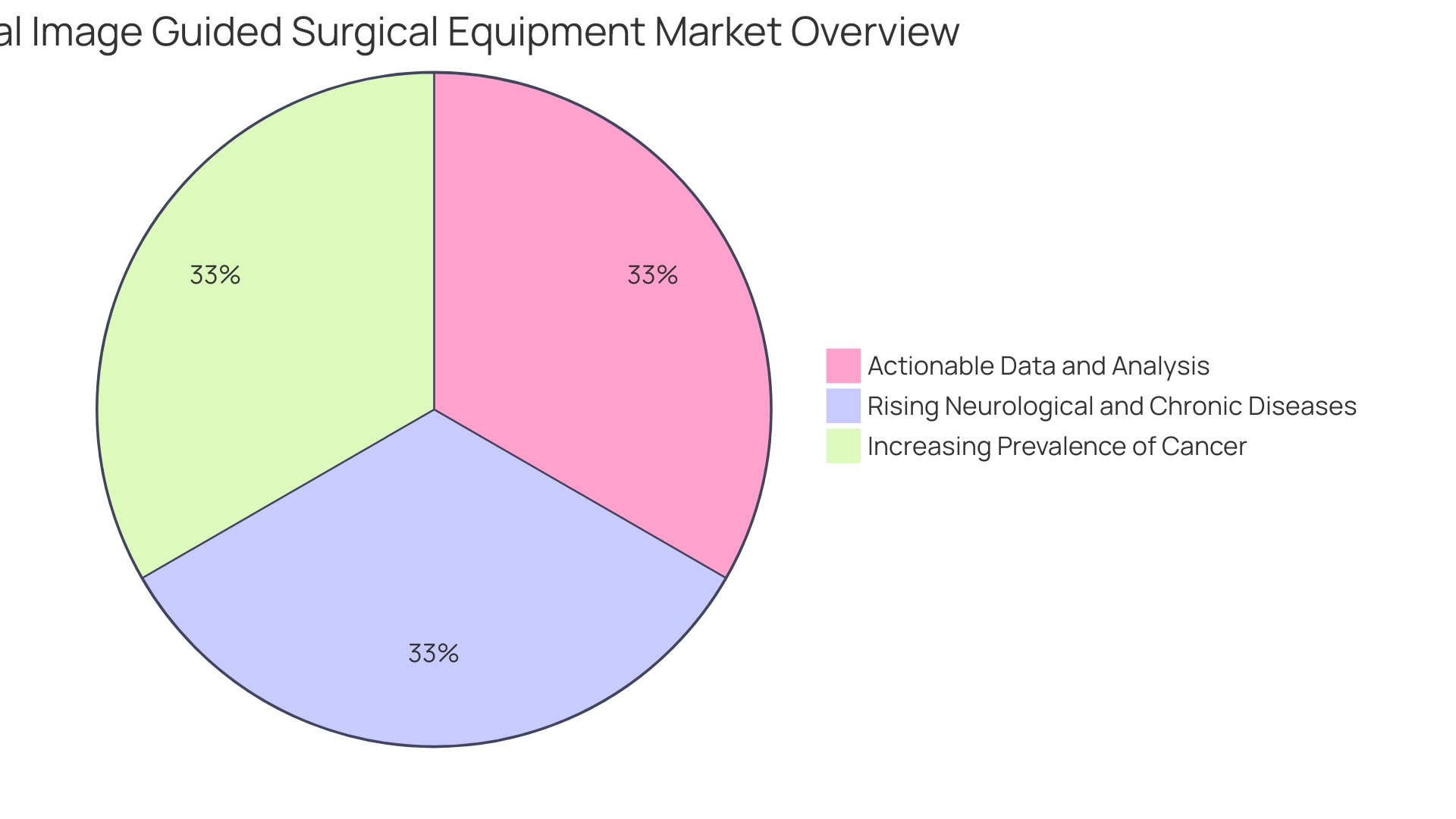
Robotic Process Automation (RPA) in Various Sectors
Robotic Process Automation (RPA) represents a significant leap in business technology, allowing the deployment of software robots, or ‘bots’, to carry out repetitive, rule-based digital tasks. Across industries such as finance, human resources, and customer service, RPA is transforming the way tasks like data entry, document processing, and report generation are performed. An astounding 80% of financial operations are ripe for automation, according to Accenture, which could drastically reduce the time employees spend on mundane tasks and allow them to concentrate on strategic initiatives that enhance customer satisfaction and business growth.
By tackling the manual processes that are best suited for automation, organizations can address inefficiencies and pave the way for a substantial return on investment. Integration of RPA software requires careful planning and consideration of factors such as the cost and time of implementation, the potential for ROI, and how well existing systems can adapt to new software. The introduction of RPA leads to a shift in focus towards more value-added activities, driving productivity and customer contentment.
The financial sector, for example, has been revolutionized by AI-powered technologies, which not only streamline operations but also extend crucial services like credit evaluation to underrepresented segments, enhancing financial inclusion. In the realm of manufacturing, the increase in industrial automation, particularly in the automotive and electronics sectors, reflects the growing presence of advanced machinery, with 3.5 million units worth $15.7 billion in use globally. Moreover, customer satisfaction can improve as businesses employ RPA to provide quicker and more accurate responses to inquiries, a crucial factor for small businesses looking to scale operations and maintain strong customer relationships.
As sectors navigate the complexities of integrating automation, the conversation around economic impact, job displacement, and job creation becomes more prevalent. While automation may replace certain roles, it also opens up new opportunities for workforce development and stability. The future of automation is not only reshaping our work and economic landscapes but also enhancing our day-to-day interactions with technology by automating complex processes and fostering efficiency across various sectors.
Autonomous Vehicles and Drones
The landscape of transportation and logistics is on the cusp of a radical transformation, fueled by advancements in autonomous technology. Imagine fleets of self-driving vehicles seamlessly navigating the roads, with the potential to significantly enhance safety and reduce the bottlenecks of traffic congestion. These autonomous cars and trucks aren’t just concepts; they’re becoming a reality and are set to redefine the efficiency of road travel, also promising a reduction in fuel consumption through optimized routes and driving patterns.
Simultaneously, the skies are buzzing with potential as drones take on roles beyond recreation. These nimble flyers are hard at work in aerial surveying, swiftly delivering packages to doorsteps, and even saving lives in search and rescue operations. Their integration into our daily lives is a testament to the innovative spirit of the transportation sector.
Take, for example, the award-winning “Last Mile” initiative, which is propelling city logistics into a new epoch with its autonomous robots. Or consider Clevon’s partnership with DHL Express Estonia, where autonomous delivery vehicles have graduated from pilot projects to essential fleet components, shuttling packages across Tallinn and beyond. These are not isolated incidents but signs of a global movement towards smarter, more sustainable logistics.
Indeed, as the Automated Road Transportation Symposium (ARTS) showcases, the age of autonomy is not just about technology—it’s a confluence of social science, regulatory insight, and international collaboration. It’s where cutting-edge companies and global thought leaders come together to forge the future of autonomous transportation.
And the future is bright, bolstered by AI-driven innovations like the Waabi Driver, which promises to revolutionize autonomous trucking with its AI model that learns from diverse scenarios without the need for exhaustive real-world driving. This leap forward is timely, considering the logistics industry’s challenges, such as the estimated 20-35% of miles driven empty and a projected shortage of truck drivers reaching 160,000 by 2028.
In conclusion, as we gaze into this future of high-tech transportation, it’s not just about the vehicles or the drones themselvesâit’s about the seamless, interconnected network they create. An entity that is ready to provide unmatched efficiency, safety, and sustainability in the transportation of goods and services worldwide.
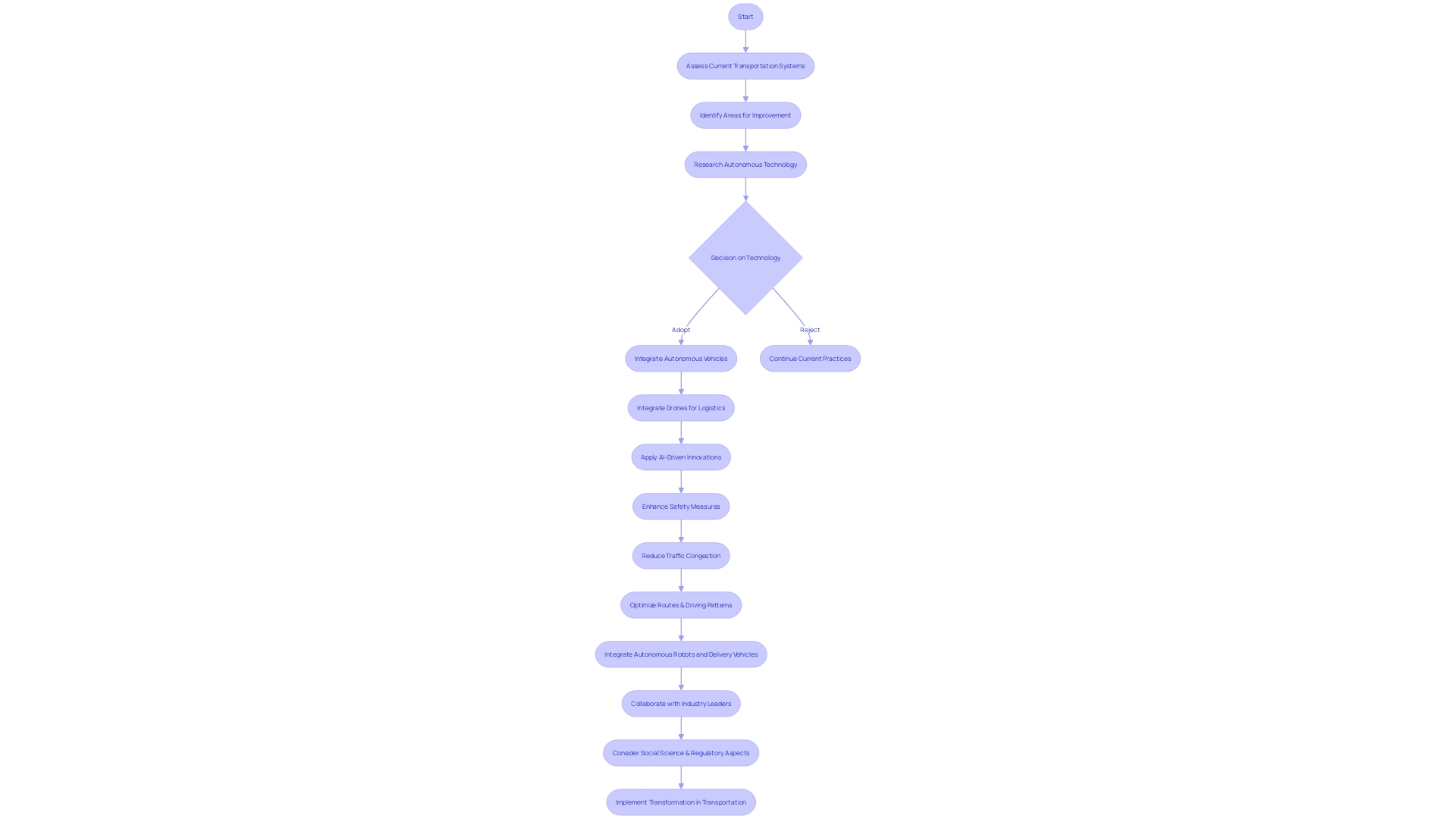
Navigation and Safety Considerations
Automated robotics are not just about technology; they are about trust and reliability. With the growing complexity of tasks and environments, these mechanisms must be equipped with sophisticated sensors and mapping algorithms to navigate without error. The potential consequences of a lapse in safety are starkly illustrated by the unfortunate incident involving a GM Cruise robotaxi in San Francisco, which led to severe injury and highlighted the importance of robust collision avoidance and emergency response systems. To avoid such events, it is paramount that safety features like emergency stop buttons and barriers are integrated to protect human workers.
The autonomous navigation market is on a steep upward trajectory, driven by a high demand for machines that can operate independently and safely. These automated machines are not only expected to navigate their surroundings but also to interact seamlessly with humans and IoT devices, execute intricate tasks, and adapt to dynamic environments, such as those found in warehouses. According to Phani Teja Singamaneni, the scope of research and application in this field is broadening, with substantial opportunities and challenges on the horizon. This sentiment is echoed by The Business Research Company, which emphasizes the need for comprehensive data to bridge supply-demand gaps and identifies the growth of the autonomous navigation market as a response to the increasing need for automated machines.
In this environment, the progress of autonomous mobile machines (AMMs) that can navigate using SLAM (Simultaneous Localization and Mapping) is just the start. To ensure the success of deployment efforts, robots must excel at avoiding unexpected obstacles, maneuvering safely when loaded, operating with intermittent internet, and performing precise actions. These capabilities are critical, not just for the completion of tasks, but for maintaining safety standards. As the industry continues to evolve, the dialogue around autonomous navigation is increasingly centered on safety, with policy analysts like Aswin Prabhakar at the Center for Data Innovation emphasizing the balance between data and technology to enhance road safety.
Ultimately, the advancement and implementation of automated machines are inherently connected to their capacity to navigate and guarantee safety in an increasingly automated society. It is a balance of technology, safety, and the ongoing pursuit of improvement that will define the reliability and secure operation of these systems.
Applications in Transportation and Logistics
The adoption of automated robotics in the transportation and logistics sector is revolutionizing the way goods are handled and delivered. From the bustling warehouses of Europris in Norway, which has successfully consolidated six warehouses into one automated logistics center, to the innovative use of autonomous trucks by companies like Aurora and Volvo Autonomous Solutions, the field is witnessing a remarkable transformation. These advancements are not just about efficiency but also about adapting to the evolving demands of the market. For instance, the work of GrayMatter Robotics in employing AI to enhance human productivity speaks to the synergistic relationship between technology and human expertise. Moreover, startups like Convoy are addressing sustainability by reducing empty miles driven by trucks, showing that automation can also contribute to environmental stewardship. With the integration of autonomous delivery services like Clevon into the operations of DHL Express Estonia, the potential for technology to expand and improve service offerings is clear. As these automated solutions become more ingrained in logistics operations, they advance the sector’s ability to meet the challenges of today and tomorrow.
In summary
As sectors struggle with the transformative power of automated machines, the scenery is being reshaped by the synergy of automated machines, artificial intelligence (AI), and machine learning. Companies like GrayMatter Robotics are spearheading this evolution, leveraging AI to enhance human productivity and the quality of manufacturing processes. Meanwhile, the marine industry giant Smoker Craft is harnessing advanced automation to maintain its tradition of innovation through high-end automation and test equipment.
These advancements are not confined to isolated sectors but are part of a global movement, as demonstrated at the 2024 World Robot Conference in Beijing. The event showcased over 600 robotic products and attracted a staggering 1.3 million attendees, underlining the massive interest in robotics applications across various fields, from household management to entertainment. The conference also highlighted the potential of humanoid automatons, with experts predicting a surge in their production over the next decade, akin to the pivotal ‘ChatGPT moment’
In manufacturing, the concept of digital twins is revolutionizing how we interact with physical systems. By developing virtual representations of gantry mechanisms, businesses can now simulate and analyze their performance, allowing for predictive maintenance and optimizing operations. This is further amplified by the rise of articulated robots, which offer unparalleled flexibility and precision due to their rotary joints and compatibility with the Industrial Internet of Things (IIoT).
The data generated by leading factories today is astronomical, with some producing multiple petabytes weekly. If replicated globally, this would double the amount of human information in less than a month. Such immense data generation underscores the ‘S-curve’ trajectory of industrial revolutions, as outlined by experts in the field. After an extended period of learning, sectors are now actively implementing fundamental technologies and transitioning to an optimization phase where new standards are established.
Kevin Reader and Brian Pulfer, prominent voices in the field, emphasize the strong expansion of the field, with an expected global increase from $114.7 billion in 2023 to $258.3 billion by 2028. This growth is not just in deployment numbers but also in the research and development of new robotic solutions, expanding the industry’s impact across various operational facets.
To fully utilize the potential of automated systems, organizations must also be vigilant about cybersecurity risks, advocate for open automation standards, and explore the capabilities of virtual solutions like digital twins. Embracing these technologies positions organizations to achieve unprecedented levels of efficiency, productivity, and innovation, steering them towards a future where automated robotics is integral to their success.
Conclusion
In conclusion, the integration of robotics in industrial automation is revolutionizing sectors like manufacturing, healthcare, and logistics. Robots bring precision, speed, and adaptability to perform tasks efficiently. Advancements in robotics, such as digital twins and gantry robots, exemplify operational efficiency and the impact of the Industrial Internet of Things (IIoT).
AI technologies, like Large Language Models (LLMs) and virtual environments, enable robots to understand and execute tasks autonomously. The demand for industrial automation engineers has surged as industries prioritize integrating robots with robust cybersecurity measures. This integration creates a safer, more efficient production environment backed by data, AI, and innovative engineering solutions.
Robotics extends beyond manufacturing. In healthcare, surgical robots offer precise and minimally invasive procedures, while telemedicine robots enable remote monitoring and consultations. In logistics, robots optimize inventory management and enhance speed and accuracy in delivery services.
These applications illustrate the practical solutions offered by robotics in various industries.
Virtual solutions, like digital twins and offline programming, provide a safer environment for testing and optimizing robotic systems. Open automation standards ensure interoperability and collaboration among different robotic systems, driving innovation.
Navigation, safety, and cybersecurity are crucial considerations in robotics integration. Autonomous navigation systems with sophisticated sensors and mapping algorithms ensure safe operation. Industrial cybersecurity measures and open automation architectures protect robotic systems from cyber threats.
In transportation and logistics, robotics transforms handling and delivery. Autonomous vehicles and drones streamline operations and enhance safety. Robotic process automation (RPA) improves efficiency in tasks like data entry and document processing.
Overall, the integration of robotics in industrial automation empowers industries to tackle challenges, enhance productivity, and drive innovation. By embracing robotics, organizations can achieve operational excellence in a rapidly evolving landscape. This creates a safer, more efficient production environment backed by data, AI, and innovative engineering solutions.
Introduction
Robotic Process Automation (RPA) and Artificial Intelligence (AI) are revolutionizing the way businesses operate, offering unparalleled efficiency and productivity gains. The integration of RPA and AI allows organizations to automate routine tasks, make data-driven decisions, enhance customer experiences, and optimize resource allocation. From improving compliance and risk management to transforming finance, HR, and customer service, these technologies are reshaping diverse industries.
Real-world examples and case studies demonstrate the practical applications and benefits of RPA and AI, while future trends highlight the continued evolution and potential of these technologies. By embracing RPA and AI, businesses can unlock new levels of operational excellence, innovation, and success in the digital age.
Understanding RPA: Automating Repetitive Tasks
Robotic Process Automation (RPA) stands at the forefront of streamlining workflows, offering a powerful tool to automate a myriad of repetitive and structured tasks. By deploying software bots that emulate human interactions with digital systems, RPA is adept at performing duties ranging from data entry and managing transactions to orchestrating entire workflows and handling customer service queries.
These bots are more than mere task executors; they serve as pivotal components in connecting disparate systems, thereby liberating human workers from the monotonous drudgery of routine tasks. For instance, Specsavers, a global eyecare retailer, faced challenges with their legacy equipment in optometry, which was robust yet not designed for modern data transfer methods. Implementing RPA allowed them to bridge the gap between old and new systems, enhancing their operational efficiency despite a complex supply chain and customized processes.
Moreover, within academia, such as the Department of Electronic & Electrical Engineering at the Faculty of Engineering and Design, RPA has proven instrumental. The department utilized RPA to streamline the recording of student attendance and comments during personal tutorials, thus replacing a previously cumbersome system and freeing up valuable time for coordinators.
Companies like Coding Crafts, a Custom Software Development Company, highlight the significance of embracing RPA and Intelligent Automation (IA) to stay competitive. They stress that advancements in mechanization, incorporating blockchain integration for additional security and transparency, are essential for enterprises aiming to prosper in a changing technological environment.
The growth of RPA is emphasized by convincing data, indicating that a majority of enterprises are in an advanced stage of process improvement maturity, with a focus on enhancing and perfecting their processes. Surprisingly, more than half of these businesses expect to see a return on investment within the initial year of implementing workflow enhancement.
In the grander scheme, embracing RPA is not merely adopting new technology; it’s a strategic imperative that paves the way for the future of work. It empowers employees, streamlines operations, and unleashes the full potential of artificial intelligence, ensuring that enterprises remain agile and innovative in an ever-changing market.
Understanding AI: Simulating Human Intelligence
Artificial Intelligence (AI) transcends the realm of science fiction and anchors itself firmly into the fabric of our modern world. AI systems are designed to emulate human cognition, enabling them to learn from experiences, identify patterns, make informed decisions, and execute tasks that traditionally require human intellect. Recent advancements have seen AI technologies enhance automation, transforming operational landscapes across diverse sectors.
AI’s influence is particularly evident in its ability to process and analyze vast datasets, unveiling patterns and insights that often elude human analysis. Such capabilities have profound implications for scientific discovery, healthcare, economics, and social sciences, propelling knowledge and informing strategic decisions. For example, studies published in journals like Nature Machine Intelligence highlight the exponential growth of AI-related scientific publications, underscoring the technology’s pivotal role in research development.
Moreover, the ethical and responsible application of AI is paramount. Transparency regarding AI’s strengths and limitations, adherence to human values, and ongoing system refinement are essential to maintain societal trust and alignment with ethical standards.
The potential of AI extends into creative domains as well, challenging traditional notions of innovation. AI systems, such as those with empathetic response capabilities, can provide valuable support in areas like mental health or customer service by analyzing and responding to emotional cues in a manner consistent with empathetic human interaction.
Despite AI’s impressive capabilities, challenges persist, particularly in the quest for Artificial General Intelligence (AGI). AGI represents the zenith of AI development, aiming to match or surpass human cognitive abilities across a broad spectrum of tasks. Companies like OpenAI are at the forefront of this research, seeking to integrate logic and learning in AI systems akin to human development. However, current models, which emphasize scale to achieve general intelligence, grapple with issues like computational resource consumption and interpretability. A study in Nature Computational Science introduces an ‘internal complexity’ approach inspired by brain neuron dynamics, offering a novel perspective on achieving AGI while addressing these challenges.
The incorporation of AI into operational activities has already started, with a 6.1% adoption rate among Canadian enterprises for generating goods and services, according to Statistics Canada’s Canadian Survey on Business Conditions. This highlights Ai’s increasing impact and the necessity for organizations to responsibly leverage its potential.
In essence, AI stands as a beacon of innovation and efficiency, with the promise of enhancing human well-being and transforming our approach to challenges across industries. It is both a testament to our ingenuity and a reminder of the need for careful stewardship as we navigate the unfolding AI revolution.
The Integration of RPA and AI: Intelligent Automation
Combining RPA with AI generates a synergy where the precision of mechanization meets the flexibility of cognitive technologies, opening the door for intelligent mechanization. This strong partnership is transforming the manner in which enterprises function, enabling the streamlining of not only regular duties but also intricate procedures that necessitate decision-making and knowledge acquisition from previous encounters.
To explore the possibilities of intelligent technology, it is crucial to grasp the essence of RPA. Automation Technology, commonly known as RPA, deploys software robots to emulate human actions within digital systems, handling tasks like data entry, transaction processing, and workflow management. The recent surge in RPA adoption has been transformative, offering businesses the ability to automate tasks across diverse applications and platforms, significantly freeing up human resources for more strategic endeavors.
Intelligent mechanization takes RPA a step further by incorporating AI’s cognitive abilities, thereby enhancing process mechanization. It starts by identifying repetitive, rule-based activities ready for mechanization. Stakeholders are then involved in analyzing these processes to outline the journey towards mechanization. The fusion of AI and RPA tools solidifies into intelligent process models, laying the groundwork for more refined and advanced solutions.
Real-world applications demonstrate this integration’s significance. For instance, Lindy, an AI assistant, automates a variety of tasks using a network of integrated apps and services. Despite the complexity of these integrations, the result is a smooth and effective task execution, highlighting the practicality of intelligent technology in diverse workflows.
Current trends in technology, such as the emergence of generative AI, are reshaping R&D operations across industries. This change reflects the transformative impact of intelligent technology, as observed in the automotive industry, where software now plays a crucial role in distinguishing products and services. The coming together of these technologies highlights the significance of intelligent mechanization in propelling innovation.
As the Intelligent Automation Conference 2024 approaches, the anticipation for insights into the future of this field is palpable. The event promises to provide a wealth of knowledge on leveraging intelligent technology to drive organizational innovation and efficiency.
In summary, intelligent mechanization, through blending RPA’s effectiveness with Ai’s creativity, presents a holistic resolution for enterprises to elevate their procedures, make informed choices, and ultimately improve productivity and outcome quality. It represents not just a technological advancement but a strategic tool for achieving digital transformation in the modern corporate environment.
Benefits of Combining RPA and AI
Utilizing the synergistic power of Robotic Process Automation (RPA) and Artificial Intelligence (AI) can usher in a new era of automation, resulting in significant advantages. By integrating RPA with AI, organizations can achieve unparalleled accuracy in their operations, significantly enhance their efficiency, substantially reduce operational costs, and effortlessly scale their processes to meet the growing demands of the market.
The transformative potential of combining RPA with AI lies in its ability to automate not only routine, rule-based tasks but also to bring intelligent decision-making into the fold. For instance, automating identity verification and basic inquiries such as order statuses has become a starting point for many retailers. By handling these high-volume, low-complexity tasks, businesses can provide faster, more accurate responses to customers, thereby increasing satisfaction and loyalty.
Moreover, beginning small with focused mechanization projects enables organizations to tackle specific pain points without overhauling their entire system at once. By giving priority to the mechanization of existing channels and manual tasks that are repetitive and costly, companies can see a quicker return on investment. Continuously monitoring these initiatives is essential for ensuring that the desired goals are met and for documenting the results, which can guide future automation efforts.
In the current climate of technological disruption, industries are recognizing the need to adapt and evolve. The integration of RPA and AI is not only enhancing the way organizations operate but is also empowering them to make more informed decisions and to pursue digital transformation with confidence.
As businesses look to the future and seek to navigate the rapid advancements in technology, it is imperative to partner with a technology provider that can offer cutting-edge solutions, such as Blockchain Development Services, to add an additional layer of security and transparency. This holistic approach to automation, combining the tactical execution of RPA with the cognitive capabilities of AI, is setting the stage for innovation and growth in the digital age.

Industry Applications of RPA and AI
Across multiple sectors, from finance to healthcare, manufacturing to customer service, Robotic Process Automation (RPA) and Artificial Intelligence (AI) are making waves by enhancing operational efficiencies and customer experiences. Take the financial industry, where institutions harness AI to sift through vast amounts of data – market trends, regulatory changes, and client details – to give employees the actionable knowledge they need promptly. One such innovation is an AI-powered chatbot, which acts as a knowledge assistant, offering precise, context-driven information around the clock and ensuring compliance with the latest financial regulations.
In healthcare, predictive analytics are being employed to anticipate patient needs and improve care delivery. For example, the adoption of AI in service production is early but growing, with a focus on operational efficiency improvement noted by organizations. In the manufacturing realm, AI-driven solutions are optimizing back-office functions and reducing service costs, where companies like J.P. Morgan have been utilizing AI for payment validation and queue management, enhancing productivity.
Customer service has also been transformed by AI, with chatbots providing instant, personalized support. But it’s not just about customer-facing roles; AI is driving innovation in embedded finance, integrating financial services into non-financial platforms. This fusion of AI with embedded finance is poised to combat fraud and manage risks more effectively.
The ethical implications of AI cannot be ignored, however. With trials in UK train stations revealing Ai’s potential to enhance safety and operational efficiency, it’s crucial to ensure that privacy rights are respected and biases are avoided. Similarly, the defense sector is cautiously advancing, using AI for surveillance without weaponization, and setting a precedent for responsible use.
As we embrace this knowledge worker-based industrial revolution, it is vital to continuously improve and refine processes. Hyperautomation represents not just a technological leap but a strategic necessity, unlocking Ai’s potential and heralding the future of work. With generative AI contributing significantly to business functions, particularly in marketing, sales, and product development, it’s clear that AI is no longer a luxury but a necessity in staying competitive in today’s AI-driven world.
Transforming Finance, HR, and Customer Service
RPA and AI are transforming the way organizations operate, especially in finance, HR, and service. For instance, leading financial institutions are adopting AI-powered knowledge assistants to handle the deluge of data such as market trends, regulatory updates, and client information. These virtual advisors, operating on platforms like AWS, use generative AI to provide employees with immediate, accurate information, thereby reducing delays and improving decision-making.
In HR, RPA tools streamline repetitive tasks, freeing up time for strategic work. By automating functions like payroll processing and benefits administration, HR professionals can focus on employee engagement and talent management.
Customer service has also been transformed by RPA and AI. AI chatbots are capable of handling routine inquiries 24/7, which enhances response times and client contentment. Moreover, they can learn from interactions to provide more personalized service over time.
The integration of RPA and AI brings tangible benefits to an organization, including increased efficiency, reduced errors, and improved user experiences. These technologies are not just about cutting costs but also about enabling innovation, as shown by the World Economic Forum’s report in collaboration with Accenture, highlighting the significant impact of AI in IT, finance, and customer service roles.
The journey towards implementing these technologies should be governed ethically, considering data ownership and privacy, as outlined in Microsoft’s Responsible AI Standard. As experts suggest, AI should be viewed as a co-pilot, augmenting human capabilities rather than replacing them. The future of work with AI promises not just job replacement but the creation and evolution of new roles, ensuring a dynamic and thriving workforce environment.
Enhancing Operational Efficiency and Productivity
Robotic Process Automation (RPA) and Artificial Intelligence (AI) are revolutionizing how businesses operate, offering unprecedented efficiency and productivity gains. By automating manual tasks and reducing errors, RPA enables employees to dedicate their time to more strategic activities. For example, Louvre Hotels Group experienced transformative results by implementing RPA in rate code maintenance, saving 188 hours monthly on headers and 386 on details. Similarly, Delivery Hero addressed the challenge of account lockouts affecting their 53,000 employees by automating the recovery process, significantly reducing downtime and IT workload.
The possibility of mechanization extends beyond basic tasks, with AI and generative AI enriching the technology’s capabilities. From extracting data off documents to structuring unstructured information, these technologies are creating more intelligent automated workflows. SS&C Blue Prism’s document automation is a testament to this evolution, marking a shift towards more complex process execution.
Understanding the mechanics of RPA is crucial. Bots can adeptly handle data entry, transaction processing, and interactions, connecting disparate systems to liberate employees from repetitive tasks. As enterprises gaze at the horizon, embracing RPA can enhance client contentment by providing quicker, more precise responses, cultivating allegiance and facilitating organizational growth.
The implementation of RPA and AI is not just about adopting new technologies but also about strategic planning. Mapping processes, identifying stakeholders, and evaluating complexity versus ROI are essential steps. Starting with simple tasks like identity verification can provide quick wins and lay the foundation for more advanced applications.
Experts in the industry promote a client-focused strategy, creating resolutions that improve the experiences of clients and bring concrete advantages. As AI integration becomes more prevalent, companies are urged to align their AI strategies with clear objectives to avoid solutions without a defined purpose. By doing so, firms like Delivery Hero and Louvre Hotels Group have reaped significant rewards, proving the effectiveness of a well-orchestrated RPA and AI strategy.
Improving Compliance and Risk Management
RPA and AI are transforming the landscape of compliance and risk management by providing sophisticated solutions that streamline operations and enhance regulatory adherence. For instance, when a healthcare provider in the NHS seeks to introduce a new digital technology, a meticulous digital assurance process is initiated. This process begins with a thorough assessment to ensure the technology is secure, appropriate, and compliant with the necessary standards. Such due diligence often reveals existing solutions within the organization that can meet the same needs, thereby avoiding unnecessary expenditure and complexity.
Similarly, in the banking sector, M&T Bank has embarked on a digital transformation journey, prioritizing the implementation of Clean Code standards across its software development to maintain the highest levels of security and regulatory compliance. This proactive approach is critical in an industry where the cost of non-compliance and software mishaps can lead to significant financial losses and reputational damage.
Moreover, the investment world is also recognizing the importance of governance in AI integration. The Norges Bank Investment Fund, a major global investor, advises its portfolio companies on responsible AI adoption to bolster economic outcomes. This highlights the need for boards to collectively grasp Ai’s relevance in their operations and establish comprehensive policies.
In the realm of workplace safety, companies like Soter Analytics are leveraging AI-driven wearable devices to ensure compliance with strict regulations from bodies such as the Occupational Safety and Health Administration. This not only streamlines the compliance process but also provides predictive insights to preempt and mitigate risks.
These examples underscore the increasing reliance on RPA and AI to automate and improve compliance processes, perform risk assessments, and ensure regulatory conformity. From healthcare and banking to investment and workplace safety, automated technologies are providing organizations with the tools to manage risks more effectively and remain compliant in a rapidly evolving digital landscape.
Data-Driven Insights and Decision-Making
Harnessing the synergy of RPA and AI, organizations are revolutionizing the way they approach data analysis. By extracting meaningful insights from expansive datasets, these technologies are the cornerstone of data-driven decision-making. The process of analyzing large datasets to identify patterns and generate actionable insights can be exemplified by the NHS’s digital-assurance process. Here, the Digital Service Team conducts a thorough assessment to determine if the new digital technology meets security, appropriateness, and compliance standards. This meticulous approach mirrors the analytical rigor required in leveraging RPA and AI for business intelligence.
Moreover, in the hospitality industry, AI is transforming revenue management, previously considered a domain exclusive to human expertise. An AI-driven revenue management system (RMS) is now being adopted by hotels to optimize pricing strategies, demonstrating Ai’s capacity to enhance complex decision-making processes. This is a testament to the way AI and RPA are being integrated across various industries to improve efficiency and outcomes.
The evolving landscape of decision support systems (DSS), equipped with scalable knowledge databases, advanced algorithms, and intuitive user interfaces, has been instrumental in this shift. With data science becoming increasingly crucial, as highlighted by the surge in its adoption, the role of RPA and AI in distilling data into knowledge cannot be overstated. By identifying the key purpose of data and generating insights from accurate sources, organizations are empowered to make economically advantageous decisions, driving innovation and securing a competitive edge.
Customer Experience and Personalization
The incorporation of RPA and AI into service strategies enhances personalized interactions and elevates delivery, fundamentally transforming the experience. For instance, Shake Shack, by harnessing Qualtrics AI, was able to rapidly analyze data, gaining valuable insights that informed their marketing strategies and product offerings. Their experience demonstrates the significance of efficient communication in promoting new ideas, such as their Cascara Shake, to individuals.
Similarly, Holiday Extras, a leading European travel extras provider, has faced the challenge of delivering personalized marketing and client support across various languages. To address this, they leveraged AI and a data-driven culture to scale their operations, empowering even non-technical employees to engage with data and contribute meaningfully.
In the retail industry, businesses are increasingly using AI to automate service tasks, such as verifying identities and handling order inquiries, with data indicating that up to 70% of requests can be automated. Retail Technology Review highlights that over 63% of retail companies use AI to enhance their service to consumers, indicating a notable industry shift towards these technologies. The objective is not only to optimize operations but also to promote loyalty, a challenge that AI, combined with human insight, is uniquely positioned to address.
By focusing on tasks that are manual, repetitive, and costly, companies can identify the greatest opportunities for RPA and AI implementation. The results speak for themselves, with many organizations experiencing quick wins by starting with low-complexity tasks and gradually expanding their use of AI to revolutionize customer service and secure a competitive edge.
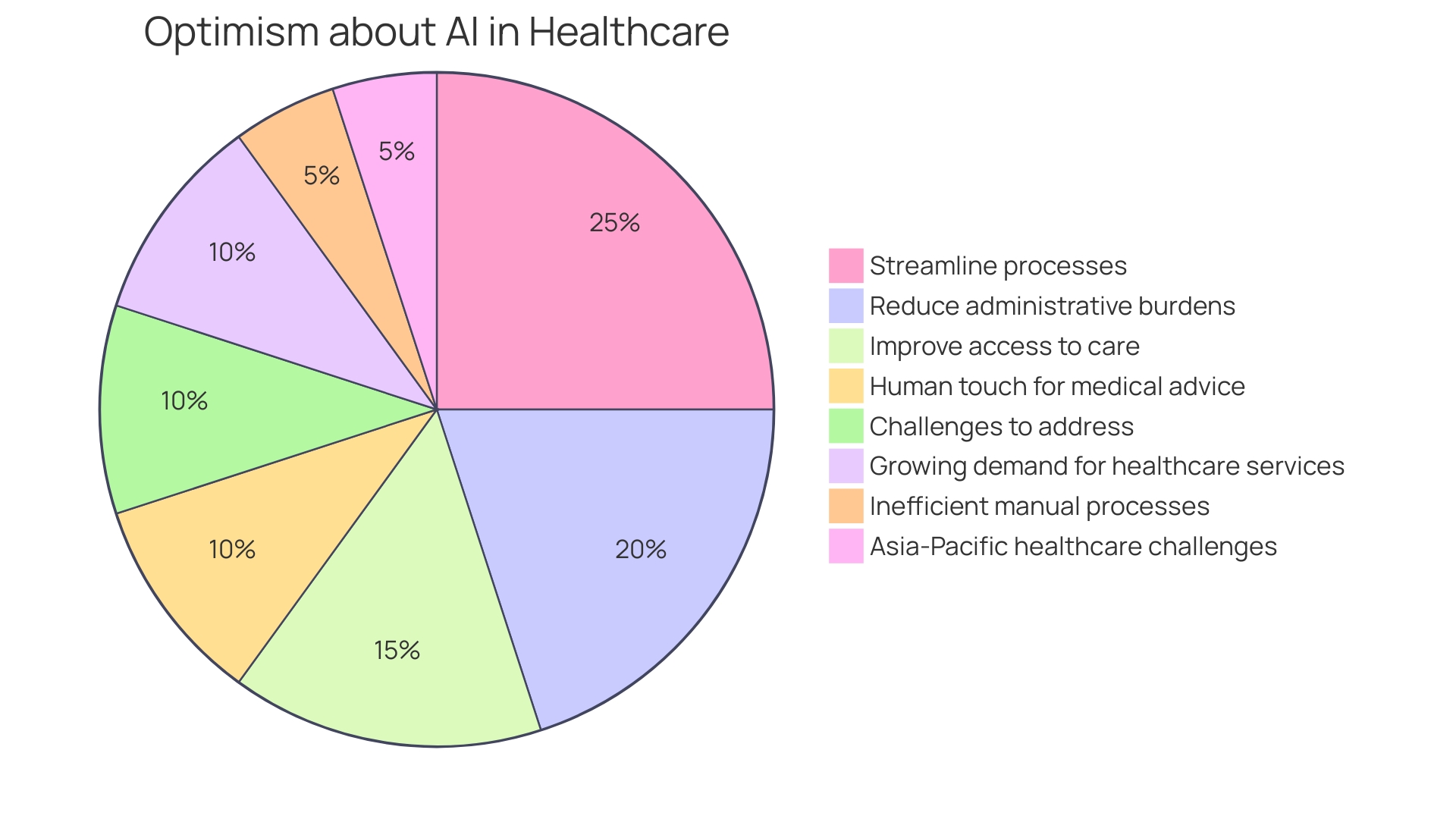
Cost Savings and Resource Optimization
Robotic Process Automation (RPA) coupled with Artificial Intelligence (AI) stands as a transformative force in streamlining operations, with cost savings and resource optimization at its forefront. By automating manual tasks traditionally performed by humans, businesses not only achieve efficiency but also unlock the potential for substantial financial benefits.
Strategic automation begins with identifying manual processes ripe for RPA integration. Through careful analysis, organizations can pinpoint inefficiencies and measure the investment needed against the projected return on investment (ROI). Common starting points include automating identity verification or simple customer queries, which, despite their simplicity, can lead to significant quick wins.
In practice, the adoption of digital technology follows a thorough assessment to ensure any new tool meets stringent security and compliance standards. For instance, within the NHS, the Digital Service Team leads a ‘digital-assurance process’ to evaluate the suitability of requested technologies which has unveiled that many solutions sought were already in use unbeknownst to the requestors.
The importance of AI in the corporate world is being increasingly acknowledged by leaders, as highlighted by Alysa Taylor, corporate VP for Azure and Industry at Microsoft. Organizations are exploring Ai’s potential, yet the challenge remains to convert this potential into tangible financial value. Meanwhile, RPA, a key component of intelligent automation, has evolved from executing simple tasks to integrating AI, enabling more complex and nuanced process automation.
In conclusion, the journey towards operational excellence through RPA and AI is marked by strategic decision-making, a focus on low-complexity tasks for immediate gains and a vision for long-term value creation. As enterprises persist in investigating the potential of these technologies, the prospect of a more efficient, cost-effective future becomes increasingly tangible.
Overcoming Implementation Challenges
When it comes to introducing RPA and AI into the operational fold, several common stumbling blocks can arise. To navigate these effectively, it’s crucial to focus on processes and stakeholders from the outset. For instance, low-complexity tasks such as automating identity verification and order inquiries can pave the way for quick wins and provide a clear understanding of the ROI involved.
However, diving headfirst into a Big Bang IT project can be a pitfall. Such undertakings often engulf the entire team’s bandwidth and delay the realization of ROI, sometimes leading to a loss of momentum and enthusiasm. Instead, adapting existing technologies can be a more time and cost-efficient approach. As one expert notes, starting from scratch isn’t always the best move when pre-existing solutions can adapt to current needs.
In terms of project management, it’s advisable to have a cross-functional team, including members from project management, logistics, and IT. Newcomers and IT departments in isolation may struggle to handle such projects effectively. Keeping the lines of communication open with regular meetings can maintain team motivation and highlight the significance of their contributions.
User interviews play a pivotal role in user experience design, reminding us that deeply understanding the end-users’ needs is essential. Similarly, for RPA and AI initiatives, understanding the internal stakeholders’ perspectives is crucial for successful implementation.
Dr. Evan Shellshear emphasizes that AI has the potential to ignite innovation and enhance customer engagement dramatically. Furthermore, AI implementation is increasing across various functions, with marketing and sales taking the lead. This surge in AI integration signifies its importance in maintaining a competitive edge in the current business landscape.
In conclusion, while implementing RPA and AI presents challenges, a strategic approach that values simplicity, cross-functional collaboration, and a deep understanding of user needs can lead to a successful and efficient digital transformation.
Real-World Examples and Case Studies
Exploring the transformative power of RPA and AI through real-life stories, let’s delve into how diverse industries are embracing these technologies to tackle challenges and enhance their operations. For instance, OnCall Health by Qualifacts, which provides telemedicine services, grappled with the tedious process of creating numerous patient forms. Previously reliant on manually handling JSON files, a time-consuming task that could take hours, they searched for a more efficient solution to manage the growing number of forms required by their clients.
Similarly, in the media sector, Medien Hub Bremen-Nordwest, in collaboration with Mediensystempartner (MSP), sought the ideal AI platform for their online product and client management needs. The outcome was a noteworthy enhancement in service for clients, with concerns being attended to in mere seconds, a stark contrast to the lengthy wait times previously endured.
In the realm of healthcare, Summer Health confronted the issue of time-consuming medical visit notes. This administrative burden, often consuming over half of medical professionals’ time, detracted from patient care and contributed to clinician burnout. By revolutionizing this process, they aimed to reclaim valuable time for healthcare providers.
These anecdotes not only illustrate the practical applications of RPA and AI but also underscore the importance of selecting the right digital tools. A strategic approach often begins with a thorough assessment, ensuring the technology is secure and aligns with existing solutions. This approach is epitomized by the digital-assurance process initiated by the NHS, leading to the discovery of previously unknown existing technologies within the organization.
Encapsulating the essence of RPA and AI, these narratives serve as a beacon for other organizations aspiring to streamline their operations. They emphasize the significance of pinpointing manual, repetitive tasks as ideal candidates for automation, with potential for substantial ROI. As experts suggest, the most impactful gains often emerge from simplifying low-complexity tasks, rather than pursuing the most advanced technological frontiers. With Ai’s capability to enhance personalization and safety across various industries, from construction to manufacturing, it’s clear that its integration is not just about innovation but also about creating meaningful customer experiences and ensuring the well-being of employees. These case studies and insights equip organizations with the knowledge to innovate, maintain a strategic edge, and enhance their processes.
Future Trends in RPA and AI Integration
As we navigate the constantly changing landscape of robotic process (RPA) and artificial intelligence (AI), it’s evident that the integration of these technologies is not just a passing fad but a cornerstone of future business innovation. With the infusion of machine learning, natural language processing, and predictive analytics into RPA, the possibilities for enhancing operational efficiency and gaining a competitive edge are boundless.
Machine learning algorithms are becoming more and more skilled at identifying patterns and making data-driven decisions, opening the door for smarter and more adaptable solutions. For instance, in the healthcare sector, AI-driven request forms and initial assessments have streamlined the adoption of new digital technologies, ensuring secure and compliant integration while uncovering existing, underutilized solutions.
Natural language processing has transformed customer service interactions, exemplified by the success story of Medien Hub Bremen-Nordwest, where a Voicebot facilitated by AI platform Parloa and implementation partner SC Soft from Hamburg, surpassed expectations by drastically reducing complaint processing times, demonstrating the profound impact on customer satisfaction.
Furthermore, predictive analytics is transforming the landscape of mechanization by not only responding to the present but also predicting future requirements and trends. This proactive approach is evident in the realm of home automation, where IoT devices are gradually becoming an integral part of daily living, with the smart home automation market projected to reach a staggering $40 billion.
These advancements in RPA and AI integration are not without their challenges, however. As we move forward, it’s crucial to set clear timelines and success criteria to ensure strategic alignment and to navigate the ethical implications associated with AI, such as privacy concerns raised in the use of facial recognition technology in UK train stations and the TSA’s facial recognition program.
In conclusion, the future of RPA and AI integration is brimming with potential, promising to revolutionize the way businesses operate and interact with their customers. By embracing these technologies, organizations can not only enhance their current operations but also set a course for long-term innovation and success.
Conclusion
In conclusion, the integration of RPA and AI revolutionizes business operations, offering unparalleled efficiency and productivity gains. Real-world examples demonstrate the practical applications and benefits of RPA and AI across diverse industries.
Implementing RPA and AI offers substantial benefits, including increased accuracy, enhanced efficiency, reduced costs, and improved customer satisfaction. By automating routine tasks and leveraging data-driven insights, organizations can optimize resource allocation and make informed decisions.
While implementing RPA and AI presents challenges, a strategic approach that values simplicity and cross-functional collaboration can lead to successful implementation. By addressing pain points and starting with low-complexity tasks, organizations can achieve quick wins and lay the foundation for more advanced applications.
Looking ahead, the future of RPA and AI integration is promising. Advancements in machine learning and predictive analytics are reshaping the automation landscape, enabling more intelligent and adaptive solutions. However, it is crucial to set clear timelines, navigate ethical implications, and align AI strategies with business objectives.
By embracing RPA and AI, businesses can unlock new levels of operational excellence, innovation, and success in the digital age. These technologies offer practical solutions to streamline operations, enhance customer experiences, and drive long-term growth. The future of work lies in the intelligent automation powered by RPA and AI, where businesses can thrive and stay competitive.
Unlock operational excellence and innovation with RPA and AI
Introduction
Automation is revolutionizing industries by introducing software robots capable of executing tasks across various systems, freeing up human workers to focus on more complex problems. The importance of automation, particularly in Excel, cannot be understated. Despite the advent of sophisticated tools, many businesses still rely on spreadsheets for various tasks.
This reliance, while comfortable, can lead to inefficiencies. However, with proper implementation, automation can enhance productivity and accuracy. In this article, we will explore the importance of automation in Excel, the features and benefits of the Automate tab, the potential of Office Scripts, the use of Excel add-ins for automation, the integration of Excel with tools like SharePoint and OneDrive, best practices for choosing the right automation solution, troubleshooting common issues with Excel automation, and future trends and innovations in Excel automation.
By understanding and embracing the power of automation in Excel, individuals and organizations can unlock significant efficiency gains and maintain a competitive edge in an increasingly automated business landscape.
Understanding the Importance of Automation in Excel
Automation, especially Robotic Process Automation (RPA), is transforming the way industries function by introducing software robots capable of performing activities across multiple systems, freeing up human workers to concentrate on more intricate issues. RPA’s ability to seamlessly connect and automate workflows has shown substantial efficiency gains, as seen in educational settings like the Department of Electronic & Electrical Engineering, where administrative tasks are streamlined, or at St. James Winery, where decades of tradition meet modern efficiency to maintain their competitive edge.
A Morgan Stanley report highlights the transformative effect of technologies like spreadsheets, which reshaped the accounting profession by reducing the need for traditional bookkeepers while increasing demand for accountants and financial managers. This reflects a wider pattern where mechanization not only alters the character of jobs but also generates new opportunities and roles.
The International Federation of Robotics reports a surge in industrial robots with 3.5 million units worldwide, particularly in the automotive and electronics sectors, highlighting the crucial role of technology in today’s economy. Service industries also witness expansion, with chatbots and virtual assistants becoming common, highlighting the significance of AI in streamlining processes.
Despite the advent of sophisticated tools, 70-80% of businesses still rely on spreadsheets for various tasks. This dependence on familiar technology, while convenient, can result in inefficiencies, suggesting a significant opportunity for mechanization to improve productivity and accuracy.
As the conversation about job displacement versus creation persists, it is crucial to acknowledge the equilibrium that technology can bring to the workforce. With proper implementation, it can supplement human labor, leading to a more efficient and innovative workplace. For those starting their journey into the realm of automated processes, the statistics and trends for 2024 reveal a promising future where workflow streamlining becomes an essential component of business strategy.

Using the Automate Tab in Excel
The Automate tab in the spreadsheet software unlocks a realm of productivity, enabling users to leverage the capabilities of automation to efficiently manage repetitive tasks. By utilizing Office Scripts in the spreadsheet software, you can revolutionize the way you handle records, like purchase orders. Instead of manually updating and moving completed orders, you can write a script to automate this process, reducing the potential for errors and streamlining your workflow. This script will specify the precise location and action for each piece of information, ensuring precision and consistency in your document management.
Advancing the process of automating tasks, the recent updates from the well-known spreadsheet software have introduced features such as synchronizing form data with Excel for the web and adding images to cells. Moreover, the integration of Python with Copilot in Excel is set to combine one of the most popular programming languages with the power of Excel, opening up even more possibilities for automation.
Robotic Process Automation (RPA) is at the forefront of this technological wave, employing software robots to emulate human actions across various systems, thereby liberating your time for more strategic tasks. RPA can handle data entry, transaction processing, and workflow execution, seamlessly connecting disparate systems to work as one.
Workflow mechanization is another aspect of this technology, aimed at automating intricate business processes to lessen manual intervention. As almost every enterprise deals with recurring activities, the adoption of workflow mechanization is becoming crucial. The trend is so widespread that statistics suggest an astonishing 94% of corporate executives favor utilizing a unified platform for app integration and process streamlining.
By comprehending the potential of automation in spreadsheets and beyond, you can unlock substantial efficiency gains, guaranteeing your operations are better structured, free from errors, and focused on the activities that genuinely demand your expertise.

Creating and Modifying Office Scripts
Office Scripts provide a powerful method to automate repetitive tasks, streamline workflows, and reduce the risk of errors. For instance, managing a dynamic list of current and completed Purchase Orders in Excel can become a hassle as it grows. Instead of manually updating order statuses, filtering, and transferring information between sheets, Office Scripts can handle these operations efficiently. By creating a script, you can specify the exact actions required, such as changing the status of orders to ‘Fully Supplied’ and moving them to the ‘Completed Orders’ sheet with precision, focus, and zero manual effort.
To get started, you simply name your script and set its location. Remember that scripts require clear instructions about where to find and how to manipulate data. They’re written in a case-sensitive code within curly brackets, starting with a ‘main’ function that includes the ‘ExcelScript.Workbook’ parameter. Using ‘let’ to define variables, a script ensures that managing your records is a smooth, error-free process.
Furthermore, recent enhancements in the Microsoft 365 app ecosystem highlight the ongoing commitment to productivity and ease of use. Personalized app recommendations and new features, such as direct file sharing from the Home screen, demonstrate Microsoft’s dedication to improving user experience. Based on the data from Microsoft, with a worldwide user base of 1.2 billion and availability in 35 languages, Microsoft Office continues to be an indispensable tool for diverse users worldwide.
Utilizing these advancements, Office Scripts enable users to optimize the functionality of the spreadsheet software, transforming intricate tasks into straightforward, automated processes. As Microsoft Office maintains a commanding presence in the market, with products like Word holding a 30.24% market share and 67% of small businesses relying on Microsoft products, embracing Office Scripts in Microsoft’s spreadsheet software is a smart move for anyone looking to boost productivity and maintain an organized workflow.
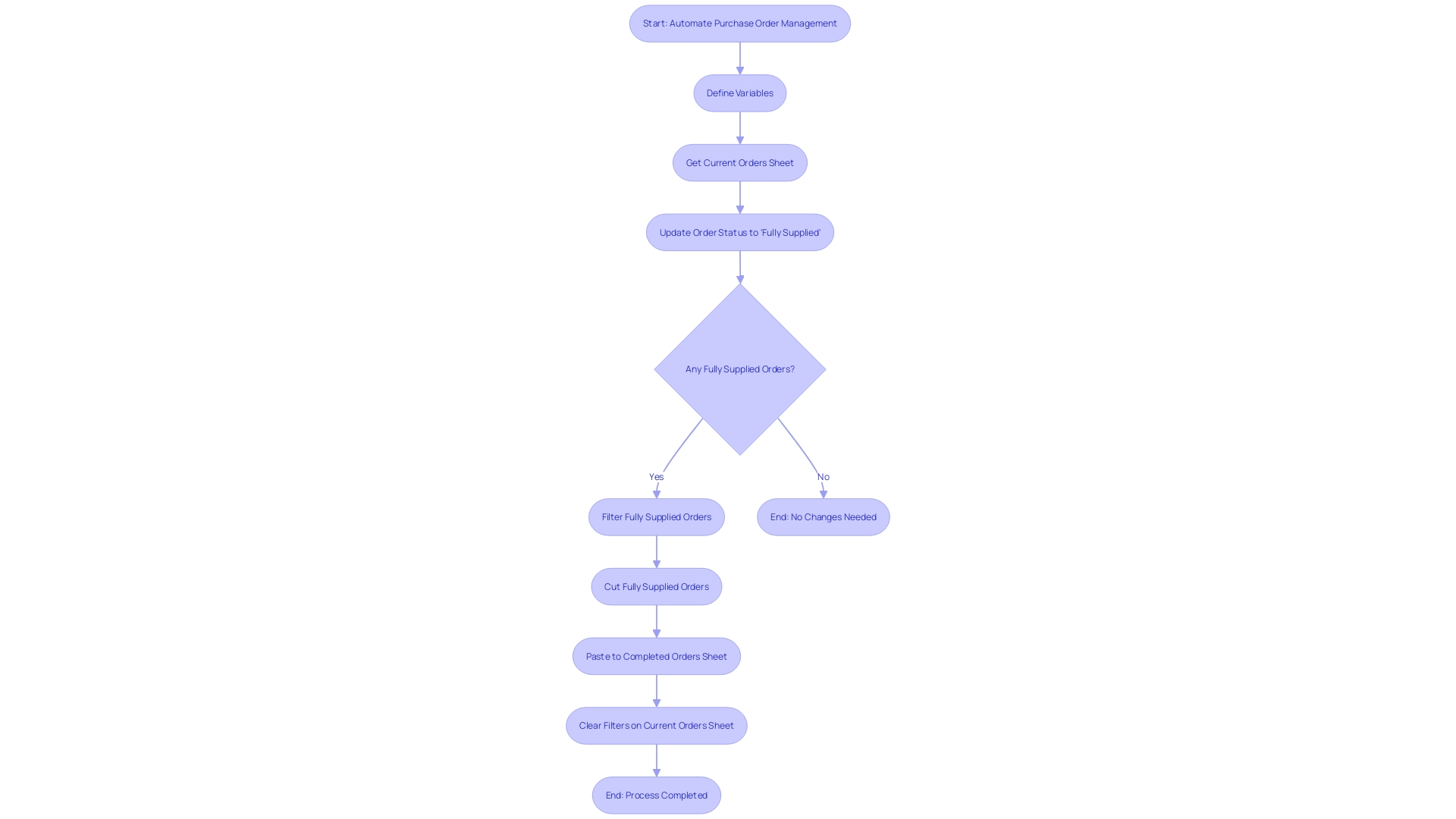
Utilizing Excel Add-ins for Automation
Harnessing the capabilities of add-ins in Microsoft Excel can greatly enhance your management and automation. These tools act as a bridge to a more efficient workflow, especially when handling repetitive activities such as updating and organizing records. Consider the everyday job of handling Purchase Orders in a spreadsheet program: manually keeping track of order statuses, transferring information, and ensuring clarity between current and completed orders. This process, while seemingly straightforward, can quickly become cumbersome and error-prone.
To tackle this, Office Scripts offer a sophisticated solution. By creating scripts tailored to your specific needs, you can automate the entire sequence of actions required to manage your Purchase Orders. The process begins with assigning a name to your script and saving its location. Precise instructions are key, ensuring the script knows exactly where to find and how to handle the data.
In a real-world application, Emma Davies from the Department of Electronic & Electrical Engineering streamlined the process of recording attendance and comments during personal tutorial sessions using the automation capabilities of a spreadsheet software. This not only saved time but also enhanced the accuracy of maintaining student records.
Furthermore, recent updates have additionally enhanced the functionality of the spreadsheet software. Users can now sync form information, insert pictures directly into cells, and benefit from enhanced PivotTables on various devices. These updates reinforce the fact that Excel remains at the forefront of data manipulation and visualization, providing users with powerful tools to analyze and represent data efficiently.
In the realm of formulas, the IF function stands out for its versatility in spreadsheet analysis. It enables conditional logic operations that empower you to make decisions and perform calculations based on specific criteria. Mastering such functions is fundamental to harnessing Excel’s full potential.
The increasing focus on mechanization across industries is demonstrated by compelling statistics: a staggering 94% of executives prefer a unified platform for app integration and process mechanization. This trend reflects the crucial role technology plays in maintaining a competitive edge in today’s market. By embracing the advanced features of Microsoft Excel, one can not only enhance productivity, but also thrive in a business landscape that is becoming increasingly automated.
Automating Data Entry and Workflow with Power Automate
Microsoft Power Automate is at the forefront of workflow streamlining, a technology that utilizes software, algorithms, and predetermined rules to automate and streamline complex business processes. Power Automate’s integration with spreadsheet software exemplifies this innovation, providing a strong resolution to automate tasks like entering information, thereby improving productivity and decreasing the occurrence of human mistakes.
Bosch, a pioneer in engineering and technology since 1886, has utilized such automated technologies to enhance its sustainability efforts. Their solid oxide fuel cell (SOFC) system, an emblem of high-efficiency and low-emission power, benefits from a digital twin that visualizes and monitors process parameters, optimizing cost and performance across the system’s lifecycle.
As businesses grapple with repetitive tasks—like managing permissions or sending notifications—a report from Zapier reveals that nearly all workers in smaller businesses encounter these monotonous chores. Here, Power Automate shines, transforming these duties into automated sequences that elevate employees’ roles.
A compelling illustration of Power Automate’s capabilities is seen in the Microsoft Power Platform, which nurtures collaboration between citizen developers and professional software engineers. Through a practical example, an organization could seamlessly integrate a registration form built with React into Power Automate, storing data in a spreadsheet. This kind of synergy is not only efficient but fosters a shared development environment.
Moreover, recent advancements announced at Microsoft’s Build developer conference highlight the integration of generative AI with Power Automate. This enhancement promises to take repetitive desktop workflows to new heights, allowing users to record and narrate actions, subsequently creating more resilient automation.
In the domain of spreadsheet software, Office Scripts offer a revolutionary method for automating workflows. Consider the situation of managing purchase orders in a spreadsheet software: repetitive tasks like updating order statuses and managing records can be automated, mitigating the risk of errors and boosting productivity.
With Microsoft Office’s staggering global user base of 1.2 billion and availability in 35 languages, it’s clear that such tools are not just widely used but are integral to various sectors. Power Automate, as part of this suite, stands as a testament to Microsoft’s commitment to facilitating efficient and inclusive work environments worldwide.
Integrating Excel with Other Tools Like SharePoint and OneDrive
Utilizing the capabilities of Microsoft Excel in combination with SharePoint and OneDrive can result in significant enhancements in information management and team cooperation. By integrating the spreadsheet software with these platforms, you establish a smooth workflow that enables the automatic transfer of information and streamlining of collaborative endeavors. For instance, utilizing SharePoint’s eSignature service enables document sign-offs without leaving the Microsoft ecosystem, ensuring security and efficiency. Meanwhile, the newly enhanced OneDrive experience, as unveiled in the event ‘Microsoft OneDrive: The Future of File Management is Here,’ provides users with swift access to both their own files and those shared within the organization.
The transformative potential of such integrations is best illustrated through practical scenarios. Consider the mundane activity of managing Purchase Orders in Excel, which involves repetitive filtering and data transfer between sheets. By automating these workflows, not only is the process accelerated, but the risk of human error is also significantly reduced. This move towards mechanization is promoted by Gartner, which, while remaining neutral, acknowledges the importance of such technological progress in their research publications.
Moreover, with Microsoft Office’s global accessibility, available in 35 different languages, and a user base of 1.2 billion people, these integrations have the potential to impact a wide audience. The ubiquity of Microsoft products in small business operations, with 67% relying on them, further illustrates the central role they play in modern professional environments. The anticipation around Microsoft 365 Copilot, which is projected to reach 6.9 million US knowledge workers by 2024, underscores the eagerness for tools that enhance productivity and simplify complex tasks.
In summary, by linking Excel with SharePoint and OneDrive, individuals and organizations can utilize these powerful tools to not only enhance efficiency capabilities but also foster a more efficient and collaborative work environment. As we continue to explore and understand the potential of diverse technologies, these integrations serve as a beacon, illuminating the path to innovation and operational excellence.
Best Practices for Choosing the Right Automation Solution
Prior to starting a mechanization endeavor, it’s crucial to recognize the objectives you aim to accomplish with the tools at your disposal. For instance, if the objective is to test software, whether it’s for web, mobile, or desktop platforms, you must consider the specific operating systems and environments that will be involved. The tale of Europris, Norway’s foremost discount retail chain, showcases the strength of strategic implementation of technology. By consolidating six warehouses into one state-of-the-art automated logistics center, Europris significantly enhanced its operational efficiency. This transition did not happen overnight—it was a meticulously planned journey spanning several years, executed in three well-thought-out phases, ultimately culminating in a fully automated warehouse with the capacity to handle 65,000 pallets, managed by advanced Vectura pallet cranes.
Harnessing mechanization goes beyond merely choosing tools; it’s about incorporating it into the fabric of organizational operations. DevOps, a philosophy that merges development and operations, exemplifies this through a suite of tools designed to automate and improve the software development lifecycle. By adopting practices such as continuous integration and delivery, infrastructure as code, and effective monitoring, companies can speed up product releases without compromising on quality, a testament to the transformative potential of these practices.
Test mechanization has become an essential component in delivering high-quality software. It’s especially beneficial for repeatable tests that are costly in terms of time, such as regression and performance testing. However, not all testing is suitable for mechanization, and discernment is key in deploying these technologies effectively.
Incorporating AI and analytics into automation strategies is becoming more and more essential, as they assist in transforming large quantities of information into actionable insights. Retail self-service is an example where successful implementations heavily rely on AI to analyze information and enhance customer experiences. Similarly, ERP and CMMS tools have evolved, allowing businesses to better manage and streamline operations by utilizing shop floor information more effectively.
The landscape of automated processes is continuously progressing, with the advent of AI and generative AI redefining the scope of what automated processes can achieve. From extracting information off documents to structuring unstructured information, the capabilities are expanding. Furthermore, reports emphasize the significance of comprehending the workforce’s satisfaction with automated projects and the need for a strategic approach to enhancing intelligent technology, underscoring the importance of informed tool selection and implementation.
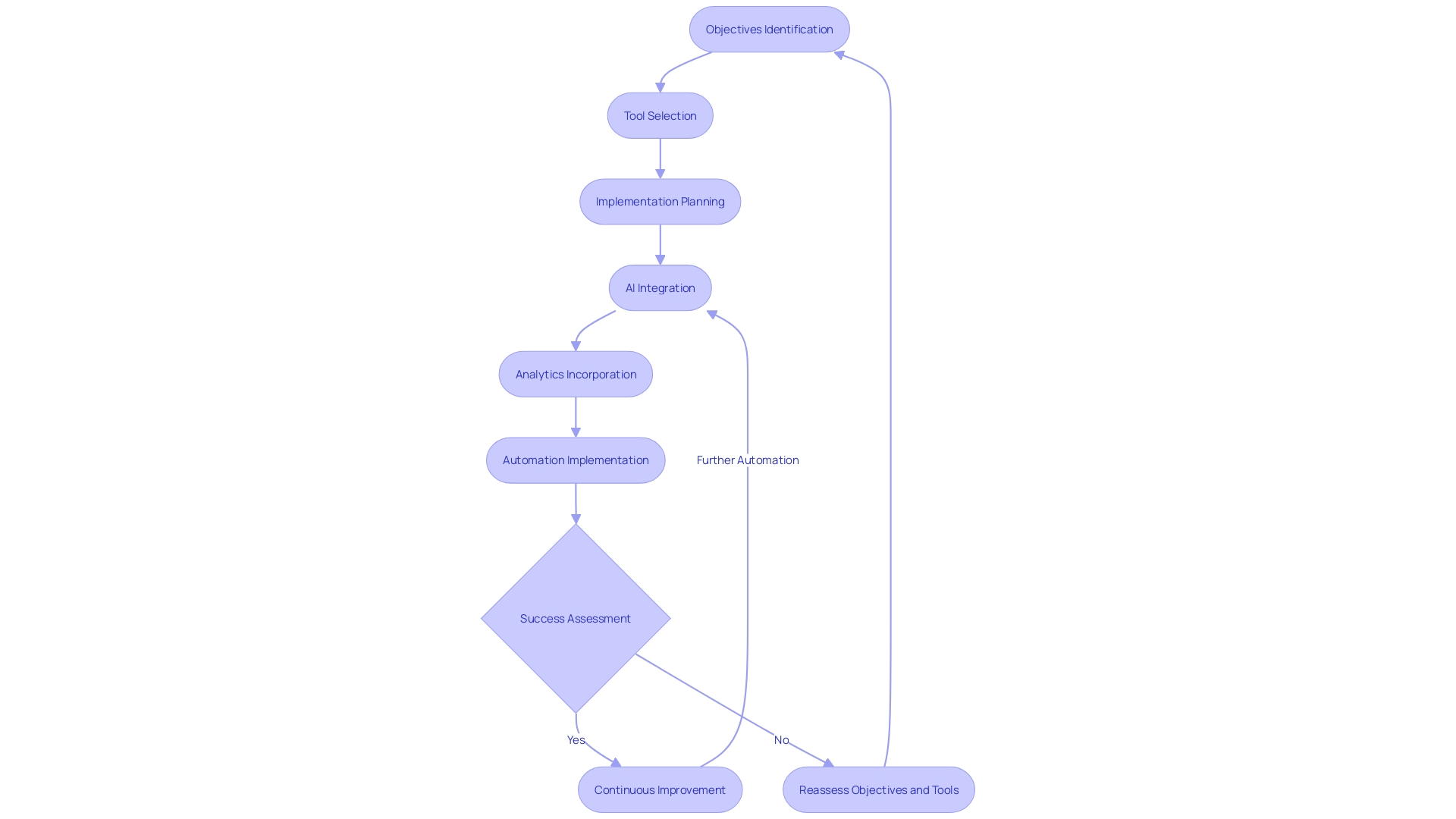
Troubleshooting and Common Issues with Excel Automation
The automation of spreadsheet processes has transformed the way we handle information, improving productivity and reducing mistakes in activities like updating and arranging records. For instance, automating the transfer of ‘Fully Supplied’ purchase orders from a current list to a completed orders sheet eliminates repetitive manual work and reduces the risk of mistakes. However, the efficiency of mechanization lies in the accuracy of the script. The code must be clearly directed to locate and manipulate the desired information, with case sensitivity and proper variable definitions being crucial.
Recent updates from the Product Manager of a popular spreadsheet application have further empowered users to control automatic data conversions that previously led to issues, such as misinterpreting gene codes as dates. Users can now adjust settings to prevent unwanted changes, addressing a long-standing source of frustration.
Despite these advancements, it’s important to acknowledge the inherent risks in spreadsheet management. Studies indicate that a staggering 90% of spreadsheets with over 150 rows contain errors. The complexity of detecting these mistakes necessitates a vigilant approach, where reviewing the code proves to be the most effective method, albeit not foolproof.
The path towards efficient mechanization is ongoing, and while challenges persist, the continuous enhancements and the strategic utilization of mechanization scripts ensure smoother processes, leading to an organized and error-minimized environment.
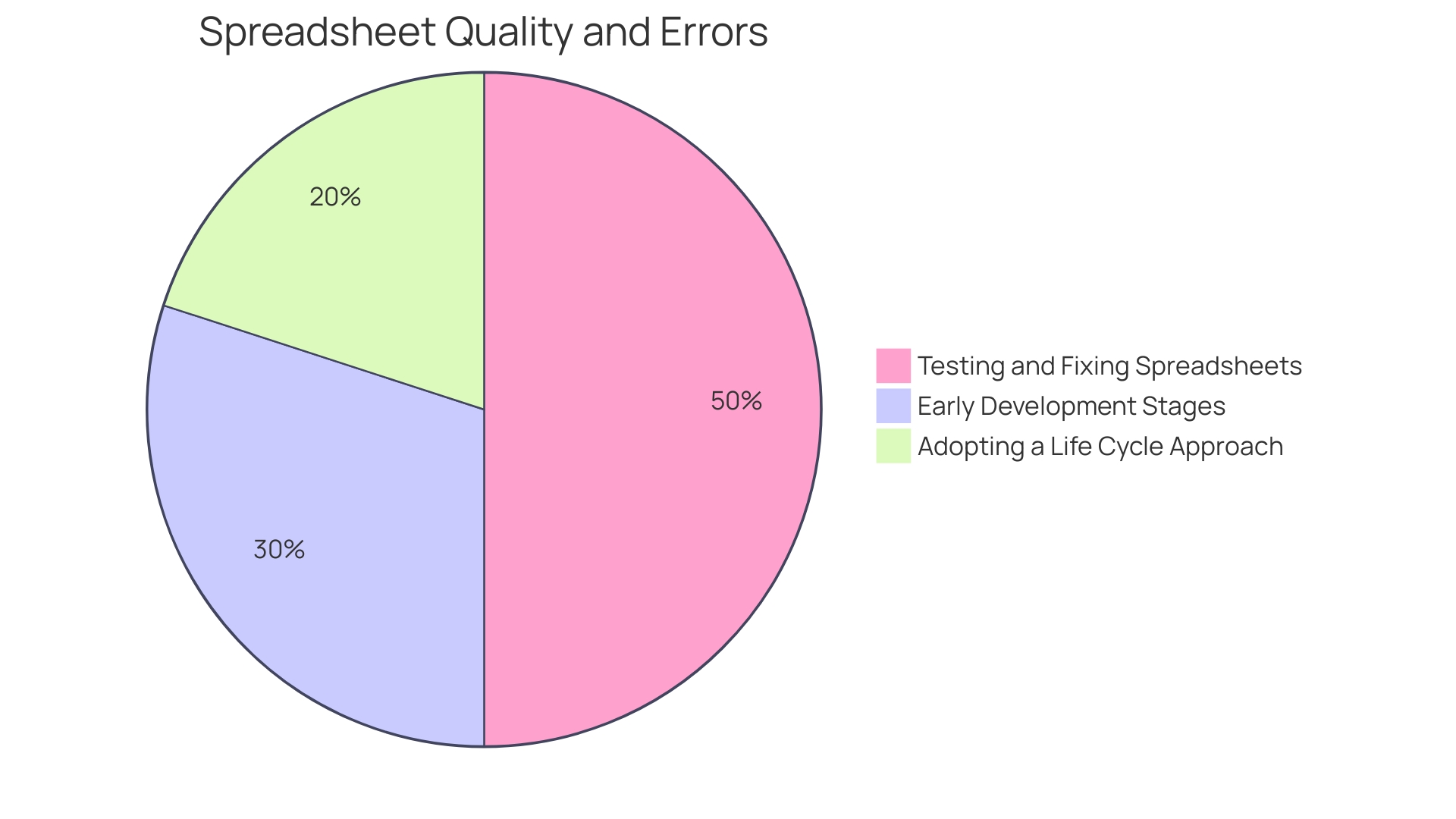
Future Trends and Innovations in Excel Automation
Spreadsheet automation is evolving rapidly, with tools like Excel Office Scripts leading the charge towards more efficient workflows. Instead of the monotonous and mistake-prone process of manually updating and sorting records, Office Scripts offers a solution to automate these activities. For instance, managing purchase orders in Excel can be simplified by scripting the steps to update order statuses, transfer completed orders to a separate sheet, and maintain a clear focus on pending tasks. This not only saves time but significantly reduces the chance of human error.
Office Scripts require specific instructions to locate and manipulate information, and they are case sensitive. Each script begins with a ‘main’ function and utilizes variables defined with ‘let’ to keep the code organized within curly brackets. St. James Winery, an award-winning winery with over 50 years of history, can also benefit from such automation to streamline their operations.
Historical data shows that the introduction of spreadsheets, particularly Microsoft’s popular spreadsheet software in the late ’80s, reshaped job roles rather than eliminating them. Morgan Stanley’s research shows that while bookkeeping roles declined, positions in accounting, auditing, and financial management expanded, evidencing the job-creating potential of such technologies. The extensive utilization of a widely recognized software, which is part of a globally used suite provided by Microsoft Office and accessible in 35 different languages, highlights its importance. While 67% of small businesses rely on Microsoft products, the ongoing advancements in Excel like Office Scripts promise to enhance operational capabilities.
In the context of automation technology, RPA (Robotic Process Automation) serves as a transformative force. It employs bots to execute tasks across various software platforms, freeing up human resources for more strategic endeavors. One of the most helpful spreadsheet formulas, the IF function, is a testament to the versatility and power of spreadsheet analysis. This function allows for conditional logic operations, enabling users to craft complex, decision-based calculations.
As automation technology advances, embracing tools like Office Scripts in Excel not only leads to increased productivity but also nurtures the creation of new roles and services. The shift towards automated processes is an essential step in staying competitive and efficient in today’s rapidly changing technological landscape.

Conclusion
In conclusion, automation in Excel is essential for businesses to enhance productivity and efficiency. With the Automate tab, users can streamline tasks and reduce errors. Office Scripts provide a powerful way to automate repetitive tasks and ensure precision in document management.
Excel add-ins elevate data management and automation capabilities, while integrating Excel with tools like SharePoint and OneDrive enhances collaboration and efficiency. When choosing an automation solution, organizations should consider their goals and needs, and leverage AI and data analytics for informed decision-making.
While troubleshooting is necessary, automation in Excel continues to evolve rapidly. Tools like Office Scripts lead the way in streamlining workflows and creating new roles. Embracing automation is crucial for organizations to stay competitive and efficient.
In summary, automation in Excel unlocks significant efficiency gains, empowering businesses to streamline workflows and maintain a competitive edge. With continuous advancements and strategic implementation, organizations can create an error-minimized environment and achieve operational excellence.
